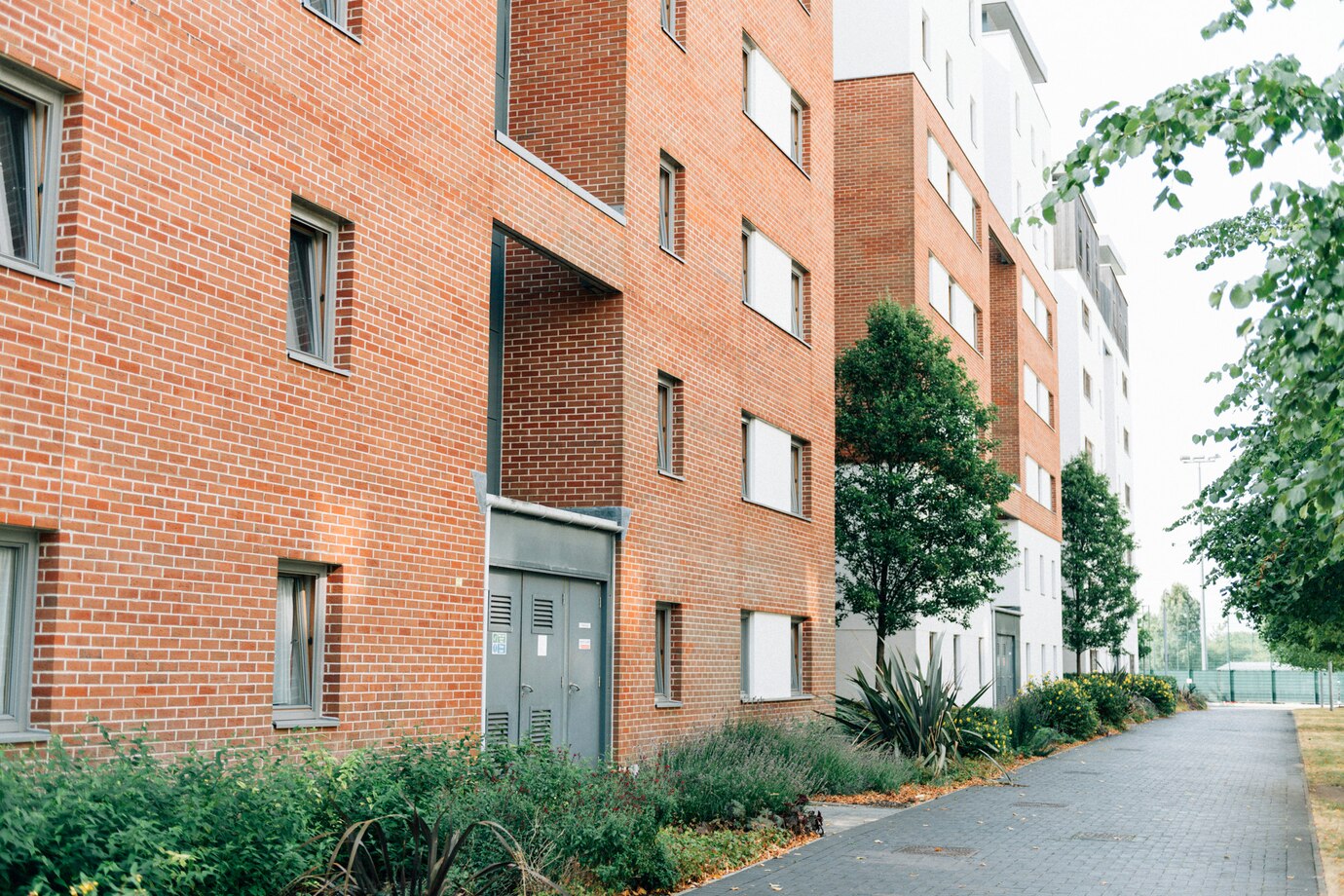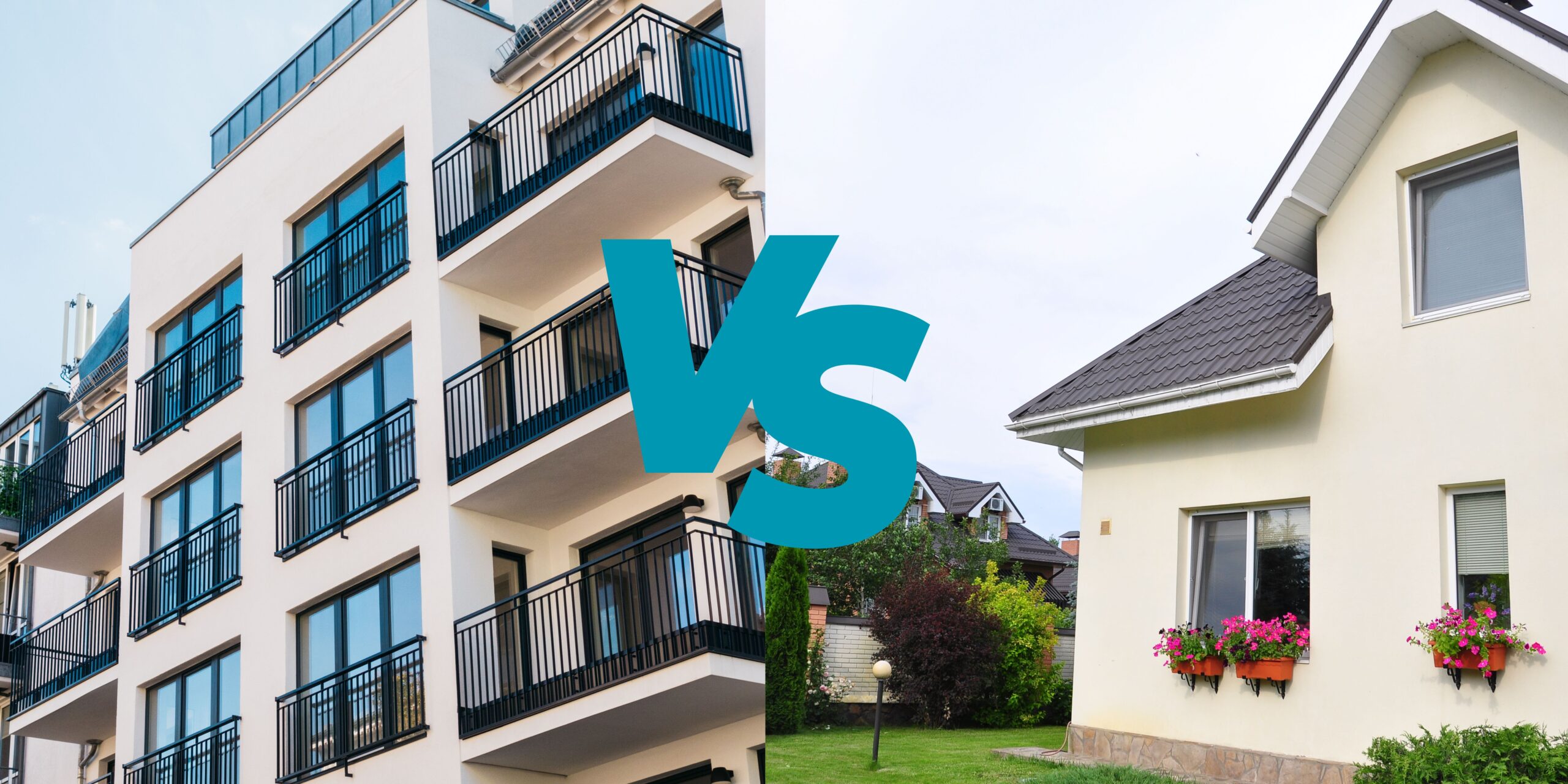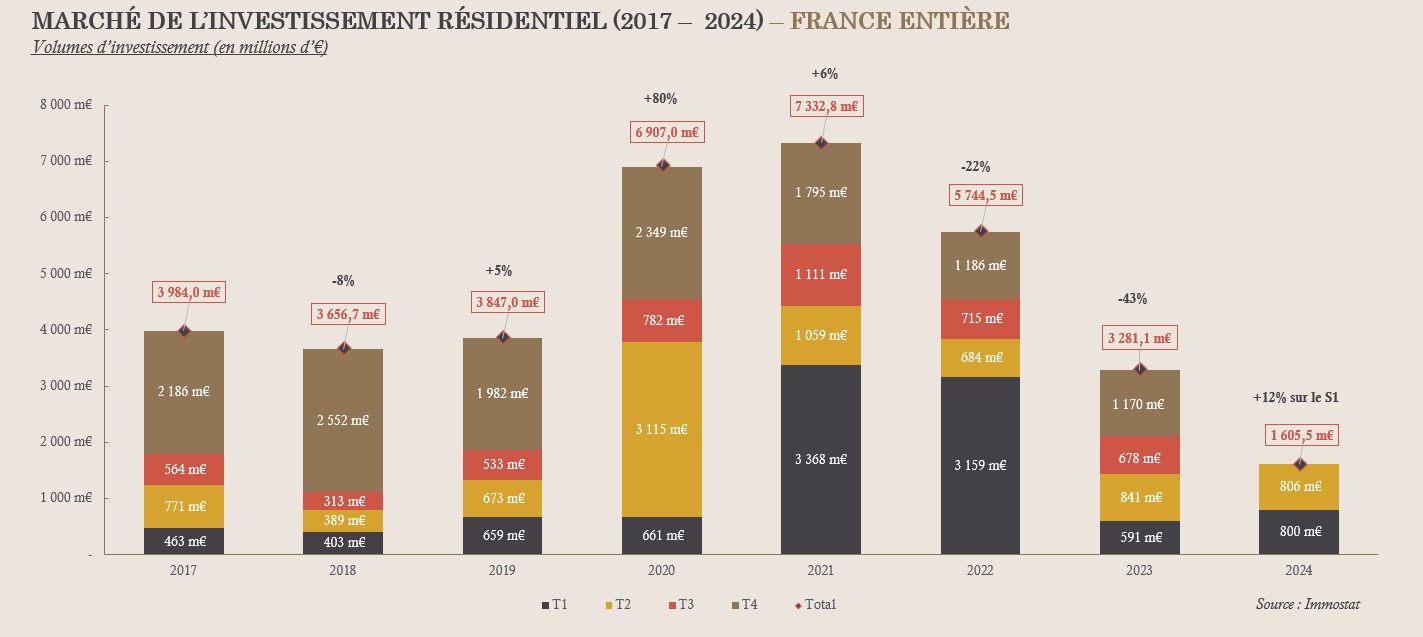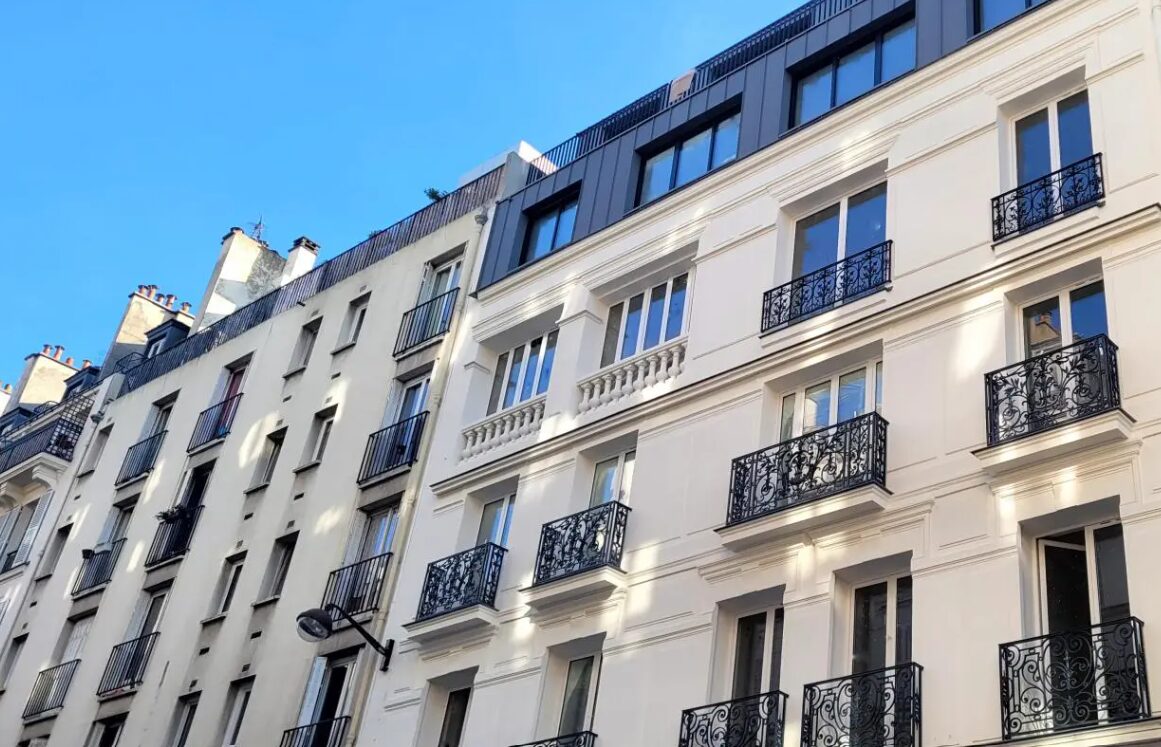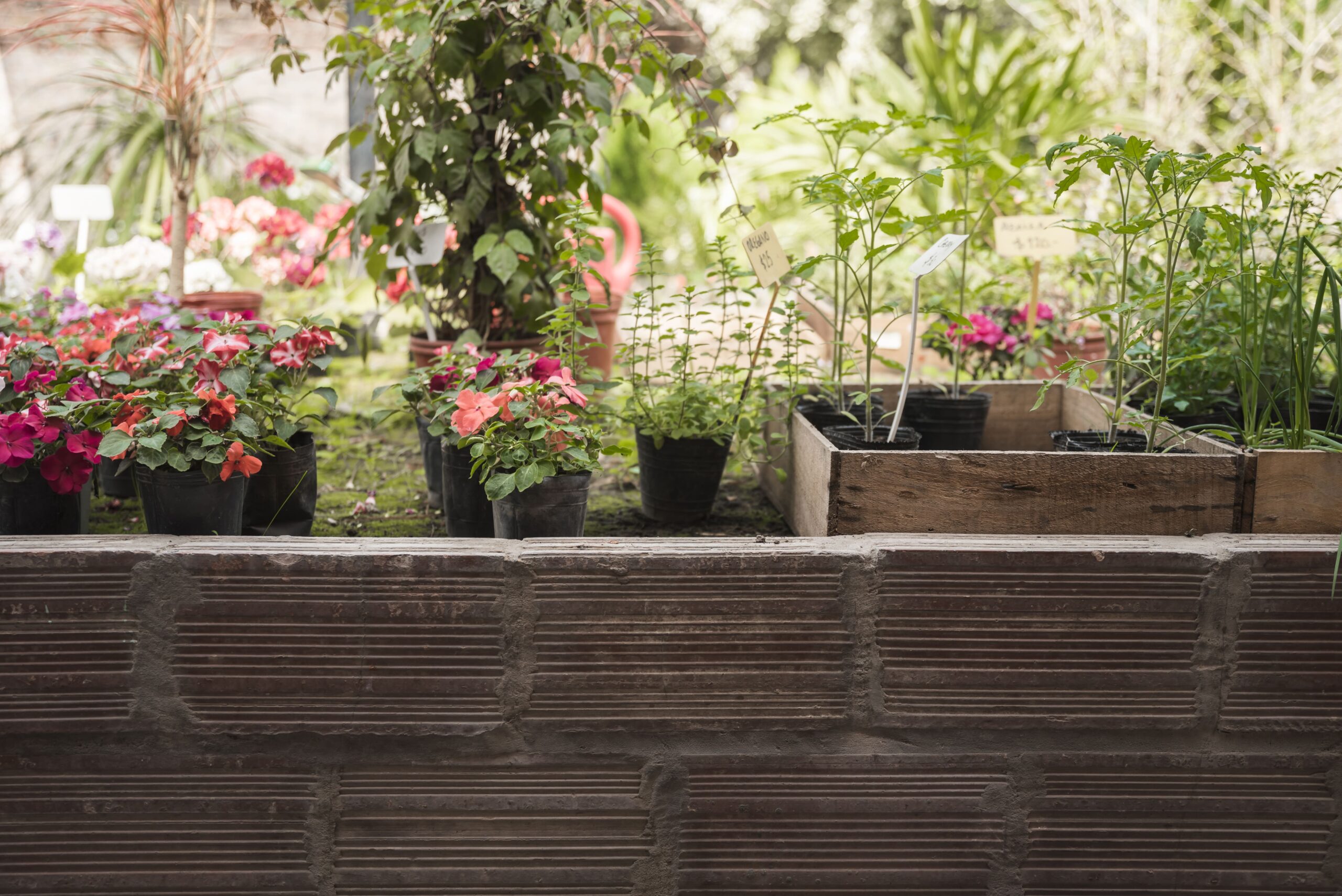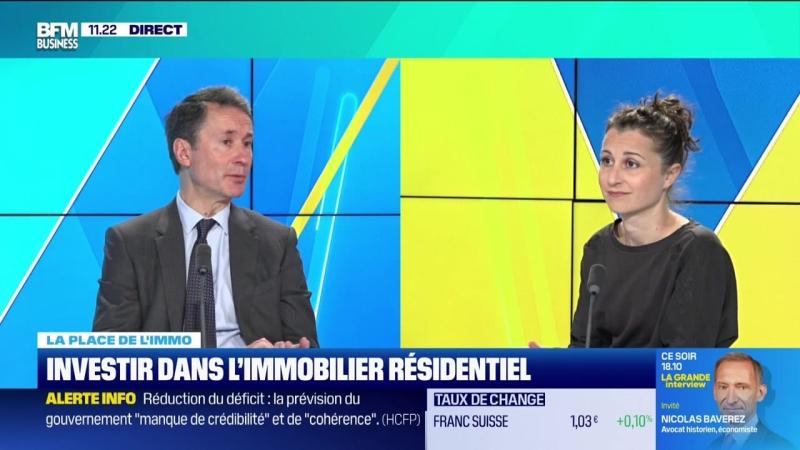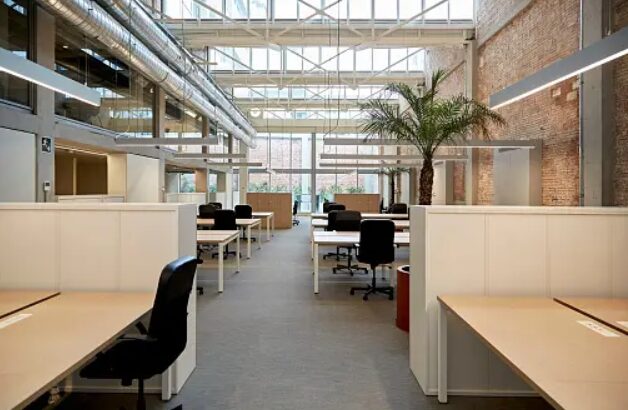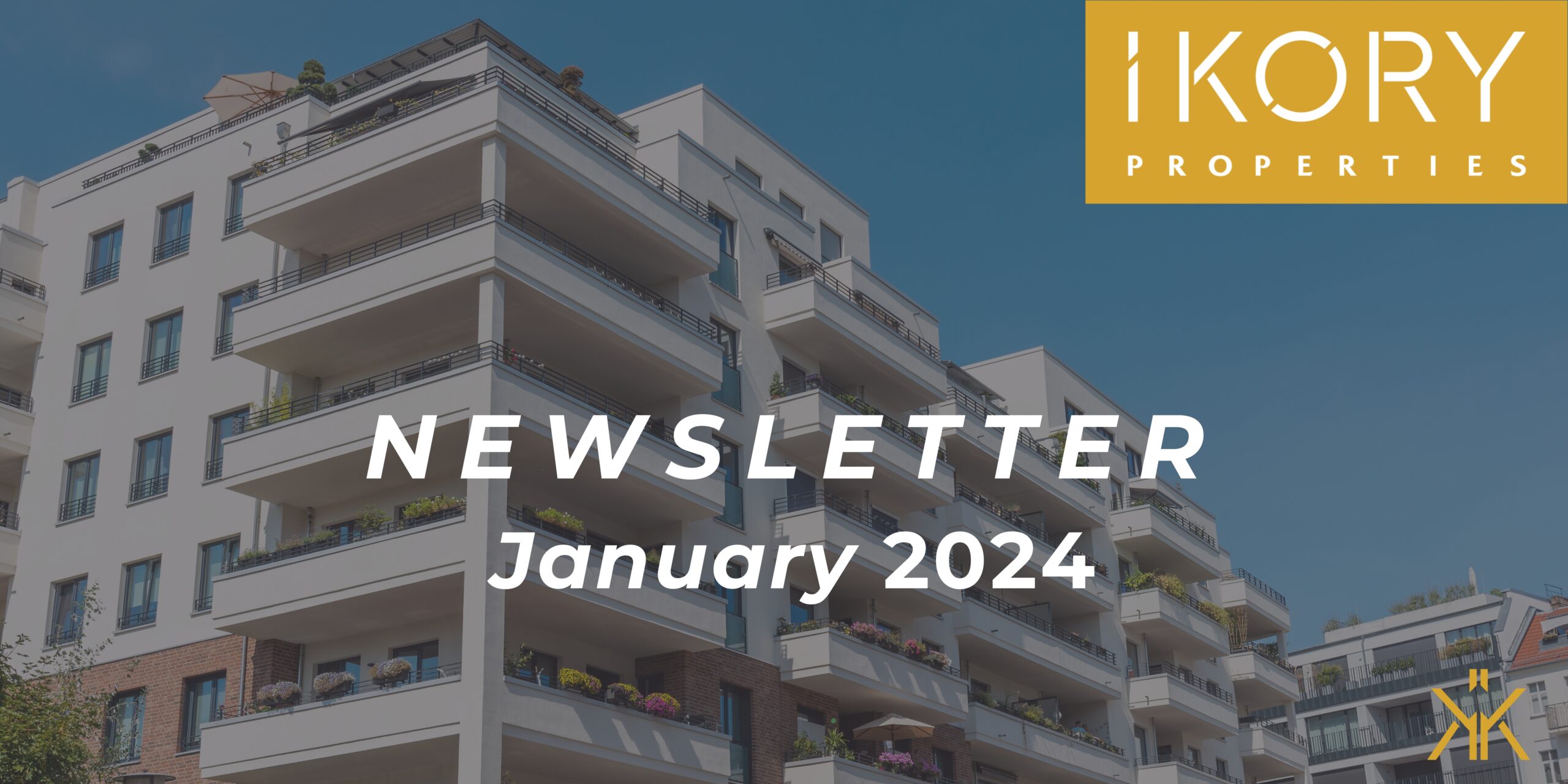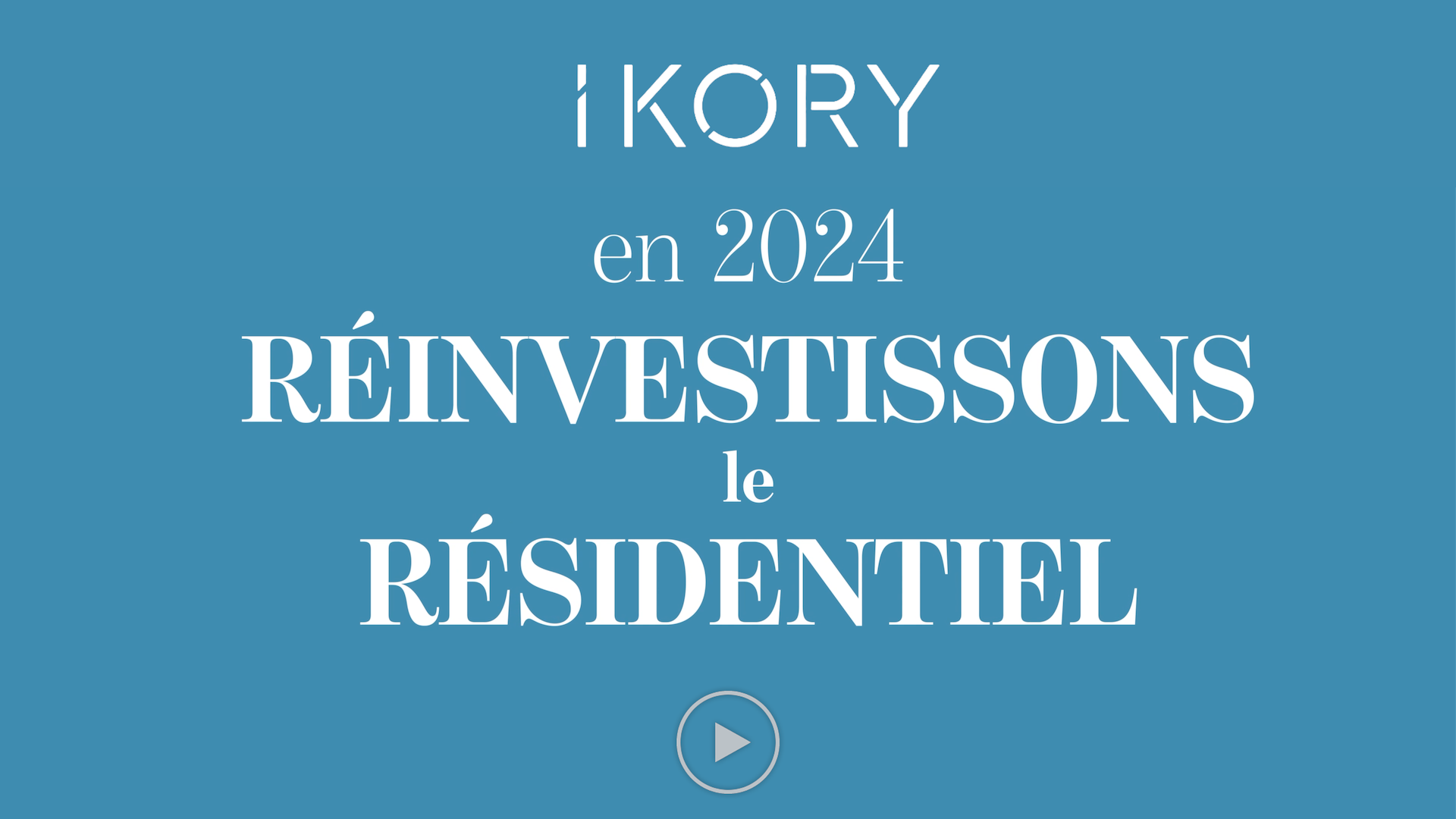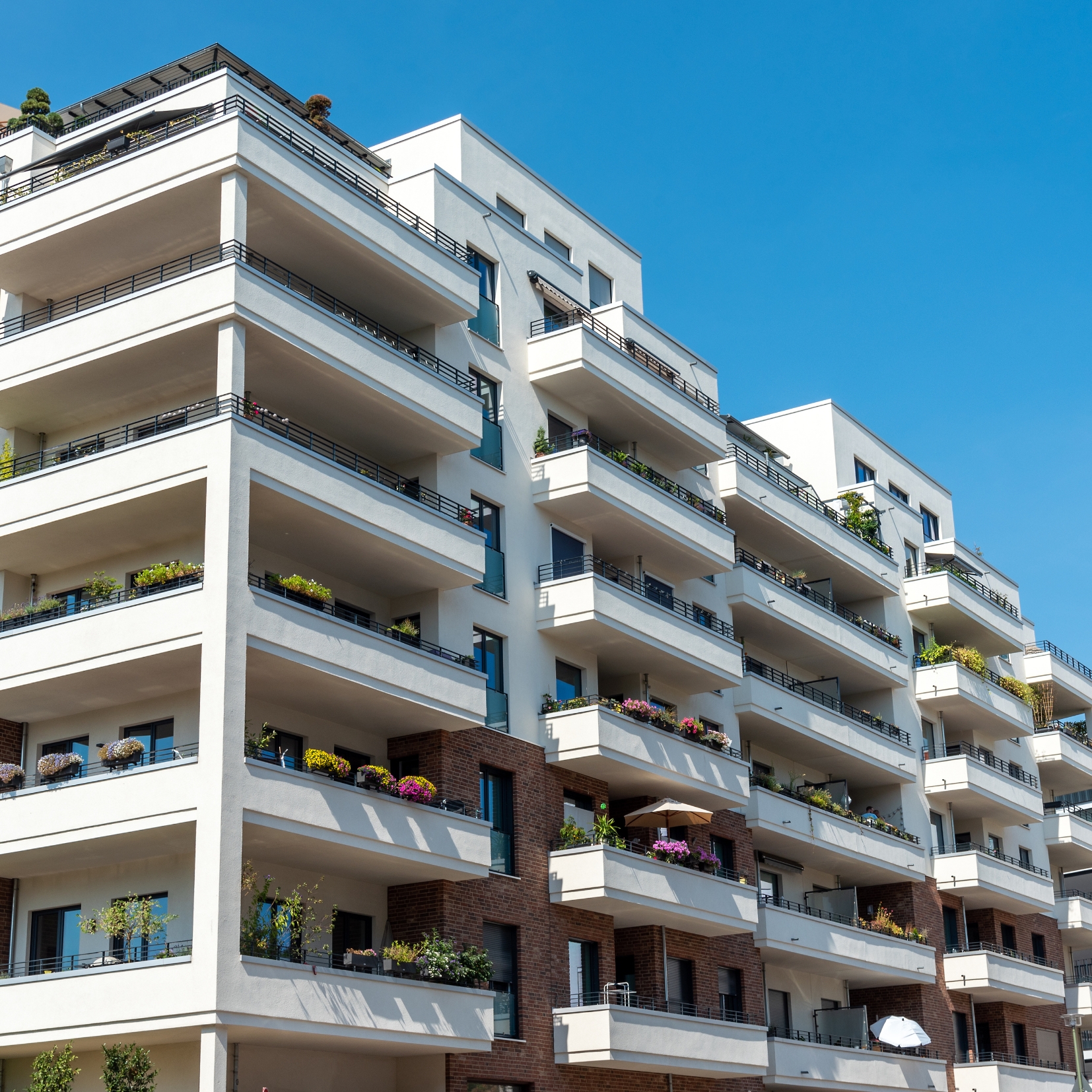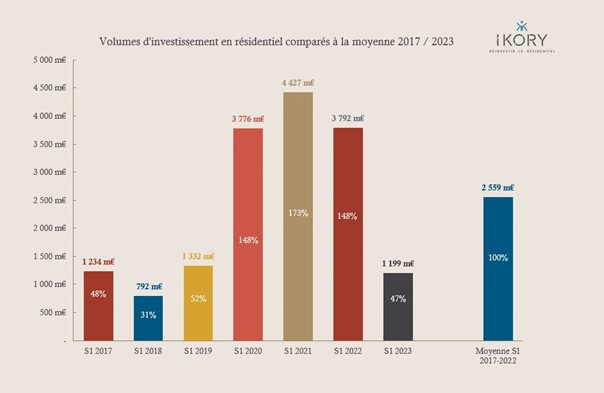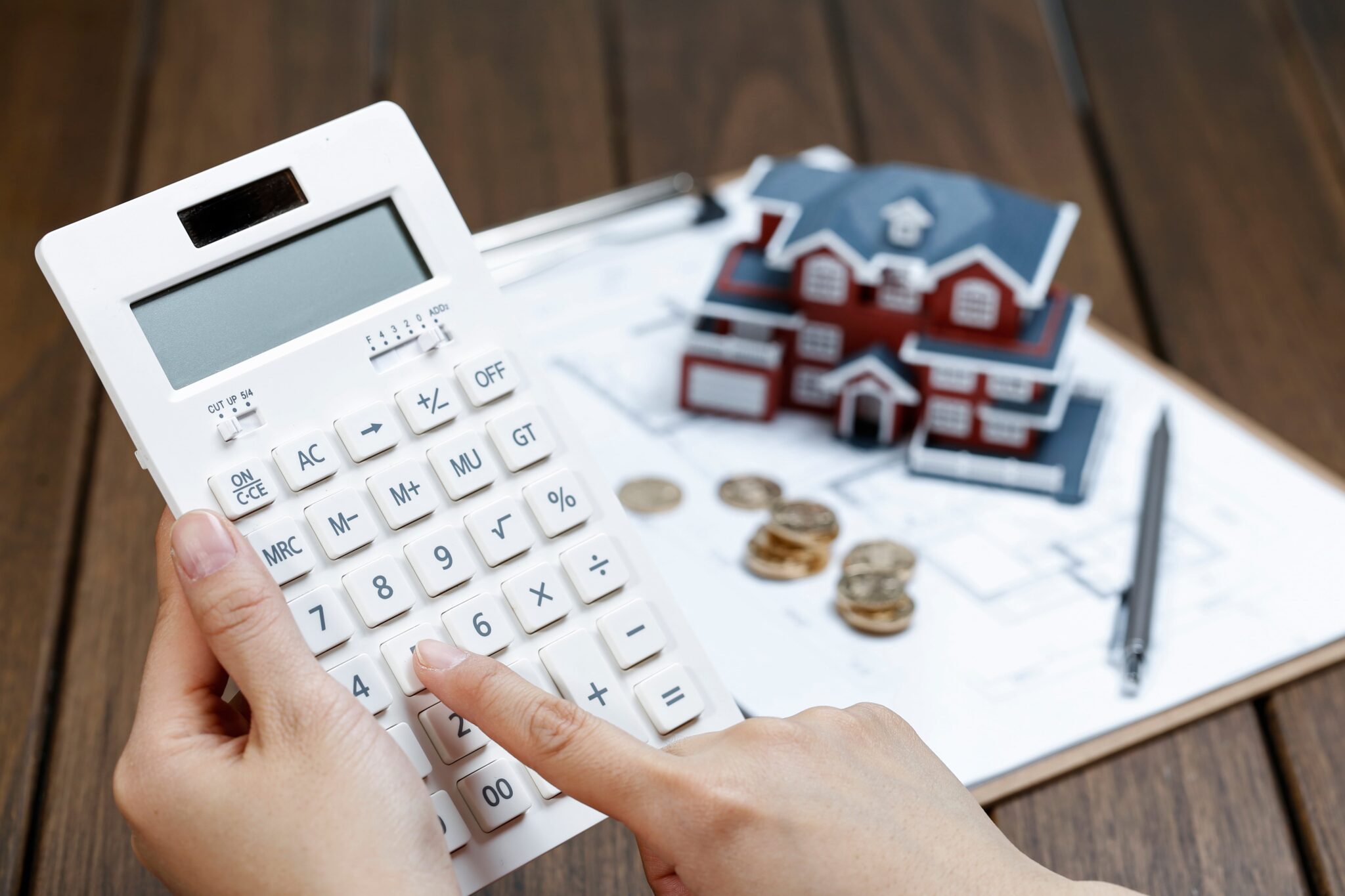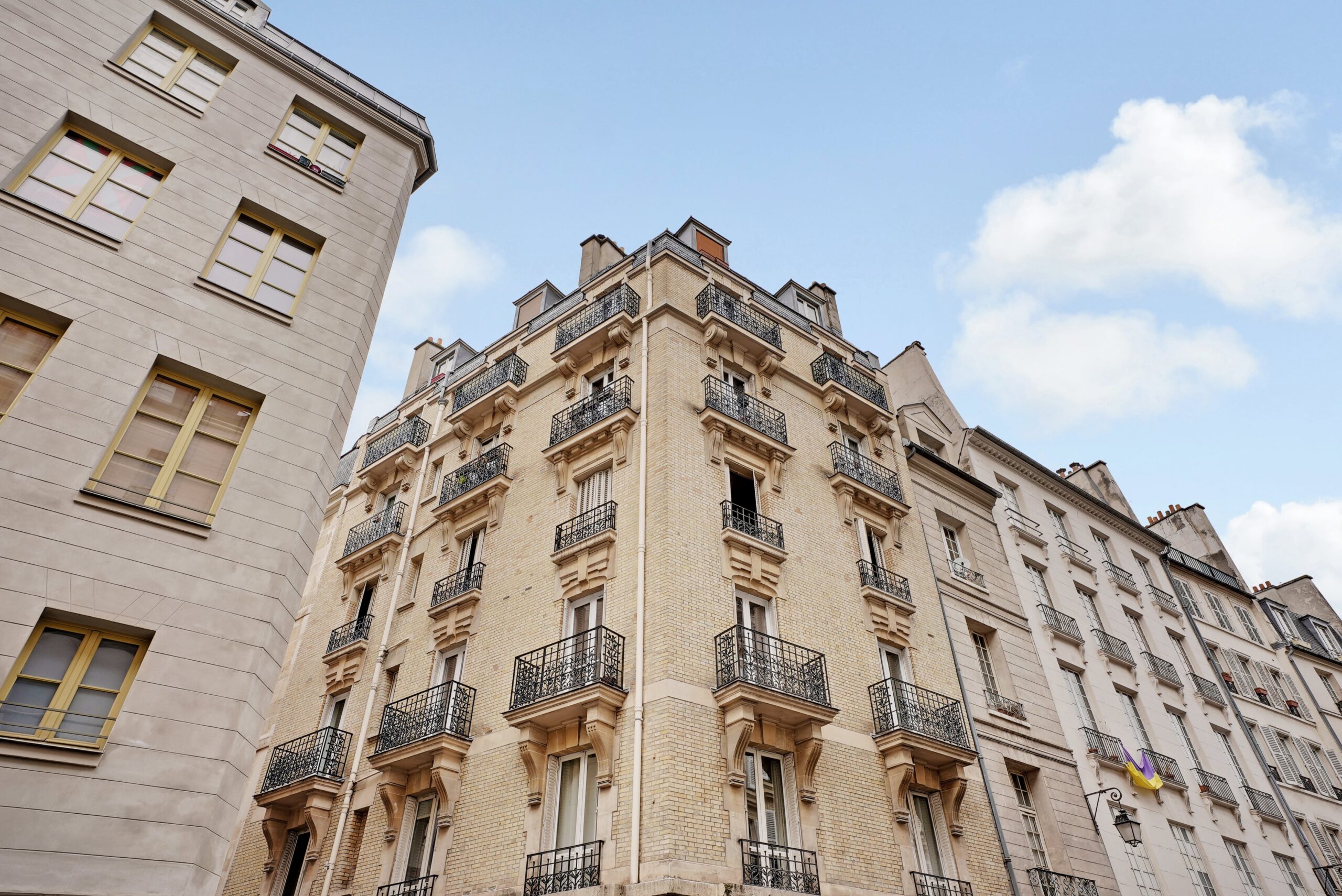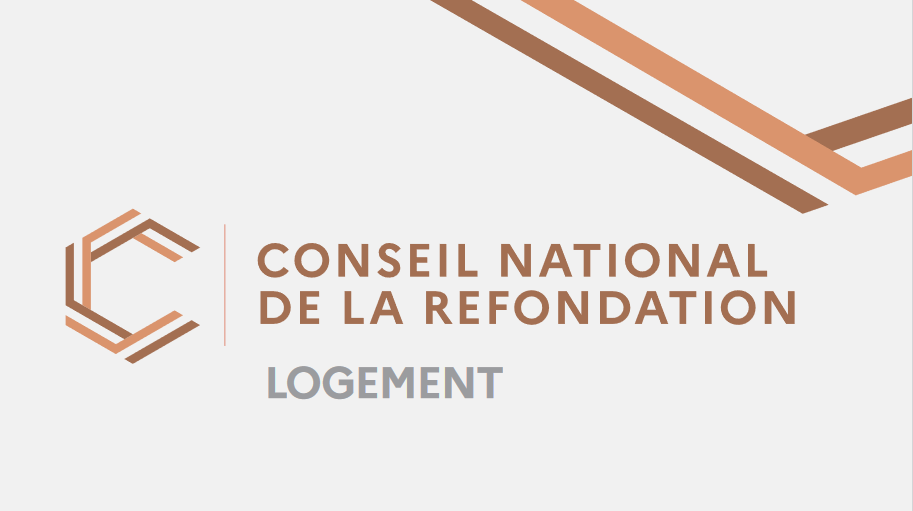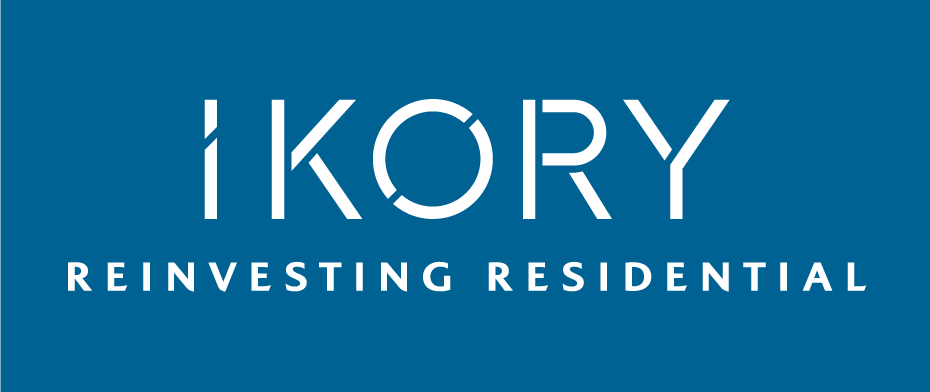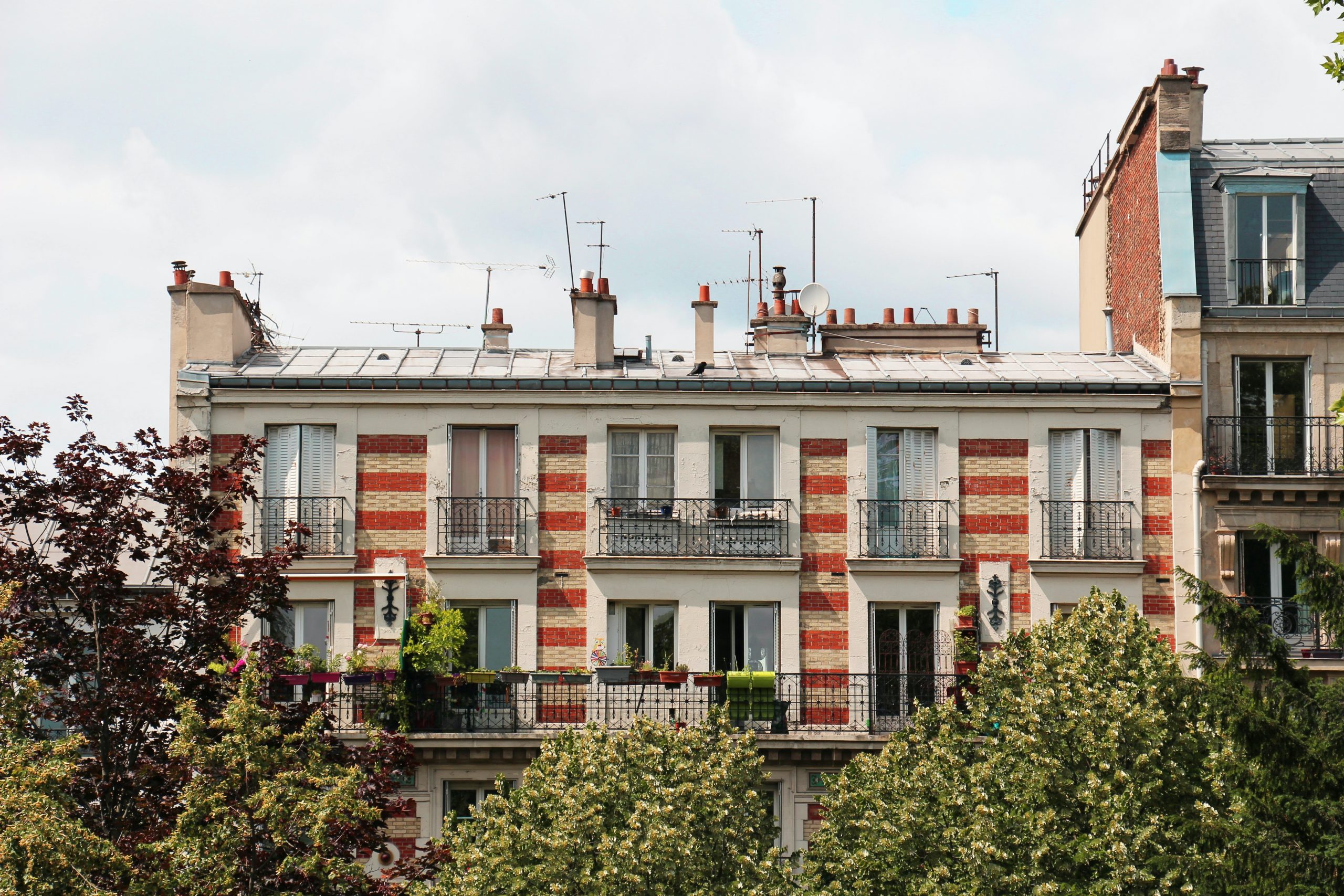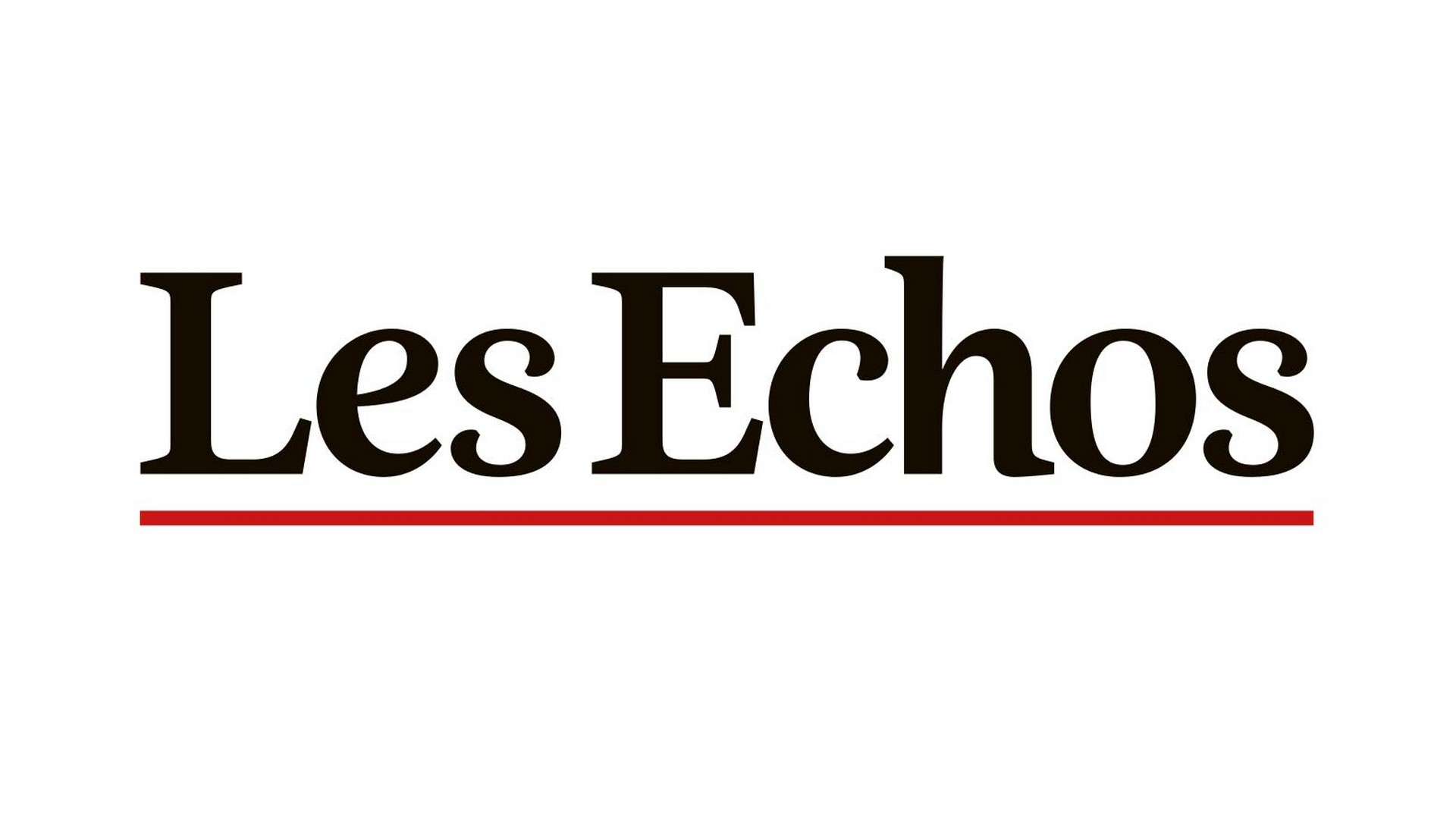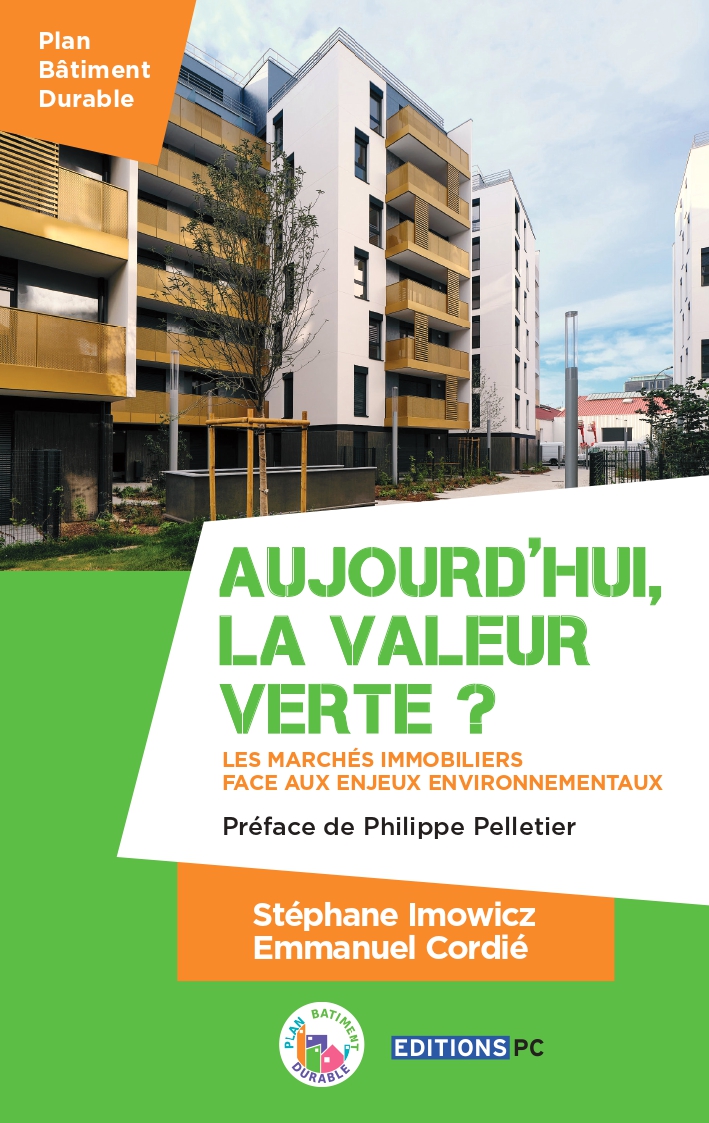OUR NEWS
Spring cleaning: maintaining your apartment or house.
Spring cleaning: maintaining your apartment or house.
With the arrival of warmer days, it’s the perfect time for a deep clean and a fresh start in your home. Whether you live in an apartment or a house, here’s a complete guide to properly maintaining your space and getting it ready for the new season.
1. Refresh the Air and Light
-
Let fresh air in: open all windows for a few minutes each day to renew the air.
-
Clean windows and curtains to maximize natural light.
2. Deep Cleaning Indoors
A proper spring cleaning is essential, whether in an apartment or a house:




3. Declutter and Organize
-
Sort through winter clothes and store those you won’t need anymore.
-
Discard or donate unused items to free up space.
4. Refresh the Kitchen and Bathroom



5. Maintain Outdoor Spaces (If Applicable)
If you have a balcony, terrace, or small garden:


6. Check and Prepare Equipment


7. Create a Cozy and Inviting Interior


The Sale of Buildings to be Renovated (VIR): A Secure Mechanism for Buyers and Investors.
The Sale of Buildings to be Renovated (VIR): A Secure Mechanism for Buyers and Investors.
The Sale of Buildings to be Renovated (VIR) is a legally regulated system that allows buyers to purchase a property requiring renovation while benefiting from protections similar to those of the Sale in Future State of Completion (VEFA). This mechanism, governed by the French Construction and Housing Code (Articles L. 262-1 to L. 262-11), provides a secure framework for buyers and an attractive opportunity for investors and developers.
What is VIR?
VIR applies to the sale of an old building requiring rehabilitation work. In this framework, the seller—often a developer or property dealer—commits to carrying out the specified renovations before delivering the property to the buyer. Unlike a traditional purchase where the new owner is responsible for renovations, VIR legally requires the seller to complete the work, ensuring the property is restored according to agreed standards.
VIR Requirements and Guarantees
The Sale of Buildings to be Renovated is subject to strict legal regulations designed to secure the transaction:



Benefits of VIR
For the buyer:
-
A renovated property with strong legal guarantees.
-
Progressive payments limiting financial risks.
-
A clear legal framework protecting against defects and unfinished work.
-
The possibility of benefiting from tax incentives, such as deficit foncier, for rental investments.

-
Increased property value through a structured renovation process.
-
A secure framework reassuring buyers.
-
Easier access to the old property market, offering an alternative to VEFA (off-plan sales).
Why Choose VIR?
VIR is an attractive opportunity for investors and buyers looking to purchase an older property while enjoying protections similar to those of a new construction. It is particularly well-suited for high-demand urban markets, where the renovation of old buildings is a key issue.
However, this system remains relatively unknown and requires the expertise of specialized professionals to ensure a smooth transaction.
The Sale of Buildings to be Renovated is an innovative solution, offering a middle ground between old property purchases and VEFA, with enhanced guarantees for a secure and profitable investment.
IKORY Will Be Present at MIPIM 2025!
IKORY Will Be Present at MIPIM 2025!
IKORY is excited to announce its participation in MIPIM 2025, the world’s leading real estate event, taking place in Cannes.
This is a key opportunity to connect with industry professionals, explore new market trends, and present our latest projects







Let’s connect and shape the future of real estate together! See you in Cannes!
Finance Law 2025: New opportunities to invest in new real estate in Paris.
Finance Law 2025: New opportunities to invest in new real estate in Paris.
The Finance Law for 2025 introduces several significant measures in the real estate sector, including the strengthening of the Zero-Interest Loan (PTZ) and tax exemptions for the purchase of a primary residence. These provisions could have a direct impact on new real estate developments such as Les Rives de Meaux in the 19th arrondissement of Paris, marketed by IKORY PROPERTIES and developed by REDMAN.
Strengthening of the Zero-Interest Loan (PTZ)
From April 1, 2025, to December 31, 2027, the PTZ will be extended to all new housing across France. This loan, subject to income conditions, aims to facilitate homeownership by financing a portion of the purchase without interest. Buyers of the Les Rives de Meaux development will be able to benefit from this assistance to finance their home, whether it’s a studio or a four-room apartment.
Exemption from Transfer Duties for Donations Intended for the Purchase of a Primary Residence
The 2025 Finance Law also provides for an exemption from transfer duties for donations made to purchase a primary residence. This measure encourages family wealth transfers by reducing taxation during the acquisition of new housing. Future owners of Les Rives de Meaux can take advantage of this tax benefit, making investment in this program even more attractive.
Les Rives de Meaux Development
Located at 82 rue de Meaux, in the 19th arrondissement of Paris, Les Rives de Meaux is a modern residence comprising 14 apartments, ranging from studios to four-room units. Close to the Buttes-Chaumont park and the Bassin de la Villette, the development offers a living environment that combines tranquility and urban dynamism. The high-quality apartments are eligible for the PTZ and benefit from the new tax provisions, facilitating homeownership for first-time buyers and investors.


By combining the benefits of the strengthened PTZ and the tax exemptions provided by the 2025 Finance Law, the Les Rives de Meaux program stands out as an attractive opportunity for those looking to acquire new real estate in a rapidly evolving district of the capital.
Real Estate Visits: Complete Guide for Buyers.
Real Estate Visits: Complete Guide for Buyers.
When looking to buy a property, visits are a crucial step to evaluate different options and make the right decision. Here’s a complete guide to help you optimize your visits and identify the property that best suits your needs.
1. Preparing for the Visit
Before the visit, it is essential to be well-prepared to maximize your time on-site and ensure you don’t overlook anything.
-
List Your Key Criteria: Make a list of essential elements (number of rooms, size, presence of a garden, proximity to amenities, etc.) and those that are desirable but not mandatory.
-
Research the Neighborhood: Before the visit, gather information about the location (transportation, shops, schools, environment) to check if it meets your expectations.
-
Prepare Questions: Write down all questions related to the property (property taxes, co-ownership fees, insulation, recent or planned renovations).
2. During the Visit
During the visit, take time to assess each aspect of the property and pay attention to the details.
-
General Visual Inspection: Observe the general condition of the property, including walls, floors, ceilings, kitchen, and bathroom fixtures.
-
Light and Orientation: Consider the property’s orientation to evaluate its natural light. Visiting at different times of the day can be helpful.
-
Insulation and Noise: Test the windows, listen for outside noise, and check the heating or air conditioning systems.
-
Space Layout: Imagine yourself living there. Are the rooms well arranged? Are there enough storage spaces?
-
Potential Renovations: Try to identify any necessary renovations and estimate their potential cost.
3. Asking the Right Questions
Don’t hesitate to ask all questions that could influence your decision:
-
What are the fees and taxes related to the property?
-
Are there any planned renovations by the co-ownership?
-
What is the reason for the sale?
-
How long has the property been on the market?
4. Taking Notes and Photos
Visiting multiple properties can be confusing. Take notes as soon as possible after each visit and, if allowed, take photos. This will help you compare the different properties later.
5. Analyzing After the Visit
Once the visit is over, take time to reflect.
-
Compare with Your Initial Criteria: Does the property match what you’re looking for?
-
Pros and Cons: List the strengths and weaknesses of each visited property.
-
Decision-Making: If you really like a property, consider a second visit to confirm your impressions and check the final details.
6. Seeking Advice
Don’t hesitate to ask for advice from a professional (real estate agent, notary) or an experienced friend. Their external perspective can be valuable in making the right decision.
Conclusion
A well-prepared real estate visit is key to finding the ideal property. By paying attention to details, asking the right questions, and taking time to reflect, you increase your chances of making the right choice and successfully completing your property purchase.
Expansion of a Room in an Apartment or House.
Expansion of a Room in an Apartment or House.
Expanding a room is an ideal solution to optimize space and enhance the comfort of your home. Whether in an apartment or a house, several factors must be considered before starting the work. Here is a detailed guide to understanding the essential steps.
1. Defining the Project
Before beginning, it is important to clearly define your project:
-
Which room do you want to expand?
-
What will be the use of this additional space?
-
What are the technical and regulatory constraints?
2. Steps in the Process
a. Feasibility Study
It is essential to check the technical and administrative feasibility of the project. In an apartment, this involves verifying condominium rules and the structural constraints of the building. For a house, a study of the land and foundations is necessary.
b. Obtaining Permits
-
Prior Declaration of Work: Required if the expansion is between 5 and 20 m² (up to 40 m² in areas covered by a PLU).
-
Building Permit: Required for an extension exceeding these limits.
-
Condominium Approval: Necessary for apartments.
-
Compliance with Urban Planning Regulations: It is advisable to consult the Local Urban Plan (PLU) of your municipality.
c. Developing Plans
An architect or project manager can be consulted to draw up plans and ensure compliance.
d. Choosing Materials and Techniques
The choice of materials depends on the type of housing and the desired aesthetics. Common options include:
-
Concrete: Strong and durable, ideal for house extensions.
-
Wood: Lightweight and eco-friendly, offering great flexibility.
-
Glass and Metal: Provide a contemporary touch and enhance brightness.
e. Execution of Work
Once permits are obtained and plans finalized, the work can begin. This includes:
-
Demolition of existing walls or partitions
-
Reinforcement of load-bearing structures if necessary
-
Installation of new openings (windows, doors)
-
Thermal and acoustic insulation
-
Finishing (painting, flooring, etc.)
3. Estimated Budget
The cost of an expansion varies depending on several criteria:
-
Size of the expansion: The larger the area, the higher the budget.
-
Materials used: Wood is generally more affordable than concrete or metal.
-
Work complexity: Modifying load-bearing structures entails additional costs.
-
Additional costs: Architect fees, permits, technical studies, etc.
On average, the cost of an expansion ranges from €1,500 to €3,500/m², depending on complexity and materials used.
4. Practical Tips
-
Hire professionals: Architects, engineering firms, and qualified craftsmen ensure work complies with regulations.
-
Anticipate administrative procedures: This helps avoid unnecessary delays.
-
Opt for insulating materials: A good choice of materials helps reduce long-term energy costs.
-
Evaluate natural light needs: Adding windows or glass doors enhances comfort and property value.
Conclusion
Expanding a room is an ambitious project that requires thorough preparation. From administrative procedures to material selection and budget management, each step must be carefully planned to ensure an optimal result. With the right professionals and a clear vision of the project, it is possible to optimize space while increasing the value of your home.
Real estate opportunities and trends to watch in 2025.
Real estate opportunities and trends to watch in 2025.
The real estate sector is constantly evolving, and 2025 is no exception. With technological advancements, new regulations, and societal changes, numerous opportunities are opening up for investors, buyers, and tenants. Here’s an overview of the key trends and innovations to monitor this year.
1. Mid-sized Cities in High Demand
The trend that began in recent years is solidifying: mid-sized cities are attracting more and more buyers and investors. Offering a pleasant lifestyle, more affordable property prices compared to major metropolitan areas, and rapidly developing infrastructure, these zones are ideal for rental investments. Cities like Angers, Dijon, and Clermont-Ferrand continue to grow and enhance their appeal.
2. Green Real Estate at the Heart of Concerns
With the implementation of new environmental regulations, such as the RE2020 framework, sustainable construction and renovation are becoming top priorities. Energy-efficient properties, such as passive or energy-positive homes, are highly sought after. Investors are wise to focus on environmentally friendly projects, especially with the extension of tax incentives like the MaPrimeRénov’ scheme.
3. Digitization of the Real Estate Market
Technology continues to reshape the real estate sector in 2025. Virtual tours and online evaluation platforms make property transactions more accessible and help reach a broader audience. Additionally, blockchain technology is starting to be used to secure transactions and streamline administrative processes, reducing both the time and costs associated with property purchases.
4. Cohabitation and Co-living: A Growing Model
Co-living is gaining momentum, particularly among young professionals and students. This model, which combines private living spaces with shared common areas, addresses the growing demand for community and flexibility. Investors can benefit from this trend by developing tailored spaces, especially in densely populated urban areas.
5. New Tax Opportunities
2025 brings fiscal adjustments that can benefit real estate investors. Programs like Pinel+ for rental investments in high-demand areas, as well as renovation incentives aimed at tackling energy-inefficient properties, offer strategic tools to optimize project profitability.
6. Growth of Commercial Real Estate
With the expansion of e-commerce, logistics warehouses and urban distribution centers are in high demand. This segment represents an attractive investment opportunity, especially as returns remain higher than those of residential real estate.
7. Impact of Societal Changes
Evolving lifestyles directly influence housing needs. For instance, the rise of remote work, now a norm for many, has increased the demand for properties with office spaces or those located on the outskirts of major cities. Additionally, senior living facilities remain a promising segment due to the aging population.
Conclusion
The year 2025 promises to be rich in opportunities for real estate players. Whether it’s riding the wave of sustainable development, leveraging technological innovations, or taking advantage of tax benefits, the market offers numerous ways to maximize investments. However, it’s crucial to stay informed and work with professionals to fully capitalize on these trends
The Importance of the Energy Performance Certificate (EPC) in Real Estate.
The Importance of the Energy Performance Certificate (EPC) in Real Estate.
The Energy Performance Certificate (EPC) is an essential tool in the real estate sector. Since its introduction in 2006, it has played a central role in promoting the ecological transition and reducing the carbon footprint. This document, which must be provided when selling or renting a property, assesses a home’s energy performance and serves as a key indicator for buyers, tenants, and investors.
Trends in 2024 show a balance between demand for urban and suburban residences. With the rise of remote work, many families are choosing to move away from city centers to enjoy a quieter lifestyle, larger spaces, and better housing opportunities.
However, cities remain attractive to those who value proximity to amenities, restaurants, schools, and cultural activities. Understanding your personal preferences—whether you prefer a dynamic environment or a more peaceful setting—is crucial when selecting the right location.
The EPC serves several crucial roles:
- Informing and raising awareness among occupants: It provides an estimate of a property’s energy consumption and greenhouse gas emissions. This information helps users anticipate energy expenses and understand the ecological impact of their home.
- Enhancing or adjusting property prices: A property with a high energy efficiency rating can be sold or rented at a higher price. Conversely, a poor EPC rating may encourage owners to undertake renovations to improve energy efficiency.
Real Estate During the Christmas Holiday Season: Opportunities and Challenges
Real Estate During the Christmas Holiday Season: Opportunities and Challenges
The holiday season, often associated with a slowdown in various industries, presents a unique landscape in the real estate sector. While some buyers and sellers may put their plans on hold, this period offers unique opportunities for savvy investors and industry professionals. Here’s an overview of the trends, advantages, and challenges the real estate market faces during the festive season.
1. A Traditionally Quieter Market
Year-end typically sees a dip in real estate transactions due to several factors:
- Household priorities: Families focus on holiday preparations, Christmas shopping, and vacations.
- Weather conditions: In certain regions, winter weather discourages property visits.
- Reduced business activity: Extended holidays slow down administrative processes such as securing loans or signing contracts.
2. Opportunities for Buyers and Investors
While the market may be quieter, it can work to the advantage of buyers:
- Less competition: Active buyers face reduced competition, creating room for better negotiation.
- Motivated sellers: Some sellers aim to close deals before the fiscal year-end, offering attractive prices.
- Attractive interest rates: Banks may offer favorable rates to meet their annual targets.
3. Challenges for Sellers
Sellers may face challenges during the holidays, but strategic approaches can enhance their chances:
- Seasonal staging: Subtle, festive decorations can make a property feel warm and inviting.
- Flexible viewing schedules: Offering convenient viewing times during the holidays can be a key differentiator.
- Increased online marketing: Leveraging online platforms and social media compensates for fewer in-person visits.
4. Emerging Trends
With the rise of remote work and evolving post-pandemic buying habits, real estate activity doesn’t completely halt during the holidays:
- Online property searches: Real estate portals often see increased traffic during this time, as potential buyers remain in research mode.
- Investment in rental properties: Some investors seize the holiday season to acquire properties for short-term rentals.
5. Tips for Industry Professionals
- Stay available: Agents who remain responsive during the holidays can capture clients underserved by competitors.
- Offer personalized service: Use the season to strengthen client relationships with personalized greetings or tailored advice.
- Plan for the upcoming year: Year-end is an ideal time to review strategies, update property portfolios, and prepare for upcoming market trends.
Conclusion
Although the holiday season often brings a relative slowdown, it also presents unique opportunities for buyers, sellers, and real estate professionals. By adopting tailored strategies and staying attuned to the specific needs of the season, it’s possible to turn this festive period into a powerful lever for real estate success.
DoorFeed Acquires Ikory Asset Management and Adds €500M in Residential Assets Under Management.
DoorFeed Acquires Ikory Asset Management and Adds €500M in Residential Assets Under Management.
DoorFeed, a key player in real estate asset management, has announced the complete acquisition of Ikory Asset Management, including the management of €500 million in residential assets across 1,000 units in France. This strategic move strengthens DoorFeed’s position as a leading European operator dedicated to institutional investments in residential real estate.
The acquisition also brings new leadership appointments: Eric Fintz has been named Global Head of Investor Solutions, and Matthieu Audinet takes the role of France Head of Investment & Asset Management. These appointments underscore DoorFeed’s commitment to enhancing its investment and asset management expertise.
DoorFeed leverages its proprietary technology to deliver innovative and high-performing solutions for its clients, meeting the growing needs of institutional investors in the residential sector.
Living in Co-Ownership: Advantages, Challenges, and Best Practices.
Living in Co-Ownership: Advantages, Challenges, and Best Practices.
Living in co-ownership is a reality for many households, particularly in urban areas. This housing model, based on cohabitation and collective management of a building, offers numerous benefits but also involves specific obligations and challenges. Here’s an overview of the particularities of co-ownership living and some tips for making the most of it.
- Co-Ownership FeesCo-owners must financially contribute to expenses related to the maintenance and repair of shared areas. These costs can be significant, particularly in well-equipped buildings (elevators, gardens, security systems).
-
Collective Decision-Making
Major decisions, such as renovations or changes to regulations, are voted on during general meetings. Reaching a consensus can be challenging, and some decisions may not please everyone. -
Disputes Between Co-Owners
Conflicts may arise over noise, the use of shared spaces, or non-compliance with regulations, often requiring mediation to resolve. -
Administrative Management
Co-ownership requires rigorous organization: holding general meetings, drafting budgets, and overseeing work. These responsibilities typically fall to the property manager.
The Advantages of Co-Ownership Living
-
Cost Sharing
Maintenance, repair, or improvement costs for shared areas (roof, elevator, collective heating, etc.) are split among co-owners, reducing individual expenses. -
Shared Services
Some buildings offer shared services like a concierge, coworking space, or bike storage, which simplify residents’ daily lives. -
Social Interaction
Co-ownership encourages neighborly interactions and relationships, fostering a sense of community. -
Legal Protection Framework
Co-owners benefit from a clear legal framework that governs relationships among them and protects their rights.
Best Practices for Living Well in Co-Ownership
-
Participate in Co-Ownership Activities
Attending general meetings helps you understand the issues, vote on decisions, and share your opinions. -
Respect the Co-Ownership Rules
These rules govern the use of shared spaces, permitted renovations, and even schedules to avoid disturbances. -
Promote Dialogue
Maintaining good relationships with neighbors creates a peaceful environment and facilitates conflict resolution. -
Anticipate Costs
Planning a budget for regular expenses and upcoming repairs helps avoid financial surprises. -
Hire a Good Property Manager
Whether professional or volunteer, the property manager plays a key role in co-ownership management. A competent manager ensures effective and transparent administration.
Conclusion
Living in co-ownership requires a balance between individual rights and collective responsibilities. This housing model offers many advantages but relies on the ability of co-owners to collaborate and respect shared rules. Open communication, active participation in management, and a solid understanding of the challenges are the keys to a harmonious and well-managed co-ownership experience.
How to Optimize the Insulation of Your Home or Apartment for Winter: Practical Tips.
How to Optimize the Insulation of Your Home or Apartment for Winter: Practical Tips.
Winter is coming, and with it, the cold that can quickly turn your home or apartment into an uncomfortable and energy-consuming space. To stay warm while saving on your energy bills, improving your home’s insulation is essential. Here are some practical tips to maximize your comfort and reduce energy consumption during the winter months.
1. Start with an Insulation Audit
Before making any improvements, it’s crucial to identify where heat loss is occurring. An energy audit, performed by a professional, can provide a detailed report on the weak points of your insulation, such as windows, walls, roofs, and floors.
2. Window Insulation
Windows are often responsible for significant heat loss. Here are some solutions:
- Double or triple glazing: If your windows are still single-glazed, upgrading to double glazing can reduce heat loss by up to 40%.
- Insulating films: For a more economical solution, insulating films applied to glass can help block drafts.
- Thermal curtains: Thick or thermally lined curtains prevent heat from escaping.
3. Improving Wall Insulation
Walls account for about 25% of heat loss in a home. For effective insulation:
- Interior insulation: Install insulation panels on interior walls.
- Exterior insulation: More expensive but eliminates thermal bridges without reducing living space.
4. Roof and Attic Insulation
The roof can be responsible for up to 30% of heat loss. Here’s how to improve it:
- Fiberglass or mineral wool: Common, effective, and affordable materials.
- Eco-friendly options: Cellulose fiber or wood fiber for those looking for effective and sustainable choices.
5. Floor Insulation
Floors are often overlooked but can contribute to thermal comfort.
- Thick rugs: A simple yet effective way to reduce the cold feeling.
- Insulating underlay: Adding an insulating layer under flooring can significantly reduce heat loss.
6. Other Simple Winter Tips
- Weatherstripping: Use weatherstripping around windows and doors to block drafts.
- Controlled ventilation: Ventilate your home for a few minutes daily to refresh the air without losing too much heat.
- Space heaters: Use efficient space heaters in colder rooms for targeted warmth.
Conclusion
Improving the insulation of your home or apartment not only keeps you warm during the winter but also serves as a long-term investment that helps lower energy bills and protect the environment. Whether opting for major renovations or simple fixes, every action contributes to greater comfort and a reduced carbon footprint.
Key Steps to Successfully Renovate a Property.
Key Steps to Successfully Renovate a Property.
Renovating a property is an exciting project that not only increases the value of your asset but also allows you to customize a space to suit your tastes and needs. However, a successful renovation requires careful planning and effective project management. Here are the key steps to follow to ensure the successful renovation of your property, whether it’s an apartment, a house, or an older building.
1. Assessment and Property Inspection
Before starting any renovation, it’s crucial to perform a detailed evaluation of the property. This includes a thorough inspection to identify the strengths and weaknesses of the structure (walls, foundations, roof), as well as electrical and plumbing systems.
- Technical inspection: Hiring a professional to perform mandatory inspections (asbestos, lead, energy performance) can help avoid costly surprises.
- Estimating the work: Based on the condition of the property, assess the nature and scope of the work required. This step helps establish the overall budget for the project.
2. Defining the Renovation Project
Once the property’s condition is assessed, it’s important to clearly define your renovation project. Ask yourself the right questions: Do you want to renovate just a few rooms, change the layout, or do a complete overhaul? This phase allows you to prioritize the work and create a detailed project plan.
- Light renovations: This includes minor changes like replacing wall and floor coverings, painting, or installing new lighting fixtures.
- Major renovations: These involve more significant changes, such as roof repairs, upgrading heating systems, improving insulation, or completely redesigning rooms.
3. Assemble a Team of Professionals
For a complete renovation, you will need various skilled trades: architects, builders, electricians, plumbers, carpenters, etc. If the project involves structural changes (such as removing a load-bearing wall), it’s advisable to hire an architect who can also handle the necessary administrative aspects.
- Qualified contractors: Select contractors or companies with proven expertise and reliable references. Obtain multiple quotes to compare pricing and services.
- Project management: Consider hiring a project manager or architect to coordinate the various phases of the renovation and ensure that the work stays on schedule and within budget.
4. Obtain the Necessary Permits
Depending on the nature of the work, certain administrative approvals may be required before you can begin the renovation.
- Work declaration: If you’re changing the exterior appearance of the property (such as facades, windows, or extensions), a declaration to the local authorities may be required.
- Building permits: Major structural changes or alterations that affect the property’s floor space usually require a building permit.
- Consulting the homeowners’ association: If your property is part of a condominium, ensure that the planned work complies with the association’s rules and is approved in a general meeting if necessary.
5. Plan and Prepare the Renovation
Once the project is defined and permits are obtained, it’s time to carefully plan the renovation process.
- Set a timeline: Create a detailed schedule for the work, coordinating the involvement of different trades and anticipating potential delays. This is crucial for managing deadlines and avoiding surprises.
- Material procurement: Depending on the choice of materials and equipment (kitchens, bathrooms, windows), consider potential lead times for delivery.
6. Monitoring the Construction Site
Throughout the renovation process, regular monitoring of the work is essential to ensure everything is progressing according to plan.
- Regular site visits: Schedule on-site visits to check the quality of the work and discuss any necessary adjustments with the contractors.
- Compliance with standards: Ensure that the work adheres to current regulations, particularly in terms of electrical, safety, and insulation standards.
- Final inspection: Once the work is completed, conduct a final site inspection with all stakeholders to ensure everything meets your expectations and complies with standards.
7. Finishing and Interior Design
After the main construction work is completed, it’s time to focus on finishing touches and interior design. This stage, often the most enjoyable, involves finalizing the décor and making the space ready for living.
- Painting, flooring: The finishing phase includes painting walls, laying tiles or parquet floors, and installing fixtures like lights and kitchen appliances.
- Furniture and decoration: At this stage, you can personalize the space by adding furniture, decorative items, and textiles (curtains, rugs, etc.).
8. Completion and Warranty
Once the renovation is finished, you’ll need to formally accept the work with the contractors. This is the moment to address any imperfections or faults that need to be corrected. After this, the warranty periods begin.
- Completion warranty: This covers any issues that arise in the first year after the renovation is completed.
- Ten-year warranty: This protects against major defects affecting the building’s structure for ten years after the renovation.
Conclusion
Renovating a property is a complex project, but by following these steps carefully, you can minimize risks and ensure the success of your renovation. Good planning, thoughtful choices, and close supervision are the keys to enhancing the value of your property and creating a space that truly reflects your style and needs.
Furnishing Your Balcony and Terrace: Tips and Trends for an Ideal Outdoor Space.
Furnishing Your Balcony and Terrace: Tips and Trends for an Ideal Outdoor Space.
With rising real estate prices and increasing demand for outdoor living areas, balconies and terraces have become true extensions of our homes. Properly furnishing a balcony or terrace allows you to make the most of sunny days while also boosting your property’s value. Here are some tips and trends to transform these spaces into peaceful retreats.
1. Define the Purpose of the Space
Before starting the layout of a balcony or terrace, it’s important to think about its primary purpose. Do you want a relaxing area with lounge chairs? An outdoor dining space? Or perhaps a mini garden with aromatic herbs and flowers? Defining the purpose helps guide your choice of furniture and décor.
- Relaxation area: Choose comfortable furniture like low chairs or hammocks, complemented by cozy cushions and a small side table.
- Dining area: Opt for a table that fits the size of your balcony or terrace. Foldable or modular models are perfect for small spaces.
- Urban garden: Place planters on the edges and climbing plants to maximize space.
2. Choose the Right Materials
The materials used for furniture and flooring must be both aesthetically pleasing and durable, especially for outdoor use.
- Furniture: Wicker resin furniture, rust-resistant metal, or exotic woods like teak or acacia are highly recommended for their weather resilience.
- Flooring: Composite wood is ideal for terraces as it resists moisture while adding a warm touch. Tiles are also a great option for a more modern and easy-to-maintain look.
- Textiles: Use outdoor cushions and rugs that are UV and moisture-resistant for optimal comfort and durability.
3. Maximize Space
Balconies, especially in urban areas, tend to be small. Therefore, it’s crucial to organize the space well to avoid feeling cramped.
- Foldable or stackable furniture: Choose compact furniture that can be easily stored.
- Use vertical space: Install wall-mounted shelves for plants or decorative accessories.
- Multi-functional pieces: A bench with built-in storage or a wall-mounted table can save space without sacrificing comfort.
4. Add Greenery to the Space
Plants bring freshness and life to a balcony or terrace while creating a more intimate and pleasant atmosphere.
- Potted plants: Use pots of various sizes and heights to create depth. Aromatic herbs are perfect for small spaces and add a useful and fragrant touch.
- Climbing plants: Trellises or pergolas are perfect for climbing plants, which can also offer some natural shade.
- Vertical gardens: For space-saving and decorative effect, opt for vertical walls or hanging plant holders.
5. Play with Lighting
Good lighting is essential for enjoying your balcony or terrace in the evening. There are several options depending on the ambiance you want to create.
- String lights: For a warm and friendly atmosphere, hang string lights around your space.
- Solar lights: Economical and eco-friendly, they charge during the day to light up your evenings.
- Candles and lanterns: For a romantic touch, place candles or lanterns in various spots, but be mindful of the wind!
6. Consider Weather Protection
To enjoy your balcony or terrace year-round, it’s important to think about effective protection from the sun, wind, and rain.
- Parasols and shade sails: These are essential to shield you from UV rays while adding a decorative note to the setup.
- Outdoor blinds: If you need more protection, blinds can cover larger areas while being easily retractable.
- Blankets and throws: On cooler evenings, adding cozy throws to your seating extends your outdoor time.
7. Personalize the Décor
Finally, unleash your creativity to personalize the space according to your tastes. Colorful cushions, decorative lanterns, small art pieces, or even outdoor rugs can turn a balcony or terrace into a unique space that reflects your style.
Conclusion
Furnishing a balcony or terrace requires some planning to optimize the space and make it both enjoyable and functional. Whether it’s a small city balcony or a large terrace with a view, every detail matters in creating a comfortable, inviting ambiance suited to your needs. By following these tips, you’ll be able to fully enjoy your outdoor space while enhancing your property’s value.
Choosing the Best Location for Your Primary Residence.
Choosing the Best Location for Your Primary Residence.
Introduction
Choosing the location for your primary residence is one of the most important decisions in a person’s life. The location not only determines the property’s value but also influences daily quality of life, safety, access to amenities, and long-term satisfaction. In 2024, with new trends in work, lifestyle, and urban development, choosing the right location becomes even more crucial. Here is a detailed guide on the criteria to consider when selecting the best location for your primary residence.
1. Market Trends in 2024: City, Suburb, or Countryside?
Trends in 2024 show a balance between demand for homes in cities and suburbs. With the rise of remote work, many families choose to move away from urban centers to enjoy a quieter lifestyle, larger spaces, and better housing opportunities.
However, cities remain attractive for those who appreciate proximity to amenities, restaurants, schools, and cultural activities. It is important to understand your personal preferences, such as the desire to live in a dynamic or peaceful environment, to choose your location wisely.
2. Accessibility and Commute Time
For a primary residence, accessibility is a fundamental factor. Daily commutes significantly impact quality of life, so it is essential to choose a neighborhood that minimizes commute times to work, schools, or other important activities.
In 2024, improvements in public transportation networks (such as subway extensions and new bike lanes) are game-changers for many neighborhoods. Living near a train station, metro stop, or well-served bus stop can greatly improve your comfort, especially if you wish to avoid spending a lot of time driving.
3. Quality of Education and Proximity to Schools
For families or those planning to start one, proximity to quality schools is crucial. Choosing a neighborhood with good public or private schools ensures a good educational environment for your children and also helps maintain your property’s value.
Neighborhoods with well-regarded educational facilities tend to have better price stability. In 2024, many homebuyers are willing to pay a premium to live in a good school district, making it a solid long-term investment, even if the primary goal is to live in the property.
4. Safety and Environment
Safety is a priority for any primary residence. Before choosing a location, it is important to check crime statistics in the area. A safe environment brings peace of mind and serenity to daily life.
The environmental setting is also important. Proximity to parks, green spaces, hiking trails, or playgrounds is particularly attractive for families and those who enjoy outdoor activities. In 2024, the growing demand for neighborhoods with good air quality and plenty of green spaces also impacts the real estate market.
5. Amenities and Neighborhood Life
Proximity to amenities such as supermarkets, pharmacies, medical centers, gyms, and restaurants greatly contributes to comfortable living. In 2024, neighborhoods offering a good mix of local shops and services are preferred by buyers.
It is also worth evaluating the community life and activities available in the area. A place with a friendly atmosphere, local markets, and cultural events will encourage better integration and a more fulfilling lifestyle.
6. Infrastructure and Future Development Projects
Before buying a primary residence, it is wise to learn about future development projects in the area. Planned improvements in infrastructure, such as new public facilities, shopping centers, or schools, can increase your property’s value and improve your quality of life.
However, it is also important to ensure that development projects will not negatively affect the neighborhood’s tranquility or attractiveness. For example, the construction of a new highway nearby could increase noise and reduce quality of life.
7. Long-Term Appreciation Potential
Even for a primary residence, considering the long-term appreciation potential of the property is relevant. Choosing a neighborhood that is developing but already equipped with essential infrastructure can offer significant appreciation over time. In 2024, neighborhoods described as “up-and-coming” are often a good option, as they offer reasonably priced housing with prospects for future development.
Conclusion
Choosing the ideal location for your primary residence is a process that requires careful thought and a good understanding of your personal needs. In 2024, it is important to consider various factors such as accessibility, proximity to schools, safety, quality of amenities, and future development projects. Take the time to visit different neighborhoods, talk to residents, and learn about market trends. With the right information, you can find the perfect location that meets your expectations and enhances your quality of life.
Stéphane Imowicz – Les Echos – Real Estate: The Craze for Unusual Properties.
Stéphane Imowicz – Les Echos – Real Estate: The Craze for Unusual Properties.
The premium for an exceptional view can reach up to 20%. In addition to the property’s intrinsic qualities, the services associated with it also determine its value. “Turnkey properties, whether new or fully renovated, designed and furnished by renowned architects, are increasingly sought after, particularly by Anglo-Saxon and Asian clients,” notes Stéphane Imowicz, president of Ikory. Valued at 20% to 30% more than the market average, these apartments offer high-end amenities negotiated by the building’s co-ownership (24/7 reception, wine cellar, gym, swimming pool, guest studio, restaurant, tennis court…), as well as an outsourced and personalized concierge service, all with a rationalized charge structure.
Full article available HERE
Rediscovering the Charm of the Old: All You Need to Know About Property Rehabilitation.
Rediscovering the Charm of the Old: All You Need to Know About Property Rehabilitation.
Do you dream of a unique home that combines the character of the old with the comfort of the modern? Property rehabilitation might be the perfect solution for you. By giving new life to old buildings, this approach preserves our heritage while meeting today’s housing needs.
What is property rehabilitation?
Rehabilitation goes beyond simple renovation. It is a process of restoring and modernizing an existing building while preserving its original architectural features. Work can be carried out on the entire structure or focus on specific elements such as facades, floors or installations.
Why choose rehabilitation?
- The charm of the old: Old buildings often offer generous volumes, high ceilings and noble materials that create a unique atmosphere.
- Preservation of heritage: By rehabilitating a building, you contribute to the safeguarding of our architectural and urban heritage.
- A sustainable investment: Rehabilitated homes are often more valued on the real estate market.
- An ecological approach: By giving a second life to an existing building, you reduce your ecological footprint.
The stages of rehabilitation
- Diagnosis: An in-depth study of the building’s condition makes it possible to identify the work to be carried out and to establish a preliminary budget.
- Design: An architect or project manager designs the rehabilitation project taking into account technical and regulatory constraints.
- Work: Rehabilitation work can be carried out by craftsmen specializing in the restoration of old buildings.
- Completion: Once the work is completed, a handover is organized to verify the conformity of the site with the initial project.
The challenges of rehabilitation
- Cost of work: Rehabilitation can be more expensive than new construction due to the specific work related to old buildings.
- Administrative procedures: The necessary authorizations can be numerous and complex, particularly for listed buildings or those located in protected areas.
- Choice of materials: It is important to choose quality materials that respect the building’s aesthetics and offer good thermal and acoustic performance.
The advantages of a rehabilitated home
- Modern comfort: Rehabilitated homes can benefit from all modern comforts (thermal and acoustic insulation, efficient heating, electrical equipment).
- A pleasant living environment: The charm of the old combined with modern comfort creates a unique and warm living environment.
- A long-term investment: The value of a rehabilitated home is generally set to increase over time.
To buy an apartment or a house: How to make the right choice ?
To buy an apartment or a house: How to make the right choice ?
Buying a property is a key milestone in many people’s lives. Choosing between an apartment in the city and a house in the suburbs is not always simple. Several factors must be considered to make a wise purchase. Here is a guide to help you decide between an apartment and a house based on your priorities.
-
Space Requirements One of the first criteria to consider is the amount of space you need. Generally, a house offers more living space than an apartment, especially for larger families. A house often includes a garden, which is a significant advantage for those who enjoy outdoor spaces or have children. On the other hand, an apartment may be perfect for singles, couples without children, or those who don’t need a large living space. Additionally, city-center apartments typically provide quicker access to services and amenities.
-
Budget Price is obviously a determining factor in choosing between a house and an apartment. Generally, houses are more expensive to purchase than apartments, especially in major cities. However, they may offer a better long-term return on investment, particularly if located in developing areas. It’s also important to consider additional costs such as notary fees, local taxes, condominium fees for apartments, or maintenance costs for a house (garden, roof, etc.).
-
Location Location is crucial when buying real estate. An apartment in the city center often provides easy access to public transportation, schools, shops, and other services. This can be advantageous for those looking to minimize travel and avoid using a car. Conversely, purchasing a house in the suburbs can offer more tranquility and a peaceful living environment. However, it may also involve longer commutes to work or shopping.
-
Pros and Cons of Apartments Pros:
- Access to amenities (shops, transportation, schools).
- Lower maintenance costs (no garden, no roof to manage).
- Increased security with communal devices (intercom, security guards). Cons:
- Less living space.
- Absence or small size of outdoor space.
- Living in a condominium, requiring interaction with neighbors.
- Pros and Cons of Houses Pros:
- More indoor and outdoor space.
- Privacy and tranquility.
- No condominium fees. Cons:
- Higher maintenance (garden, repairs, etc.).
- Generally higher purchase cost.
- Distance from urban centers, often requiring a car.
- Lifestyle The choice between a house and an apartment will also depend on your lifestyle. If you prefer urban living with cultural activities and proximity to shops, an apartment in the city is probably more suitable. If you seek a quieter, more spacious living environment, a house in the countryside or suburbs would be ideal.
Conclusion Choosing between an apartment and a house is a decision based on several personal criteria: space requirements, budget, location, and lifestyle. It’s important to clearly define your priorities and consider the long-term before making your choice. Once these factors are clarified, you can focus on the property that best fits your expectations and lifestyle.”
The Real Estate Market’s Post-Summer Recovery: Analyzing New Dynamics in Fall 2024.
The Real Estate Market’s Post-Summer Recovery: Analyzing New Dynamics in Fall 2024.
Fall 2024 marks a crucial turning point for the real estate market following a typically quiet summer in terms of transactions. This year, real estate professionals are observing a more dynamic recovery than usual, influenced by various economic, social, and regulatory factors. In this article, we will analyze the key dynamics driving the market this fall, focusing on new trends in supply and demand.
1. A Changing Market: Key Factors
Several factors are influencing the real estate market in fall 2024, both nationally and locally:
-
Fluctuating Interest Rates: After a period of gradual increases, interest rates have plateaued but remain high compared to previous years. This situation is pushing many buyers to finalize their transactions before another potential rise. Buyers are more selective, and sellers often have to lower their expectations to align with this new reality.
-
Inflation and Purchasing Power: Inflation continues to impact household purchasing power, limiting their ability to invest in real estate. However, certain segments of the population, particularly the middle and upper classes, are seeing rising incomes, allowing them to remain active in the market. Additionally, the search for more affordable properties is pushing buyers to explore less sought-after areas, reshaping the map of desirable neighborhoods.
-
Return to Urban Centers: Contrary to the trend of the past two years, which saw an exodus to rural and suburban areas, there is a strong resurgence of interest in urban centers. This phenomenon is partly due to large cities better adapting to new quality-of-life demands, such as improved green spaces, enhanced telework infrastructure, and a more diverse cultural and social offering.
-
Impact of New Environmental Regulations: The implementation of new regulations aimed at reducing the carbon footprint of buildings, particularly through improved energy efficiency, directly affects real estate transactions. Properties that comply with these new standards are increasing in value, while others are losing attractiveness, forcing owners to invest in sometimes costly renovations.
2. Supply Trends: Necessary Adjustments
The real estate supply in fall 2024 is marked by significant adjustments to meet the new market expectations:
-
Price Reevaluation: Due to the economic situation and interest rates, real estate prices tend to stabilize or slightly decrease, especially in areas where supply exceeds demand. Sellers, aware of the situation, often adopt competitive pricing strategies in hopes of attracting more cautious buyers.
-
Boom in Energy Renovations: Faced with new environmental requirements, many property owners are investing in energy renovations to remain competitive. Installing solar panels, improving thermal insulation, and replacing inefficient heating systems have become priorities. These investments not only increase property value but also meet the growing demand for sustainable and eco-friendly housing.
-
Emergence of New Developments: Real estate developers continue to launch new projects, mainly in rapidly expanding urban areas. These projects attract young families and professionals looking for modern homes that are well-located and compliant with the latest energy standards. Emphasis is often placed on shared spaces, community gardens, and amenities suited for remote work.
-
Increase in Intermediate Housing Supply: To meet the needs of the middle class, often excluded from the traditional real estate market, new forms of intermediate housing are emerging. These include rent-to-own programs, housing cooperatives, and affordable homes reserved for first-time buyers.
3. Demand Trends: New Buyer Priorities
Buyers in 2024 are more discerning, and their priorities have evolved, directly influencing real estate demand:
-
The Search for Flexibility: Teleworking, now the norm for many professionals, continues to redefine space needs. Buyers now favor homes that offer flexible layouts, with rooms that can be transformed into offices or multifunctional spaces. Houses with outbuildings or apartments with mezzanines are particularly sought after.
-
Demand for Eco-Friendly Properties: Environmental awareness plays a major role in purchasing decisions. Properties equipped with sustainable energy systems, such as passive houses or apartments with rainwater harvesting, are increasingly attracting buyers concerned about their carbon footprint. Environmental certifications like the BBC (Low Energy Building) or HQE (High Environmental Quality) labels are becoming essential selection criteria.
-
Families and Outdoor Space: Past lockdowns have reinforced the importance of outdoor space for families. The demand for houses with gardens, apartments with terraces, or residences offering shared green spaces remains high. These features are particularly prized in urban areas where access to nature can be limited.
-
Rising Interest in Multi-Generational Housing: More and more families are opting for properties that can accommodate multiple generations under one roof. This meets the need for mutual support between generations, as well as economic considerations. Properties offering annexed housing, such as independent studios or finished basements, are therefore in high demand.
-
Interest in New Technologies: The demand for “smart homes” equipped with advanced home automation technology continues to grow. Buyers are willing to invest in systems that improve security, energy efficiency, and comfort. Connected homes, where everything can be controlled remotely, cater to the needs of tech-savvy younger generations.
4. Outlook for the End of the Year
Looking beyond the fall, several scenarios are emerging for the real estate market by the end of 2024:
-
Price Stabilization: After adjustments in the fall, prices are expected to stabilize in most regions, except in areas where demand remains exceptionally strong. This stabilization could encourage hesitant buyers to re-enter the market.
-
Regional Market Divergence: The disparity between different regions will continue to widen. Major cities like Paris, Lyon, and Bordeaux are expected to see a faster recovery, while rural areas may experience a prolonged slowdown if they fail to attract new residents or investors.
-
Impact of New Regulations: Laws expected at the end of the year, particularly those regarding mandatory energy renovations for older homes, could spur market activity. Property owners are anticipating these changes by putting properties on the market before the new standards take effect, which could temporarily increase supply.
-
Rise of Alternative Housing Solutions: Co-living, participatory housing, and micro-apartments are likely to continue gaining popularity, especially in major cities where space is limited and prices are high. These solutions offer interesting alternatives for young professionals and retirees looking for affordable and well-located housing.
-
Investor Outlook: Real estate investors will need to be cautious and carefully choose locations for their purchases. Properties offering good rental yields, particularly in developing neighborhoods or near business centers, will remain attractive. Additionally, investments in senior residences or student housing could offer promising prospects, given demographic trends.
Economic Report – Bulk Investment Market – H1 2024 Review.
Economic Report – Bulk Investment Market – H1 2024 Review.
Although the price adjustment has been slower in France compared to other countries, the residential market seems to be on the path to recovery with a total investment volume of €1.6 billion in the first half of 2024. However, the dynamics have shifted. Managed real estate, which had performed well in 2023, now appears to be experiencing a decline in investor confidence, while traditional old housing is particularly benefiting from the new context, with a resurgence in traditional acquisition/resale activities after a period of neglect due to low interest rates.
A Slight Recovery in the First Half
With €1.6 billion invested, the residential real estate market is showing signs of recovery, recording a 12% increase compared to the first half of 2023.
In traditional old housing, this increase reaches 24% due to price stabilization. The stability of retail prices in the face of deflationary pressure restores the block/lot discount, attracting property traders, opportunistic funds, and “core plus” investors with renovation projects aimed at selling in lots. The decrease in bulk prices also allows long-term institutional investors to return to prime assets.
Conversely, new real estate stagnates, with a 4% decrease in investments compared to the first half of 2023. Developers remain hindered by rising interest rates and construction costs, preventing bulk sales at lower prices without risking their survival.
Uncertainties in Managed Residential Real Estate
While in 2023, investments in managed residences highlighted the attractiveness and growth of these assets due to their stable returns and the rise of coliving, the review of the first half of 2024 presents a nuanced perspective.
Investments in senior residences and coliving have dropped by more than a third compared to the first half of 2023. However, with a relatively low number of transactions, it would be prudent to wait until the end of the year to refine this analysis.
Will Major Deals Return?
Mega-transactions have been notably absent from the residential investment landscape since interest rates began to rise. The absence of large deals over the past two years is a cause for concern, as it highlights the market’s difficulties in positioning itself to produce large-scale housing projects that meet the expectations of major market players.
IKORY Capital Markets concludes the sale of two iconic buildings in Paris and Clichy.
IKORY Capital Markets concludes the sale of two iconic buildings in Paris and Clichy.
IKORY CAPITAL MARKETS, a leader in residential building and portfolio transactions, announces the completion of the sale of two major assets on behalf of a family in joint ownership.
The first building, located in the Marais district of Paris (75003) and purchased by an end-user, is a mixed-use property with commercial spaces and 7 residential units, offering a total area of 4,200 m². The second building, located on Rue Villeneuve in Clichy (92110), is also a mixed-use property with 2 ground-floor commercial spaces and 19 residential units, totaling 780 m². This property was purchased by FONCIERE BONNEAU.
In addition to marketing the properties, IKORY CAPITAL MARKETS was commissioned for strategic advisory services to the seller. This included coordinating all involved parties, such as surveyors, inspectors, urban planning services, and the Paris archives, up to the final signing of the transactions.
Key partners contributing to the success of this operation included brokers IKORY CAPITAL MARKETS, ENOMA PARTNERS, CFP PATRIMONIUM, and LEXAVOCATS. The notaries for the transactions were Me Gauthier and Me Larrigalot from the Office Notarial du Jeu de Paume (representing the seller). Me Granata Goldman (Etude VXL Notaires) and Me Cyril Klein supported the various buyers.
The transactions for the two buildings were completed with the assistance of Me Valérie DEVISMES (Cabinet Erisma Avocats).
The assets were signed on June 21 and July 12, 2024, respectively. IKORY CAPITAL MARKETS continues to focus on operational excellence and customer service while exploring new opportunities in the real estate market.
Press Release: Residential Real Estate: €1.6 Billion Invested in the First Half of 2024.
Press Release: Residential Real Estate: €1.6 Billion Invested in the First Half of 2024.
This morning, ImmoStat announced the figures for the first half of 2024 regarding investments made by institutional investors and family offices in the bulk sale of residential assets, both traditional and managed.
In the first half of 2024, the total amount of residential investments in France, as defined by ImmoStat, reached €1.6 billion, marking a 12% increase compared to the first half of 2023. The second quarter of 2024 saw a 4% decline compared to the second quarter of 2023, with investments totaling €806 million.
Traditional and intermediate residential assets amounted to €1.3 billion in the first half of 2024, representing a 30% increase over the first half of 2023. The second quarter of 2024 showed a 1% increase compared to the second quarter of 2023, totaling €601 million.
Lastly, managed residential assets totaled €312 million in the first half of 2024, indicating a 29% decrease from the first half of 2023. The second quarter of 2024 saw a 17% decline compared to the second quarter of 2023, with investments totaling €205 million.
“Whereas 2023 demonstrated the strength of managed residential real estate, the first half of 2024 shows a notable return to traditional investment. This trend reflects the gradual stabilization of prices, which should help the market regain equilibrium between supply and demand in the short term,” stated Stéphane IMOWICZ, President of IKORY.
Faced with the real estate crisis, the retail sales strategy is regaining its former glory.
Faced with the real estate crisis, the retail sales strategy is regaining its former glory.
The crisis has naturally led to an evolution in investment and sales strategies by institutional investors, major accounts, and family offices. This is not surprising, as the real estate industry is inherently cyclical and constantly evolving, requiring stakeholders to regularly reinvent themselves to adapt to new financial conditions, investor expectations, and seller constraints. Interestingly, in recent quarters, unit-by-unit sales, also known as piecemeal sales, have regained notable interest among institutional investors, surpassing the traditional bulk sale solution. This trend has been observed by the IKORY group, which supports institutional investors and family offices in valuing their real estate assets and developing their divestment strategies. Thus, today, their clients prefer to divide their real estate portfolios into several independent units, sold separately, a strategy that allows them greater flexibility and increased profitability while diluting risk.
A response to the new dynamics of the real estate investment market:
The rise in interest rates since early 2022 has complicated credit access for some players in the real estate market, whether in residential or office sectors. Institutional investor transactions have slowed down, as the sector crisis has disrupted the balance of power and the dynamics at the negotiating table. Indeed, institutional owners who wanted to continue their bulk sale strategy have faced the demands of investors who, to offset the new market conditions, require higher yields. This situation has led to a decrease in the prices of bulk assets.
As a result, unit-by-unit sales are experiencing a resurgence among both institutional sellers looking for a favorable alternative for their divestment strategies and investors who can continue to enhance their portfolios by acquiring real estate at more accessible prices, as they are bought individually
The crisis does not seem likely to end soon, especially with the uncertainty surrounding the legislative outcomes and the implementation of the first economic or housing-related measures. IKORY anticipates that unit-by-unit sales will continue to develop for at least the next 12 months. This strategy indeed appears to be a pragmatic response to current challenges, allowing for the revitalization of a real estate market in search of innovative solutions.
A flexible and profitable solution for distributed risk
For institutional investors and major property owners, unit-by-unit sales offer several significant advantages, particularly during more cautious periods like the one we have been experiencing for the past few quarters.
“For an institutional owner, selling their buildings unit by unit with condominium creation has therefore regained interest as it is more financially attractive compared to bulk divestment,” observes Gianni VIGEZZI, Director of IKORY PROPERTIES, a subsidiary of the IKORY group dedicated specifically to managing these retail sales. “Building owners can thus maximize the value of their assets by subdividing their properties.”
Prepare for Summer : Tips for Home Buyers
Prepare for Summer : Tips for Home Buyers
Summer is often the most active season in the real estate market. For buyers, it’s the perfect time to explore new opportunities.
Here are some tips to maximize your chances of finding the ideal property before summer.
1. Market Analysis
Before you start visiting properties, take the time to understand the current trends in the local real estate market. Which neighborhoods are popular? What types of properties are in high demand? A good understanding of the market will help you identify opportunities and avoid pitfalls.
2. Prepare Your Financing
Having a clear idea of your budget is essential. Consult with your bank or a mortgage broker to get pre-approved for a loan. This will not only give you a precise idea of your borrowing capacity but also show sellers that you are a serious buyer.
3. Refine Your Search Criteria
List your needs and wants for your future home: number of bedrooms, type of property (house, apartment), proximity to amenities, etc. Prioritize these criteria to focus on properties that best meet your expectations.
4. Be Responsive
The real estate market is often very dynamic in summer, with many transactions underway. Be ready to act quickly if you find a property you like. Visit properties as soon as possible and be prepared to make an offer quickly.
5. Visit Multiple Properties
Even if a property seems perfect on paper, it’s important to visit multiple options for comparison. Sometimes a visit will reveal details you wouldn’t have noticed otherwise, and you might find a property even better suited to your needs.
6. Negotiate Carefully
Negotiation is a crucial step. Make reasonable offers based on comparative price research. Be prepared to make compromises on certain aspects to reach a mutually beneficial agreement.
7. Consult Professionals
An experienced real estate agent can help you navigate the market, identify good opportunities, and negotiate effectively. Additionally, a property inspector can ensure the property is in good condition before purchase.
8. Prepare for Peak Season
Summer attracts many buyers to the market. Be prepared to face competition. Having a solid application and being well-prepared can give you a crucial advantage.
Conclusion
Buying a property before summer can be a rewarding and strategic experience. By preparing properly and following these tips, you will increase your chances of finding your dream home. Be attentive, responsive, and discerning to successfully navigate this competitive market.
The Rehabilitation of Old Buildings: A Challenge and an Opportunity.
The Rehabilitation of Old Buildings: A Challenge and an Opportunity.
breathe new life into historic buildings while meeting contemporary requirements for comfort, safety, and energy performance.
The Challenges of Rehabilitation
-
Heritage Preservation: Old buildings often carry unique architectural and historical features. Rehabilitation allows for the preservation of this heritage while making it functional and suitable for current uses.
-
Urban Revitalization: Rehabilitation contributes to the revitalization of old neighborhoods by attracting new residents, businesses, and services. It helps to revalue urban spaces and combat abandonment and decay.
-
Energy Performance: Old buildings are often energy-intensive. Rehabilitation improves their energy performance by integrating modern solutions such as thermal insulation, eco-friendly heating systems, and renewable energy sources.
-
Comfort and Safety: Adapting old buildings to current standards of comfort and safety is essential. This includes electrical compliance, fire prevention, accessibility for people with reduced mobility, and improving indoor air quality.
Steps in Rehabilitation
-
Initial Diagnosis: A detailed assessment of the building’s condition is essential. This includes analyzing structures, materials, technical installations, and the conservation status of architectural elements.
-
Planning: A rehabilitation plan is developed in consultation with various stakeholders (architects, engineers, urban planners, local authorities, etc.). It defines the necessary interventions and priorities in terms of conservation and modernization.
-
Rehabilitation Work: The work may include facade restoration, structural consolidation, thermal performance improvement, and modernization of technical installations (electricity, plumbing, heating).
-
Integration of Modern Technologies: The use of modern technologies is crucial for optimizing energy efficiency and comfort in rehabilitated buildings. This can include home automation systems, solar panels, or smart energy management solutions.
-
Monitoring and Maintenance: Once the work is completed, regular monitoring is necessary to ensure the durability of the interventions. A preventive maintenance plan helps prolong the life of rehabilitated buildings and preserve their heritage value.
Examples of Successful Rehabilitation
-
Le Marais in Paris: This historic district has seen many old buildings rehabilitated while respecting the original architectural features. The modernization of infrastructure and improvement of public spaces have revitalized this area, making it a lively and attractive place.
-
La Croix-Rousse in Lyon: The rehabilitation of former factories and buildings of the canuts (silk workers) has transformed this neighborhood into a dynamic space, mixing housing, businesses, and cultural activities.
Conclusion
The rehabilitation of old buildings is a complex but essential challenge for heritage preservation and urban revitalization. It requires an integrated approach, combining respect for historical features, improved energy performance, and modernization of infrastructure. Successfully achieving this transformation not only helps preserve our architectural heritage but also creates more sustainable and attractive urban environments for future generations.
4o
The Olympics and Real Estate: A Lasting and Transformative Impact.
The Olympics and Real Estate: A Lasting and Transformative Impact.
The Olympics have always been a catalyst for change in host cities, significantly influencing the real estate market. With the Paris 2024 Olympics approaching, it is crucial to examine how this event impacts the real estate sector.
1. Real Estate Price Dynamics Preparation and Price Increases
Since Paris was announced as the host city for the 2024 Olympics, real estate prices have seen a notable increase, especially in areas near future Olympic sites. Market data up to April 2024 shows a 15% increase in real estate prices in the districts of Paris and nearby suburbs like Saint-Denis, home to the Stade de France.
Long-Term Effects
According to forecasts and trends observed in previous host cities, prices are expected to stabilize after the Games. However, if the infrastructure is well integrated into the urban fabric and the Olympic Village housing is well utilized, prices could continue to grow at a moderate pace. Neighborhoods benefiting from new transport lines and urban redevelopments, such as the Paris Metro Line 14, could maintain high demand and sustained prices.
2. Urban Developments and Infrastructure Modernization and Transformation
Paris has undertaken significant infrastructure projects for the Olympics. By April 2024, several projects are in their final stages:
- Renovation of the Stade de France: Increasing capacity and modernizing facilities.
- The Olympic Village: Located in Saint-Denis, this complex will become a residential area after the Games, with more than 3,000 homes planned for families and students.
- The Grand Paris Express: Major expansion of the metro network with new lines and stations improving connectivity in the greater Paris metropolitan area.
Post-Olympic Legacy
The Olympic Village is designed to be transformed into affordable housing and community infrastructure after the Games. Schools, parks, and public sports facilities are planned to fully integrate these new constructions into the daily lives of Parisians. The goal is to avoid the fate of some past infrastructures, often dubbed “white elephants,” by making them functional and beneficial to the community in the long term.
3. Challenges and Opportunities Gentrification and Accessibility
A major concern is gentrification. Massive infrastructure investments and rising prices can exclude low-income residents from certain neighborhoods. Parisian authorities have implemented measures to counter this effect, including social housing programs and regulations to maintain housing affordability in affected areas.
Long-Term Use of Infrastructure
Ensuring that infrastructures remain in use after the Olympics is a major challenge. Paris plans to transform sports facilities into community centers and leisure spaces for local residents. The success of this transition will depend on the effective management of these sites and their integration into the city’s overall urban plan.
Investment Opportunities
The 2024 Olympics offer significant investment opportunities. Real estate developers and investors are drawn to urban redevelopment projects and new constructions. As of April 2024, real estate transactions in the affected areas have increased by 20% compared to the previous year, indicating investor confidence in post-Olympic growth potential.
Key Indicators in April 2024
- Real Estate Price Index: 15% increase in areas near Olympic sites since 2021.
- Real Estate Transactions: 20% increase in areas affected by the Olympics.
- Vacancy Rate: 5% reduction in newly redeveloped neighborhoods, indicating strong demand.
- Public and Private Investments: Over €6 billion invested in infrastructure and redevelopment projects.
Conclusion
The Paris 2024 Olympics are a powerful driver of transformation for the city’s real estate market. Real estate prices have risen, infrastructures have been modernized, and new neighborhoods are emerging. Challenges such as gentrification and the sustainable use of infrastructure must be carefully managed to ensure benefits are equitably distributed among all residents. Investment opportunities are abundant, and if post-Olympic plans are well executed, Paris could emerge more attractive and dynamic than ever.
First-Time Homebuyer Guide: How to Successfully Purchase Your First Property
First-Time Homebuyer Guide: How to Successfully Purchase Your First Property
Buying your first property is an important and exciting milestone, but it can also be stressful and complex. Here is a detailed guide to help you navigate through this process and make informed decisions.
1. Financial Preparation
Assessing Your Financial Situation
Savings
- Down Payment: Make sure you have enough savings to cover the down payment, notary fees, and any potential renovations or furnishings.
- Budget: Establish a realistic budget considering your income, expenses, and borrowing capacity.
Obtaining a Mortgage
Credit Score
- Check Your Credit Score: Verify your credit score and improve it if necessary before applying for a loan.
- Interest Rates: Compare offers from different lenders to secure the best interest rate.
- Pre-Approval: Obtain a pre-approval to know how much you can borrow, which will give you an advantage during negotiations.
2. Property Search
Defining Your Criteria
Location
- Neighborhoods: Choose areas that meet your needs in terms of transportation, schools, amenities, and safety.
- Property Type: Decide if you prefer a house, an apartment, a new property, or an older one.
- Size and Features: Determine the size, number of bedrooms, and specific features you want.
Using Available Resources
Real Estate Websites
- Online Platforms: Use specialized websites to search for properties that match your criteria.
- Real Estate Agents: Hire an agent who knows the local market well and can help you find properties.
Visiting Properties
Checklist
- Evaluation: Prepare a checklist to evaluate each property during visits (general condition, light, room layout, noise, etc.).
- Questions to Ask: Inquire about the property’s history, condo fees, property taxes, and development projects in the area.
3. Negotiations
Making an Offer
Market Price
- Offer Price: Make an offer based on local market prices and the property’s condition.
- Conditions: Include conditions such as obtaining financing and satisfactory inspection results.
Property Inspection
Professionals
- Home Inspector: Hire a professional inspector to evaluate the property’s condition and identify any structural or compliance issues.
- Negotiating Repairs: Use the inspection results to negotiate repairs or a price reduction if necessary.
4. Purchase Process
Finalizing the Financing
Documentation
- Required Documents: Provide all necessary documents to your lender to finalize your loan.
- Insurance: Obtain homeowners insurance to protect your investment.
Signing the Sales Agreement
Notary
- Role: A notary oversees the transaction and ensures the legality of the sales agreement.
- Fees: Plan for notary fees and other costs associated with the transaction.
5. After the Purchase
Moving In
Renovations
- Planning: Plan and complete any necessary renovations before moving in.
- Change of Address: Inform various administrations and companies of your change of address.
Property Management
Regular Maintenance
- Upkeep: Ensure the property is well-maintained to preserve its value.
- Potential Rental Income: If you bought the property to rent, find tenants and manage the administrative and financial aspects of the rental.
6. Pitfalls to Avoid
Over-Borrowing
Prudence
- Realistic Calculations: Do not borrow beyond your means. Allow a safety margin in your budget.
Underestimating Costs
Additional Expenses
- Comprehensive Budget: Include all ancillary costs such as renovations, taxes, and charges.
Impulsive Purchase
Patience
- Thorough Research: Take your time to visit multiple properties and compare before making a decision.
- Professional Advice: Consult professionals such as real estate agents, notaries, and inspectors for objective opinions.
By following these detailed tips, you will be better prepared to make a wise and secure real estate purchase. Good luck with your first property acquisition project!
Enhance Your Outdoor Space: Tips to Enhance Your Balcony and Garden in Your Real Estate Property.
Enhance Your Outdoor Space: Tips to Enhance Your Balcony and Garden in Your Real Estate Property.
Whether you own an apartment in the city center or a house in the suburbs, outdoor space can play a crucial role in the appeal and value of your real estate property. Whether you have a modest balcony or a lush garden, there are simple and effective ways to enhance these spaces and turn them into real assets. In this article, we will share some practical tips to help you enhance your balcony and garden, whether it’s for selling, renting, or simply enjoying your living space.
-
Start with landscaping Landscaping is key to creating an attractive outdoor space. For a balcony, choose potted plants that match your style and preferences. Opt for a combination of flowering plants, green plants, and aromatic plants to add color, texture, and a touch of fragrance to your balcony. For a garden, create well-defined and diversified flower beds, using a variety of perennials, shrubs, and trees to create a dynamic and attractive landscape.
-
Create functional zones Divide your outdoor space into different functional zones to maximize its use. On a balcony, create a relaxation area with comfortable chairs and a small table, a dining area with a table and chairs, and a gardening area with flower boxes or planters. In a garden, consider creating shaded rest areas with benches or hammocks, entertainment areas with tables and chairs, and play areas for children.
-
Use decorative elements Decorative elements can add character and style to your outdoor space. Add colorful cushions, outdoor rugs, decorative lanterns, and sculptures to create a welcoming and cozy atmosphere. Feel free to play with textures, patterns, and colors to create a unique and personalized outdoor space.
-
Regular maintenance Regular maintenance is essential to keep your balcony and garden healthy and attractive. Water your plants regularly, prune them as needed, and remove weeds to maintain a neat and tidy appearance. Also, regularly clean surfaces, furniture, and garden accessories to remove dirt, dust, and debris.
-
Outdoor lighting Finally, don’t forget outdoor lighting to extend the use of your outdoor space after sunset. Install ambient lighting, string lights, or solar lamps to create a warm and inviting atmosphere. Good lighting can also add a touch of magic to your balcony or garden, highlighting architectural features or focal points.
By following these simple tips, you can enhance your outdoor space and turn it into a real gem in your real estate property. Whether you’re an owner, tenant, or investor, a well-designed balcony or garden can make all the difference in terms of appeal and value. So don’t hesitate to put these tips into practice and fully enjoy your outdoor space.
Press Release: Residential Real Estate: €625 Million Invested in Q1 of 2024.
Press Release: Residential Real Estate: €625 Million Invested in Q1 of 2024.
This morning, ImmoStat* announced the figures for the first quarter of 2024 regarding investments made by institutional investors and family offices in the bulk sale of both traditional and managed residential assets.
In Q1 2024, the total amount of residential investments in France, as defined by ImmoStat, is €625 million, which is up by 6% compared to Q1 2023.
Classic, intermediate and intergenerational residential assets totaled €518 million in Q1 2024, which is up by 30% compared to Q1 2023.
Lastly, residential assets under management totaled €107 million in Q1 2024, which is down by 44% compared to Q1 2023.
However, a shadow looms over managed residential assets, experiencing a significant decline. These fluctuations underscore a complex picture, urging investors and industry players to a careful analysis,” stated Stéphane IMOWICZ, President of IKORY.
Lowering Real Estate Rates – Opportunities to Seize Before Price Increases.
Lowering Real Estate Rates – Opportunities to Seize Before Price Increases.
Real Estate Markets are experiencing a period of excitement, largely fueled by the decrease in interest rates. This trend creates favorable conditions for potential buyers, offering unique opportunities to access property on advantageous terms. According to data released by the Credit Logement CSA Observatory and reported by Capital on April 16, 2024, the average rates of home loans taken out by households have further decreased to 3.84% in mid-April. This downward trajectory could continue until the end of the month, with an estimated rate around 3.90%, compared to 4.21% observed in January.
However, this window of opportunity may be temporary, prompting buyers to act quickly to fully capitalize on the current benefits before a potential price increase.
Context of the Decrease in Interest Rates
The decrease in mortgage interest rates is the result of several global economic factors. Expansionary monetary policies implemented to mitigate the effects of the COVID-19 pandemic have played a significant role in this decline. Central banks have lowered benchmark rates and implemented economic stimulus measures to boost growth and encourage borrowing and spending. This low-interest rate policy has directly impacted mortgage interest rates, bringing them to historically low levels in many countries. This situation has opened up new possibilities for property buyers, making homeownership more affordable than ever before.
Benefits for Buyers
The decrease in interest rates offers several significant advantages for potential buyers. Firstly, it results in lower mortgage payments, making financing a home purchase more affordable. Borrowers can thus access real estate properties that they may have deemed out of reach in a higher interest rate environment. Additionally, low-interest rates can also stimulate activity in the real estate market by encouraging sellers to list their properties and offering buyers a wider range of options. This creates a competitive environment where buyers have more bargaining power and can find attractive deals.
Opportunities to Seize
However, it is important to recognize that this period of low-interest rates may not last indefinitely. Economists forecast a gradual increase in interest rates as the economy recovers and central banks adjust their monetary policy. This rate hike could lead to an increase in the total cost of purchasing a home, even if real estate prices remain stable.
Conclusion
The decrease in real estate interest rates represents a unique opportunity for buyers to access homeownership on more favorable terms. However, this window of opportunity may not last forever, as interest rates are expected to eventually rise. Therefore, for those considering buying a home, the time to act is now. By seizing the opportunities offered by low-interest rates and investing in real estate now, buyers can secure their financial future and enjoy the benefits of a well-chosen property on advantageous terms. Don’t wait too long, as this window of opportunity may close sooner than expected.
Block real estate sales – Maximizing opportunities in the commercial real estate market.
Block real estate sales – Maximizing opportunities in the commercial real estate market.
Block real estate sales have become an increasingly popular strategy in the commercial real estate sector, offering investors a unique opportunity to maximize return on investment and diversify their portfolios. In this article, we will delve deeply into what block sales are, their advantages and challenges, as well as best practices for success in this constantly evolving field.
Understanding Block Sales: Block real estate sales involve selling a collection of commercial properties, such as office buildings, shopping centers, or apartments, in a single transaction. This can be attractive to investors looking to quickly acquire a diversified portfolio or to property owners seeking to liquidate assets while minimizing administrative hassle.
Advantages of Block Sales: One of the main advantages of block sales is the opportunity to achieve economies of scale by bundling multiple properties into a single transaction. This can also reduce transaction costs and expedite the acquisition process for investors. Additionally, block sales can offer greater flexibility in negotiating sales terms and financial structuring.
Potential Challenges to Consider: While block sales can offer many benefits, they may also present unique challenges. This includes the need to find buyers willing to acquire the entire portfolio, as well as the complex coordination of due diligence required for each property included in the transaction. Furthermore, valuing individual properties within a portfolio can be difficult, which can influence the overall sales price.
Strategies for Success in Block Sales: Identification of Targeted Potential Buyers: Before marketing the real estate portfolio, it is essential to clearly define the profile of potential buyers. This may include institutional investors, real estate investment funds, asset management companies, or property developers. By understanding the specific needs and objectives of these potential buyers, it will be easier to design an effective marketing strategy to attract their attention.
Creation of Attractive Marketing Materials: Creating professional and appealing marketing materials is essential to generate interest from potential buyers. This may include detailed brochures, well-designed presentations, virtual videos, valuation reports, and profitability analyses. These documents should highlight the unique features of the real estate portfolio, its competitive advantages, and value creation opportunities.
Collaboration with Real Estate Transaction Experts: Working closely with real estate transaction experts, such as commercial real estate agents or investment advisors, can greatly facilitate the block sales process. These professionals can bring their expertise in pricing, negotiation, and transaction structuring to maximize the value of the portfolio and ensure a successful transaction.
Transparency and Open Communication: Transparency and open communication with all stakeholders are essential to maintain trust and credibility throughout the transaction. This involves being transparent about the details of the real estate portfolio, sales terms, deadlines, and risks. By maintaining open communication and promptly addressing questions and concerns from potential buyers, sellers can establish strong relationships and facilitate transaction closure.
Conclusion: Block real estate sales represent a strategic opportunity for investors and property owners seeking to maximize the value of their portfolio. By understanding the advantages, challenges, and best practices associated with this type of transaction, interested parties can leverage this strategy to achieve their long-term financial and business goals.
Stéphane Imowicz, the president of Ikory, appeared on the show “Tout pour investir” on BFM Business.
Stéphane Imowicz, the president of Ikory, appeared on the show “Tout pour investir” on BFM Business.
This Wednesday, April 17th, Stéphane Imowicz, president and CEO of the IKORY group, discussed the beginning of the real estate market recovery. He highlighted the context of decreasing mortgage rates, which have stabilized on average around 3.82%, and the relaxation of requirements for personal contribution. He shared these insights on the show “Tout pour investir,” hosted by Lorraine Goumot on BFM Business.
FIABCI FRANCE – Analysis of the Residential and Commercial Real Estate Market in 2023
FIABCI FRANCE – Analysis of the Residential and Commercial Real Estate Market in 2023
On Tuesday, April 2, 2024, FIABCI – France welcomed its new president, Stéphane Imowicz, during its spring return at the Fouquet’s Paris. In his speech, Stéphane Imowicz outlined his objectives for the organization, emphasizing the expansion of membership and relationships with real estate stakeholders, as well as the creation of partnerships to generate revenue. The evening was highlighted by an analysis of the residential and commercial real estate market in 2023, with presentations by experts, including Emmanuel Cordié and Eric Fintz, both Deputy General Managers of IKORY, as well as Pierre-Edouard Boudot, Director of Research and Strategy at CBRE.
The evolution of buyer preferences: How living and working spaces are being redefined
The evolution of buyer preferences: How living and working spaces are being redefined
In a constantly changing world, real estate is not exempt. Today’s buyers are not just looking for houses or offices; they seek spaces that match their lifestyle, values, and aspirations. This evolution in buyer preferences is redefining industry standards, influencing everything from building design to how real estate agents market properties. Let’s take a closer look at how these trends are shaping living and working spaces.
Flexibility and Versatility: Spaces that Adapt Today’s buyers are seeking versatile living and working spaces that can adapt to their changing needs. This translates into a growing demand for modular interior layouts, clever storage solutions, and open designs that promote versatility. For example, a room can serve as a home office during the day and transform into a relaxation space in the evening. Properties offering this flexibility attract buyers who appreciate the freedom to customize their environment according to their specific needs.
Connectivity and Technology: Smart Homes The technological revolution has transformed how we live and work, and this is reflected in our real estate choices. Buyers are increasingly seeking smart homes equipped with advanced technologies such as home automation, integrated security systems, smart thermostats, and connected lighting systems. These features offer residents an unparalleled level of comfort and security while allowing them to control their environment remotely through mobile apps and voice assistants. Smart homes have become an essential selection criterion for many technology-conscious buyers.
Sustainability and Environmental Awareness: Growing Eco-Consciousness
The climate emergency has sensitized buyers to the importance of environmental sustainability in their housing choices. More and more people are looking for properties with eco-friendly features such as sustainable building materials, renewable energy systems, and green spaces. Environmental certifications such as LEED (Leadership in Energy and Environmental Design) have become a selection criterion for many buyers keen on reducing their ecological footprint. Real estate developers are responding to this growing demand by integrating sustainable construction practices into their projects, thereby contributing to environmental preservation.
Community and Well-being: Inclusive Living Spaces Finally, buyers are placing increasing importance on quality of life and a sense of belonging to a community. Neighborhoods offering amenities and communal spaces such as parks, shared gardens, and recreational centers are particularly attractive to buyers seeking sociability and well-being. These spaces foster social interactions, strengthen ties among residents, and help create an environment where everyone feels at home. Real estate developers who incorporate these elements into their projects are meeting the growing needs of buyers looking for enriching community living.
In conclusion, the evolution of buyer preferences is redefining industry standards, emphasizing flexibility, connectivity, sustainability, and community. Today’s living and working spaces are designed to meet the changing needs of buyers, offering solutions tailored to their lifestyle and values. By understanding and proactively responding to these trends, real estate professionals can create spaces that inspire and meet the needs of today’s and tomorrow’s buyers.
Ikory Properties Newsletter – April 2024
Ikory Properties Newsletter – April 2024
We are pleased to present to you the fourth edition of our quarterly newsletter dedicated to real estate news and insightful advice on the real estate market.
Discover our latest economic outlook, the video of the Ansana program in Saint-Tropez, and our article dedicated to home staging.
Happy reading!
Newsletter available for download here: [Newsletter Ikory Properties – April] 2024
The Art of Home Staging: Giving a New Life to Your Home
The Art of Home Staging: Giving a New Life to Your Home
Home staging is much more than just an interior decoration trend. It’s a strategic approach to maximizing the selling potential of a property by making it more appealing and welcoming to potential buyers. This practice, which originated in the United States in the 1970s, has gained popularity worldwide due to its proven effectiveness in selling real estate quickly and at better prices. But what does home staging actually involve, and why has it become an essential step in the real estate sales process?
What is Home Staging? Home staging is the art of preparing a property for sale by highlighting its strengths while minimizing its weaknesses. This typically involves a series of techniques aimed at optimizing the appearance, functionality, and potential of the house, while allowing buyers to easily envision themselves living there.
Key Principles of Home Staging Depersonalization: Personal items such as family photos or mementos should be removed to allow buyers to visualize the house as their own space. Decluttering: Reduce clutter and clear spaces to create a sense of openness and cleanliness. Cleaning and Repairs: Perform thorough cleaning and minor repairs to make the house as attractive as possible. Staging: Use furniture and accessories to highlight the house’s strengths and create a warm and welcoming atmosphere. Cosmetic Improvements: Painting, updating lighting, and refreshing decorative elements to modernize the appearance of the house.
The Impact of Home Staging on Real Estate Sales Home staging is not just about decoration; it’s a proven strategy to maximize a property’s selling potential. Data and market studies confirm the significant impact this practice can have on the real estate sales process. Here’s a detailed analysis of its influence on sales outcomes:
-
Faster Sales: Homes that have benefited from professional home staging typically sell much faster than those that have not been staged. By presenting the house in its best light, showcasing its strengths, and minimizing its weaknesses, home staging quickly grabs the attention of potential buyers. First impressions are crucial in today’s competitive real estate market, and a well-staged home has better chances of sparking immediate interest and attracting viewings.
-
Higher Sales Prices: Statistics also demonstrate that homes that have been professionally staged generally sell at a higher price than those that have not received this particular attention. By presenting the house in its best light, highlighting its assets, and creating an appealing atmosphere, sellers can justify a higher selling price. Buyers are willing to pay a premium for a home that meets their aesthetic criteria and appears ready to be lived in immediately, resulting in more competitive offers and favorable financial outcomes for sellers.
-
Reduced Time on Market: Home staging can also help reduce time on the market, which is crucial for sellers looking to minimize holding costs and maximize their return on investment. By presenting the house attractively from the start, sellers can attract a larger pool of potential buyers and generate offers more quickly. This reduces the risk of market stagnation, leading to lower costs related to mortgage interest, property taxes, and maintenance fees.
-
Minimized Price Negotiations: Well-staged homes tend to generate fewer price negotiations from buyers. By presenting the house in its best condition and creating a welcoming atmosphere, home staging can help alleviate buyer concerns about potential defects or issues with the property. Buyers are more likely to offer the asking price or close to it when they are convinced of the quality and appeal of the home, reducing the need for prolonged and stressful negotiations.
Conclusion Home staging is much more than just an interior decoration technique. It’s a proven real estate marketing strategy that can make all the difference in selling a house. By investing in home staging, sellers can maximize their property’s potential, attract more buyers, and conclude the sale more quickly and at a higher price. Ultimately, home staging represents a wise investment for anyone looking to optimize their real estate investment returns.
The transformation of office spaces into residential units
The transformation of office spaces into residential units
The COVID-19 pandemic has brought about a significant upheaval in the way we work and live. Among the many changes observed, the transformation of office spaces into residential units has emerged as a notable trend. This transition, driven by economic, social, and environmental factors, presents both significant opportunities and challenges. This article explores the reasons behind this transformation, its implications, and key considerations to be taken into account.
Motivations for the transformation
Several factors contribute to the transformation of offices into residences:
Adaptation to new work dynamics: As more companies adopt remote work, the need for office space is evolving. Large office complexes that were once essential are now being questioned, leading to a shift towards more flexible space usage, including residential areas. This transition to more versatile workspaces paves the way for offices to be converted into residences, addressing the changing demands of the real estate market.
Urgent response to the housing crisis: The housing crisis has become a pressing issue in many regions, exacerbated by increasing urbanization and rising real estate prices. Converting underutilized offices into housing provides an opportunity to quickly and effectively address this crisis. By transforming these spaces into affordable housing, vital housing solutions can be provided for struggling populations.
Catalyst for urban revitalization: Declining urban neighborhoods are often characterized by significant office vacancy and a decrease in economic activity. Converting these spaces into housing can serve as a catalyst for revitalizing these neighborhoods. By attracting new residents and reactivating local economic activity, this transition promotes sustainable urban regeneration, transforming once neglected areas into vibrant and attractive neighborhoods.
Implications and consequences
While the transformation of offices into housing presents potential benefits, it also raises significant concerns:
Improved quality of life and renovated comfort: Converting offices into housing offers the opportunity to significantly improve residents’ quality of life. However, it is crucial to recognize that office spaces are not always suited to domestic needs. Extensive renovations may be necessary to ensure that the new housing provides adequate comfort and convenience, ranging from sound insulation to kitchen and bathroom layouts.
Impacts on urban balance and the environment: The massive conversion of offices into housing can have a significant impact on the urban environment. By transforming commercial areas into residential ones, this transition can alter the delicate balance between different types of urban spaces, thus influencing the social and economic dynamics of neighborhoods. Additionally, it may also pose challenges in terms of existing urban infrastructure, such as public transportation and utilities, which need to adapt to this new distribution of populations.
Preservation of socio-economic diversity: A major concern related to the transformation of offices into housing is the risk of socio-economic homogenization of neighborhoods. If this transition primarily focuses on high-end housing, it could exclude low-income populations, thereby contributing to gentrification and the disappearance of diverse and dynamic communities. Therefore, it is imperative to implement policies and measures to ensure that the transformation of offices into housing is carried out inclusively, thus preserving the socio-economic diversity of urban neighborhoods.
Conclusion
The transformation of offices into housing is an emerging trend with the potential to address several contemporary challenges, such as the housing crisis and changing work patterns. However, this transition requires careful planning to ensure positive outcomes economically, socially, and environmentally. By adopting a strategic and inclusive approach, cities can leverage this opportunity to create more dynamic, resilient, and inclusive urban environments.
The resurgence of lot-by-lot sales.
The resurgence of lot-by-lot sales.
In the constantly evolving real estate industry, sales strategies are continuously reinventing themselves to adapt to the changing preferences of buyers and investors. In recent years, a traditional sales method, lot-by-lot sales, has made a remarkable comeback in the real estate sector. Once considered a marginal approach, this strategy is now reclaiming its place in the contemporary real estate landscape, offering new opportunities to buyers, sellers, and investors. This article explores the reasons for this renewed interest and examines the implications of this trend on the real estate market.
Historical Context:
Lot-by-lot sales in the real estate sector have a long history dating back several decades. Once widespread, this method involved grouping multiple properties or units into a single offer, often accompanied by attractive financial incentives to attract potential buyers. At the time, this approach was popular due to its ability to simplify the purchasing process and provide diversified investment opportunities.
However, over time, lot-by-lot sales lost favor with the evolution of sales strategies. The emergence of more targeted and personalized sales methods, such as retail sales and personalized marketing, led to a decrease in the use of lot-by-lot sales. Sellers sought to maximize the value of their properties by marketing them more selectively, highlighting their unique features, and catering to the specific needs of buyers. This evolution was also influenced by the changing preferences of buyers, who became more demanding and selective in their real estate choices. They often seek properties that precisely match their needs and preferences, leading to a growing demand for customized options rather than bundled offerings.
Despite this trend, lot-by-lot sales are currently experiencing a resurgence in the real estate market. This resurgence is partly due to the need to find innovative solutions to meet the growing demand for affordable and diversified housing.
The Revival of Lot-by-Lot Sales:
In recent years, lot-by-lot sales have experienced a revival in the real estate sector. Several factors contribute to this resurgence. Firstly, in a competitive market where buyers are seeking attractive investment opportunities, lot-by-lot sales offer an all-in-one solution, allowing investors to acquire multiple properties in a single transaction, thereby simplifying the purchasing process and offering substantial savings in terms of time and transaction costs.
Impact on the Real Estate Market:
The resurgence of lot-by-lot sales has a significant impact on the real estate market. This strategy offers new opportunities for buyers, sellers, and investors by facilitating transactions and stimulating market activity.
For Buyers:
Immediate Diversification Access: Lot-by-lot sales offer buyers the opportunity to acquire a diversified portfolio of properties or units in a single transaction. This allows them to spread their investment across multiple properties, thereby reducing their exposure to risk.
Time and Effort Savings: Instead of conducting multiple individual transactions, buyers can conclude the purchase of several properties at once, significantly reducing the time and effort required to realize their real estate investments.
Favorable Pricing: Bundle offers provided as part of lot-by-lot sales often come with significant discounts or other financial incentives. This enables buyers to make substantial savings compared to purchasing the properties separately.
For Sellers :
Accelerated Sales Process: By bundling multiple properties into a single offer, sellers and developers can attract a wider clientele and stimulate demand. This can lead to faster transactions and a reduction in time spent on the market.
Maximization of Returns: Lot-by-lot sales offer sellers and developers the opportunity to sell their properties in bulk, which can result in economies of scale and higher profit margins. Additionally, this approach can help deplete inventory quickly, which is essential for developers seeking to generate liquidity for new projects.
Creation of a Sense of Urgency: Bundle offers as part of lot-by-lot sales can create a sense of urgency among potential buyers, prompting them to act quickly to seize the opportunity before it’s no longer available. This can lead to more dynamic transactions and increased market activity.
In conclusion, the resurgence of lot-by-lot sales in the real estate sector reflects an evolution in market attitudes and needs. By offering a simplified and cost-effective approach to property buying and selling, this strategy emerges as a viable solution in a constantly changing real estate market.
The Technological Revolution in Real Estate.
The Technological Revolution in Real Estate.
Real Estate, traditionally perceived as a stable sector, is undergoing a radical transformation thanks to the advent of emerging technologies such as Artificial Intelligence (AI), Virtual Reality (VR), and Blockchain. This article delves deep into the impact of these innovations across the entire real estate cycle, from property search to property management.
- AI Facilitating Real Estate Property Search:
AI-powered search engines are revolutionizing real estate search by providing personalized recommendations to potential buyers. Sophisticated algorithms analyze individual preferences, browsing history, and other data to present options that perfectly match the needs of real estate researchers. Real estate mobile apps also leverage AI to create personalized user experiences. Using geolocation, real-time search preferences, and intelligent push notifications, these apps help users discover relevant properties nearby, facilitating search and property discovery even on the go.
- Virtual Tours and Virtual Reality (VR):
VR offers an immersive experience to potential buyers, allowing them to virtually visit properties from the comfort of their homes. This transforms how property visits are conducted, saving time and providing a better understanding of spaces. Real estate professionals also use VR to showcase ongoing or upcoming projects. The article could explore concrete examples of successful VR use in the real estate sector.
- Blockchain in Real Estate Transactions:
Blockchain technology is revolutionizing how real estate transactions are conducted. Decentralization, transparency, and security offered by blockchain simplify the process of buying and selling real estate. Smart contracts automate certain aspects of transactions, reducing fees and delays. The article could delve into specific use cases of blockchain in addressing traditional challenges in the sector.
- Intelligent Property Management:
AI-powered real estate management systems enable proactive property maintenance. Connected sensors monitor building conditions in real-time, anticipating repair or maintenance needs. AI-powered chatbots also facilitate communication between property owners, tenants, and property managers. The article could focus on examples of success in implementing these intelligent management technologies
- Accurate Real Estate Valuation with AI:
AI-based valuation algorithms provide increased accuracy in estimating property values. By analyzing various factors such as market trends, physical characteristics, and comparative data, these models predict property market values more reliably.
- Virtual Staging:
3D staging represents a major revolution in space design, integrating three-dimensional modeling technologies to offer substantial benefits throughout the design process. Diving into the details, let’s thoroughly examine the key elements of this innovative approach. One fundamental feature of 3D staging lies in its ability to generate extremely realistic visual representations of spaces to be designed. Using sophisticated algorithms, this technology meticulously analyzes users’ individual preferences, browsing history, and other relevant data. This information fuels personalized recommendations that accurately match the specific needs of real estate researchers.
Conclusion:
The emergence of AI, VR, blockchain, and other technologies in the real estate sector opens new possibilities while posing challenges and adjustments. Real estate stakeholders embracing these innovations can benefit from increased efficiency, improved user experience, and a fundamental transformation in how real estate is searched, bought, and managed. Collaboration between real estate professionals and technological innovators is essential to shape the future of the real estate sector.
Residential Real Estate: 2.8 billion euros invested by the end of the year 2023.
Residential Real Estate: 2.8 billion euros invested by the end of the year 2023.
This morning, ImmoStat* unveiled the figures for the 4th quarter of 2023 regarding investments made in residential assets, both traditional and managed. According to the statement from the organization in which Ikory participates, at the end of the year 2023, the overall amount of residential investments in France is 2.8 billion euros, representing a 52% decrease compared to 2022. The 4th quarter of 2023 shows a 40% decrease compared to the 4th quarter of 2022, reaching 710 million euros.
Traditional, intermediate, and intergenerational residential assets totaled 1.7 billion euros in 2023, marking a 62% decrease compared to 2022. The 4th quarter of 2023 experienced a 47% decrease compared to the 4th quarter of 2022, reaching 477 million euros.
Finally, managed residential assets totaled 1.1 billion euros in 2023, indicating a 16% decrease compared to 2022. The 4th quarter of 2023 witnessed a 19% decrease compared to the 4th quarter of 2022, reaching 233 million euros.
“We observe, since the fourth quarter of 2023, a more significant number of buildings for sale, at prices more in line with the new expectations of investors. That is why we anticipate a rebound in acquisitions in 2024, in a more competitive market in terms of values. Furthermore, residential properties remain, comparatively to other asset classes, more resistant,” declares Stéphane IMOWICZ, president of IKORY.
Download the press release [IKORY-Press Alert ImmoStat Figures Q4 2023]
The key benefits of buying and selling occupied lots in 2024.
The key benefits of buying and selling occupied lots in 2024.
The year 2024 presents unique opportunities in the real estate market, particularly in the buying and selling of occupied lots. This innovative approach offers several advantages for both sellers and buyers. In this article, we will explore the reasons why this strategy is gaining popularity and how it can be beneficial in the current context.
Immediate Rental Yield: Buying occupied lots goes beyond acquiring property; it provides a unique opportunity to generate immediate rental yield, offering invaluable financial stability to investors. This distinctive feature is undoubtedly one of the most significant advantages of this emerging strategy.
Indeed, from the day of acquisition, buyers can capitalize on cash flows generated by existing rents. This results in a rapid transformation of their investment into a stable source of returns, meeting the demands of a real estate market where the speed of return on investment has become an essential priority.
Avoiding Vacancy Delays: In the complex world of real estate, selling already occupied lots emerges as a savvy strategy, offering substantial benefits to sellers by eliminating often-dreaded vacancy delays. This thoughtful approach not only maximizes returns but also maintains constant financial stability throughout the sales process.
When an already occupied lot is put on the market, owners continue to receive rents during the selling period. This proves to be a financial lifeline, especially in a context where vacancy can lead to significant income losses. This continuity of rental income is a major asset, ensuring sellers a smooth transition while avoiding financial gaps that can often accompany the sale of a property.
Safer Investment: Buyers also benefit from a certain level of security with occupied lots. They can assess the quality of the current tenant, review rent payment history, and estimate future maintenance costs. This reduces the risks associated with purchasing an unoccupied property.
Less Financial Pressure: Selling an already occupied lot provides sellers with an immediate solution to maintain financial stability. By avoiding vacancy, owners continue to receive rents throughout the selling process. This continuity of cash flow significantly reduces the financial pressure often associated with maintaining a vacant property, giving sellers increased flexibility to manage other aspects of their real estate portfolio or explore new opportunities.
Facilitated Negotiations: When it comes to transactions involving occupied lots, flexibility becomes the key, facilitating smoother and more advantageous negotiations for all parties involved. This distinct characteristic offers a series of advantages for both buyers and sellers, creating an environment conducive to mutually beneficial agreements.
Advantages for Buyers:
Buyers are often inclined to adopt a more flexible approach when dealing with occupied lots. The prospect of immediately earning rental income represents a significant allure. This convenience can translate into a willingness to accept more flexible conditions, whether in terms of price, timelines, or other aspects of the transaction. The financial stability brought by immediate rental yield may encourage buyers to consider reasonable compromises to secure the deal.
Advantages for Sellers:
On the sellers’ side, selling an occupied lot creates an environment conducive to more adaptable negotiations. Buyers, enticed by the prospect of immediate income, may be inclined to discuss details such as the selling price, payment conditions, or even potential property improvements. Sellers thus benefit from increased maneuverability to reach agreements that meet their goals while ensuring a smooth transition.
Adaptable Closing Timelines:
Closing timelines are a key aspect of real estate negotiations. In the case of occupied lots, flexibility is often present. Sellers, aware of the continuity of rents, may be more open to adaptable closing timelines, giving buyers room to finalize the transaction without haste.
Conclusion:
Buying and selling occupied lots in 2024 represent a win-win strategy for both parties involved. Whether you are an investor looking to maximize your returns or a seller aiming to optimize your property’s value, this innovative approach offers significant benefits in today’s dynamic real estate landscape. Feel free to explore these opportunities and leverage this emerging trend in the market.”
Ikory is restructuring its teams and recruiting two new directors.
Ikory is restructuring its teams and recruiting two new directors.
Ikory, a specialist in residential real estate, is strengthening its teams, betting on an expansion of its activities in 2024. Two new directors have been recruited: Joseph-Marie Absil as the director of Ikory Capital Markets and Clément Guy as the director of investment at Ikory Asset Management. Additionally, Gianni Vigezzi is taking the helm at Ikory Properties, the group’s dedicated unit for bulk sales.
“The consolidation of our structure allows our activities to take a pole position in the residential real estate market in 2024,” says Stéphane Imowicz, President and CEO of Ikory. “The strength of this asset class and the expressed willingness of professionals to invest in it lead us to anticipate intense activity,” declares Eric Fintz, Deputy General Manager of Ikory. “With the recruitment of recognized professionals in the sector and the reorganization of teams, we place our multi-disciplinary offering at the heart of the system.”
Joseph-Marie Absil, Director of Ikory Capital Markets
Joseph-Marie Absil started at Ernst & Young in 2006 as a Senior Consultant after training in taxation and business law at ISC Paris. From 2009 to 2017, he held various positions at Unibail-Rodamco-Westfield, overseeing a team for the marketing of a portfolio of 16 regional shopping centers. He later directed the marketing of “core” assets from 2013 and headed the commercial department of Viparis in 2015.
Joining Audacia in 2018 as an associate director, he created and managed the real estate investment activity focused on residential and coliving. He actively contributed to the development of this new asset class with private and institutional investors. He joins Ikory as the director of Ikory Capital Markets, the unit dedicated to the bulk sale of buildings. Joseph-Marie Absil has also been a municipal councilor in Neauphle-le-Château since June 2020 and is a graduate of ISC Paris.
Clément Guy, Director of Investment at Ikory Asset Management
With 17 years of expertise in real estate investment, Clément Guy began his career in 2006 in the Investment and Asset Management team at Archon Group, a Goldman Sachs subsidiary based in Paris. He then worked for 3 years at the Carlton Group, a real estate investment bank in New York, before joining Tikehau Capital in 2015 as an Investment Manager and later as Director of Investments. In 2022, he joined Coffim, a French real estate developer, to lead investment and tertiary development.
He joins Ikory as the director of investment at Ikory Asset Management. Clément Guy is a graduate of ESCP Business School and holds an AMF (Autorité des marchés financiers) certification.
Gianni Vigezzi, Director of Ikory Properties
Gianni Vigezzi began his career in 2012 as a program manager at a real estate developer. In 2016, he joined Ikory as the Capital Market manager, handling bulk transactions for private and institutional investors. In December 2020, he participated in the spin-off of Ikory Asset Management’s activities and became an associate director.
He takes the helm at Ikory Properties, the unit dedicated to the bulk sale of old and new buildings at Ikory. Gianni Vigezzi is a graduate of ESI and ESPI.
January 2024 Newsletter – Ikory Properties
January 2024 Newsletter – Ikory Properties
Wish 2024, Appointment, Paris 2024 Olympics…
We are delighted to share our best wishes with you in video format in the third edition of our quarterly newsletter dedicated to real estate news and advice on the real estate market.
Discover our wishes in video, the appointment of Stéphane IMOWICZ as the president of Fiabci France, and our article dedicated to the Paris 2024 Olympics and its impact on the real estate market.
Happy reading!
Download the newsletter here: [Newsletter Janvier 2024 – Ikory Properties]
The Real Estate Investment Opportunities in 2024.
The Real Estate Investment Opportunities in 2024.
The year 2024 promises to be a fascinating period for real estate investors, with diverse opportunities and emerging trends shaping the market landscape. Whether you are a novice entering the realm of real estate investment or a seasoned professional looking to diversify your portfolio, understanding the unfolding opportunities is essential. In this article, we will explore key trends and real estate investment opportunities that could define the year 2024.
- Smart Property Boom
Rapid technological advancements significantly impact the real estate sector. In 2024, the increasing demand for smart properties is expected to create intriguing investment opportunities. Homes equipped with advanced technologies such as home automation, smart security systems, and energy-efficient devices are attracting a growing number of buyers and tenants. Investors can capitalize on this trend by seeking properties to modernize or by investing in innovative real estate technology startups.
- Green Renovation :
Green renovation, focused on environmental sustainability, is gaining popularity among environmentally-conscious real estate investors. Here’s a more detailed overview of key aspects of this promising trend:
Energy Efficiency : Green renovation projects emphasize improvements to reduce buildings’ energy consumption. This includes adopting more eco-friendly heating, ventilation, and air conditioning systems, using renewable energy sources, and integrating intelligent technologies for efficient energy management.
Durable Materials : The use of environmentally friendly materials is a central aspect. Investors are turning to options such as FSC-certified wood, natural insulation, and recycled flooring to minimize the carbon footprint of buildings.
Environmentally Friendly Construction Practices : Green renovation promotes sustainable construction practices, including waste reduction, responsible water management, and the adoption of environmentally friendly construction techniques. Some projects even integrate green spaces to promote biodiversity.
Financial Benefits : Beyond environmental gains, investments in green renovation can be financially attractive. Eco-energetic properties are often more sought after by tenants and buyers, potentially increasing property value. Government tax incentives and subsidies can also enhance profitability.
Adaptation to Regulations : With evolving real estate regulations towards stricter sustainability standards, investors can anticipate these changes. Aligning with these requirements ensures long-term compliance and continuous appreciation of investments.
- Expanding Urban Zones : Flourishing Opportunities for Real Estate Investors
The dynamics of urban zones in 2024 provide a conducive environment for real estate investors seeking lucrative opportunities. Here’s a deeper dive into key elements to consider in this promising trend:
Residential Demand Growth : City centers and urban neighborhoods are increasingly attracting residents due to their proximity to essential amenities. Easy access to shopping, public transportation, and cultural institutions creates a growing demand for housing. Investors can capitalize on this trend by targeting residential real estate projects, whether new constructions or the renovation of existing properties.
Commercial Space Diversification : Alongside residential demand, expanding urban zones see a diversification in commercial needs. Businesses seek modern and versatile spaces, whether for offices, coworking spaces, or retail. Investors can capitalize on this diversity by investing in commercial properties tailored to the changing needs of the market.
Urban Redevelopment : Some urban neighborhoods undergo redevelopment processes to meet growing demand. Investors can find interesting opportunities by participating in urban rehabilitation projects, revitalizing neighborhoods into attractive spaces for both residential and commercial life.
Housing Model Evolution: Increased demand in urban areas prompts innovation in housing models. Projects such as mixed-use residential buildings, combining living, working, and leisure spaces, are gaining popularity. Investors can explore innovative initiatives to meet the changing needs of urban dwellers.
Adaptation to New Lifestyle Trends : Informed investors take into account societal changes influencing urban lifestyle choices. Factors such as the growing demand for green spaces, sustainable mobility solutions, and community-focused infrastructure are crucial considerations for investments in expanding urban zones.
- Investment in Commercial Properties
In 2024, commercial real estate presents an intriguing investment avenue, offering distinct opportunities complementing the residential market.
Here’s a more in-depth analysis of why investors are turning to commercial properties:
Flexible Office Spaces : The evolving nature of work has given a boost to flexible office spaces. Businesses are seeking solutions that offer increased flexibility in terms of offices, meeting rooms, and coworking spaces. Investors can seize this opportunity by acquiring or developing properties tailored to the needs of businesses looking for flexibility and agility in their workspace.
Logistics Centers : The rise of e-commerce has significantly increased the demand for efficient logistics centers. Investors can capitalize on this trend by investing in strategically located warehouses and distribution centers essential to meeting the growing demand for fast and efficient deliveries.
Versatile Commercial Properties : Versatile commercial properties, offering spaces suitable for a variety of activities, are increasingly sought after. These spaces can accommodate retail businesses, offices, event spaces, or various services. Investors can maximize returns by creating multifunctional environments that cater to the varied needs of the market.
Business Growth and Startups : The vitality of businesses, especially startups, contributes to sustained demand for commercial spaces. Areas attractive to emerging businesses can be lucrative investment opportunities. Investing in thriving neighborhoods can bring significant benefits as these areas become hubs for innovation and economic growth.
Long-Term Appreciation Opportunities : Commercial properties often offer long-term value appreciation opportunities, especially when investors anticipate economic developments and changes in consumption habits. The consistent growth of businesses in a sector or region can stimulate demand and increase the value of commercial properties over time.
In Conclusion :
In 2024, the real estate sector offers a palette of stimulating opportunities. From smart properties leveraging technology to green renovation projects focusing on sustainability, investors can diversify their portfolios. Additionally, expanding urban zones present flourishing opportunities, while commercial real estate, with its flexible spaces and business growth, offers long-term appreciation prospects. This year promises to be rich in possibilities for those ready to understand and seize emerging trends in the real estate market.
Download the article here: [The Real Estate Investment Opportunities in 2024.]
IKORY wishes you a Happy New Year 2024!
IKORY wishes you a Happy New Year 2024!
In 2024, let’s reinvest in residential.
Discover our wishes in video
Media error: Format(s) not supported or source(s) not found
Download File: https://ikory.com/wp-content/uploads/2023/12/IKORY_Voeux_2024.mp4?_=1Harmony in Living – Neighbourly Etiquette for a Serene New Year’s Eve.
Harmony in Living – Neighbourly Etiquette for a Serene New Year’s Eve.
The New Year’s Eve, an emblematic moment of sharing and celebration, is also an opportunity to strengthen community bonds. To ensure a festive atmosphere without disturbing the tranquility of the neighborhood, follow these detailed tips for respecting neighborly rules during the festivities.
-
Pre-event Communication: Initiate open communication with your neighbors days before the festivities. A note, festive greeting card, or even a pre-New Year’s event can be charming ways to start a conversation. Share your plans, program, and invite them to express their concerns or expectations. Proactive communication prevents misunderstandings and fosters a sense of community.
-
Festivity Schedule: Respect the timing of festivities to maintain peaceful coexistence. Be mindful of late hours and avoid excessive noise, especially if neighbors have young children or are elderly. Limit festive noises, ensuring neighborhood serenity after a reasonable hour. Balancing joyful celebration with consideration for others is key for a positive start to the new year.
-
Moderate Lighting and Decorations: Adopt a moderate approach to lighting and decorations to maintain harmony. Soft lighting and considerate decorations prevent disturbances to neighbors’ sleep. Ensure decorations stay within your property limits, preserving each resident’s privacy. A measured approach creates a joyful atmosphere without intruding on others’ tranquility.
-
Guest Management and Parking: Welcome guests warmly but manage them wisely to avoid inconveniencing neighbors. Ensure guests follow designated parking spaces, preventing access blockages. Anticipate and communicate potential traffic influxes, suggesting alternative parking or coordinating schedules to minimize disruptions.
-
Post-Festivity Cleanup: Dedicate time to post-festivity cleanup to maintain a respectful neighborhood. Pick up debris promptly, not only on your property but also in shared spaces. Responsible cleanup demonstrates ongoing consideration for the neighborhood, fostering a clean and pleasant environment.
-
Respect for Private Spaces: During the celebration, avoid encroaching on neighbors’ personal areas. Do not use driveways, gardens, or other private spaces without prior permission. Respecting personal boundaries during festivities strengthens social bonds and ensures everyone feels comfortable at home.
By following these tips, you contribute to a harmonious and friendly atmosphere during New Year’s Eve celebrations. Respecting neighborhood rules allows everyone to fully enjoy the festive period while strengthening the community fabric. May the new year begin with joy and solidarity!
Stéphane Imowicz elected President of Fiabci France, Léo Attias, Honorary President.
Stéphane Imowicz elected President of Fiabci France, Léo Attias, Honorary President.
The board of directors of Fiabci France, the International Real Estate Federation, met on Wednesday, December 13, and unanimously elected Stéphane Imowicz as its president. Léo Attias, who served as president from 2013 to 2023, was elected honorary president.
“I am pleased that we can continue the immense work accomplished over the past 10 years by Fiabci in France,” says Léo Attias, honorary president of Fiabci France. “The board of directors and I are fully committed to this with the newly elected president.“
« “We must continue the groundwork laid by my predecessor Léo Attias by promoting the influence of the French model internationally,” declares Stéphane Imowicz, president of Fiabci France. “My wish is to further open Fiabci to other representative associations in the sector, to deepen the reflection on the changes in the real estate industry and to be a driving force for proposals.”
Download the presse release here: [Stéphane Imowicz elected President of Fiabci France, Léo Attias, Honorary President].
Tips for Selling or Buying a House or Apartment During the Christmas Holidays.
Tips for Selling or Buying a House or Apartment During the Christmas Holidays.
The holiday season is often associated with moments of warmth, sharing, and celebration. However, it can also be an opportune time for those considering selling or buying a house or apartment. While it may seem challenging with festivities underway, there are tips and strategies that can make the process smoother and even offer unique advantages. In this article, we will explore practical advice for sellers and buyers looking to navigate the real estate market during the holiday period.
Tips for Sellers:
-
Decorate in Moderation: When selling your home during the holidays, the temptation to transform every corner into a winter wonderland is strong. However, it’s essential to decorate in moderation. Opt for elegant and neutral decorations that highlight your home’s features without overwhelming it. Example: A simple string of lights on the fireplace or discreet scented candles can create a welcoming atmosphere without distracting potential visitors.
-
Showcase Warm Interiors: With cooler temperatures outside, ensure that the interior of your home provides a warm atmosphere. Use additional lighting to create a cozy ambiance and highlight features that make your home especially inviting in winter. Example: If you have a fireplace, make sure it’s lit during visits to create a warm and inviting atmosphere.
-
Competitive Pricing: Competition may be less intense during the holidays, but it’s still crucial to set a competitive price. Consult real estate professionals to determine a price that reflects the current market and attracts potential buyers. Example: Offering a slight price reduction or special incentives for buyers can generate additional interest.
-
Flexibility on Showings: Understand that buyers may have busy schedules during the holiday season. Be flexible with showing times and be prepared to accommodate visits at different times, including weekends and holidays. Example: Offer evening showings to accommodate those who work during the day.
-
Highlight Winter Assets: If your property has attractive features during winter, such as a spa bath or a beautiful snow view, make sure to showcase them in your marketing. Example: Create photos highlighting your spa bath with lit candles to convey a sense of winter relaxation.
Tips for Buyers:
-
Surround Yourself with Professionals: In the context of holiday purchases and sales, it’s crucial to emphasize the importance of engaging competent professionals to ensure smooth and successful transactions. Hiring experts like IKORY can be essential, as they have in-depth market knowledge and specialized skills in real estate.
-
Take Advantage of Reduced Competition: The holiday season may mean less competition in the market. Seize this opportunity to negotiate better purchase terms and possibly secure a better price. Example: Due to low competition, sellers may be more inclined to accept reasonable offers.
-
Look for Deals: Some sellers may be motivated to close the sale before the year ends for tax reasons. Look for properties with a history of price reductions and be prepared to negotiate. Example: A property that has been on the market for a while may be an opportunity to negotiate a more favorable price.
-
Be Ready to Act Quickly: Due to the holidays, the process may move faster. Ensure you have all necessary documents ready, including mortgage pre-approval, and be prepared to make quick decisions if an opportunity arises. Example: If you find the perfect home, being ready to submit an offer promptly can give you an advantage over other potential buyers.
-
Examine Property History: Properties on the market during the holidays may have an interesting history. Check the property’s history to ensure there are no hidden issues or urgent selling motives. Example: Thorough research can reveal information about recent renovations or potential issues, helping you make an informed decision.
-
Be Flexible in Negotiations: Be prepared to be flexible in negotiations. Sellers may be more open to concessions during this time. Be ready to discuss closing conditions and potential repairs. Example: Accepting a flexible closing date can be a significant gesture to conclude the deal more quickly.
Whether you are selling or buying a house or apartment during the holidays, these detailed tips can help you successfully navigate the real estate market while enjoying the magic of the season. The key lies in preparation, guidance, flexibility, and strategic pursuit of opportunities.
Download the article here: [Tips for Selling or Buying a House or Apartment During the Holidays]
Greening in real estate – An unavoidable trend for a sustainable future.
Greening in real estate – An unavoidable trend for a sustainable future.
In an era where environmental consciousness is on the rise, the real estate sector is increasingly committed to a transition towards greening. This trend is emerging in response to growing concerns related to climate change and sustainability. This article explores in detail various aspects of greening in real estate, from architectural innovations to government incentives and financial implications.
- Ecological buildings: An imperative necessity
Ecological buildings stand out for their intelligent design, incorporating sustainable materials, efficient energy systems, and environmentally friendly construction practices. The focus is on reducing the carbon footprint throughout the building’s life cycle. The use of innovative technologies such as solar panels, green roofs, and rainwater harvesting systems is becoming increasingly common.
- Green Certifications: Guarantors of Sustainability
Labels such as High Environmental Quality (HQE) and the new RE2020 standard are major references in the field of sustainable construction, serving as guarantors of building sustainability. Since January 1, 2022, the RE2020 standard applies to issued building permits, introducing even stricter criteria to promote energy and environmental performance in constructions. These standards aim to promote low-carbon footprint buildings, encouraging the use of sustainable materials, efficient resource management, and energy-efficient design. HQE labels, on the other hand, are recognized certifications attesting to the environmental quality of a structure. By combining the requirements of RE2020 with HQE criteria, modern constructions can aspire to a minimal ecological footprint, contributing to environmental preservation and the promotion of a more ecologically friendly living environment.
- Crucial Influence of Government Policies
Governments worldwide play an essential role in promoting greening in real estate. Tax incentives encourage developers to integrate green technologies, while stricter regulations impose minimum sustainability standards. These policies aim to stimulate the widespread adoption of environmentally friendly practices in the construction sector.
- Real Estate Valuation: More Than a Trend, an Economic Reality
Investing in greening real estate is not just an ecological statement; it is also a financially lucrative strategy. Sustainable properties have a higher long-term value, attracting a constant flow of tenants and buyers. Reduced operational costs, lower energy consumption, and resilience to energy cost fluctuations make green buildings attractive investments.
- Challenges and Solutions for a Successful Transition
Despite the evident benefits, greening in real estate faces challenges such as high initial costs and resistance to change. However, financial innovation, public-private partnerships, and stakeholder education are key strategies to overcome these obstacles. Case studies illustrating successful greening projects could inspire and inform industry stakeholders.
Concrete Example: Greening Project in the Marais in Paris
Faced with the complexity of greening old buildings, Ikory responded by assembling a multidisciplinary team. A concrete case is a greening project in the Marais district, successfully completed. It combines the expertise of Ikory Project Services, specializing in Project Management Assistance, and Ikory Asset Management. Project Management Assistance took charge of the project in a delicate context, given the site’s location in the protected heart of Paris. Asset management guided the client throughout the process, ultimately enabling the creation of significant green value. The works, completed in eight months and finalized in 2022, demonstrated the possibility of transforming old buildings into modern and green spaces while respecting heritage and urban environmental constraints. The Ikory project serves as a concrete illustration of how greening can be a driver of added value for investors, contributing to the sustainability and resilience of urban spaces. Ikory paves the way for a new era of real estate projects that harmoniously combine the environment and existing urbanism.
Greening in real estate represents a necessary ecological revolution for the future of our planet. By adopting sustainable practices, the real estate industry can play an essential role in combating climate change. Current challenges are only temporary steps towards a future where every building contributes to creating a healthier and more sustainable planet. The transition to greening is not just an option; it is an imperative for a prosperous and environmentally friendly future.
Download the article here: [Greening in real estate – An unavoidable trend for a sustainable future]
Paris 2024 Olympic Games: What impact on the real estate market ?
Paris 2024 Olympic Games: What impact on the real estate market ?
The announcement of hosting the 2024 Olympic Games in Paris has sparked enthusiasm and excitement throughout France. This iconic global sporting event not only signifies the celebration of sports but also leaves a significant imprint on the real estate market of the host city.
1.The Impact of the Event on Real Estate
For over two decades, a recurring phenomenon has been observed: after the Olympics, the price per square meter has experienced a significant increase. For instance, after the 2021 Tokyo Olympics, it increased by 22%, in London in 2012 by 24%, and in Athens in 2004 by 14%. On average, this increase hovers around 17%.
In 2016, in Rio, the positive impact of the Olympic Games even managed to reverse the downward trend in real estate prices that had persisted for five years in the city. This was seen as a welcome sign of hope for Parisian property owners, especially since the price per square meter in Paris had experienced a 4.5% decline in a year. Thus, Parisians hope to benefit from the Olympic effect by selling their property at a significantly higher price. This opportunity is particularly attractive in the current real estate crisis, characterized by a 52% decrease in loan requests in one year (source: CSA-Credit Logement), a substantial reduction in borrowing capacity (-30%), and increased requirements from banks regarding buyer equity.
2 Massive Investments in Infrastructure
The investment in Olympic infrastructure is colossal, with planned expenditures reaching nearly 3 billion euros. Major projects include the renovation of the Stade de France, the construction of an Olympic village, and the modernization of public transportation. These massive investments stimulate the economy and promote the creation of thousands of jobs. They also lead to an increase in the value of real estate in areas near Olympic sites. For example, according to recent estimates, housing prices near the Stade de France have already increased by 10% since the announcement of the event.
3.Increase in Short-Term Rental Demand
During the Olympic Games, Paris is expected to host over 600,000 international visitors. This influx creates an extraordinary demand for temporary rentals, such as apartments, houses, and vacation rentals. Owners who rent out their property during this period can expect substantial income. In anticipation, an average apartment in Paris could rent for between 100 and 200 euros per night during the Games, potentially generating thousands of euros in additional income for property owners.
4.Long-Term Effect on Paris’s Appeal
The Olympic Games are not just a two-week event; they leave a lasting legacy. Paris, already an attractive city, will gain even more global visibility thanks to the Games. This increased fame can attract more foreign investors and permanent residents, thereby stimulating the Parisian real estate market in the long term. Improved infrastructure, modernized transportation, and investments in surrounding neighborhoods will also contribute to enhancing the quality of life in the city, attracting more people to settle in Paris.
5.The Need for Planning and Forethought
While the Olympic Games can bring many benefits to the real estate market, careful planning is essential to maximize opportunities. Property owners, investors, and local authorities should work together to ensure that short-term benefits translate into lasting advantages for the city and its residents.
In conclusion, the 2024 Olympic Games in Paris are not just a sporting event but also an opportunity to boost the city’s real estate market. With massive investments in infrastructure, an increase in demand for short-term rentals, and enhanced long-term appeal, the Olympic Games leave a positive imprint on the Parisian real estate market, strengthening Paris’s position as a global destination of choice.
Download the article here: [Paris 2024 Olympic Games What impact on the real estate market]
Press Release: Residential Real Estate – According to the latest data published by Immostat, managed residential properties maintain stability in a sector undergoing a soft landing.
Press Release: Residential Real Estate – According to the latest data published by Immostat, managed residential properties maintain stability in a sector undergoing a soft landing.
Groupe of Economic Interest, ImmoStat, has been working for over 20 years to enhance transparency and clarity in the commercial real estate market. Recently, it has partnered with other specialists in the residential market, with Ikory being one of the contributors. Today, it releases the figures for residential investment in the third quarter.
“The relative health of managed residential real estate (senior residences, student housing, and coliving) demonstrates investors’ preference for products with immediate returns,” says Stéphane Imowicz, President of Ikory. “Core investors continue to wait for a price landing that allows them to achieve their yield objectives. However, we observe the entry of ‘core+’ operators and funds into the market, capitalizing on the reestablished differential between block and individual unit values.”
At the end of September 2023, the total amount of residential investments in France, as defined by ImmoStat, is €1.9 billion, representing a 59% decrease compared to the end of September 2022. The third quarter of 2023 has seen a 13% decline compared to the third quarter of 2022, reaching €610 million.
Conventional residential assets, including intermediate and intergenerational housing, have totaled €1 billion since the beginning of 2023, marking a 71% decrease compared to the same cumulative period last year. The third quarter of 2023 shows a 50% decrease compared to the third quarter of 2022, reaching €221 million.
Finally, managed residential assets have totaled €813 million since the beginning of 2023, reflecting a 16% decrease compared to the same cumulative period last year. The third quarter of 2023, however, has seen a 47% increase compared to the third quarter of 2022, reaching €389 million.
Download the full report here: [The ImmoStat figures for the third quarter 2023].
The different rental agreements.
The different rental agreements.
A rental contract is a necessary legal commitment to protect both the landlord and the tenant. It includes various details such as the identities of the parties involved, a description of the property, and the amount of rent. Let’s take a closer look at the main types of rental contracts.
Unfurnished Rental Agreement
The unfurnished rental agreement, as described in the law of July 6, 1989, pertains to the primary residence of a typical tenant.
It binds the landlord for a minimum period of three years. The lease is automatically renewed unless the landlord terminates the rental. This termination must be communicated no later than six months before the end of the contract, specifying the reason (termination for owner’s own use, sale, or legitimate and serious reasons).
The tenant, on the other hand, can terminate the lease at any time with a notice period of one to three months.
The contract’s duration can be reduced to one year if the landlord intends to reclaim the property for professional or personal reasons, such as job relocation or retirement. In this case, the reason for repossession and the date must be clearly specified. The landlord must still notify the tenant two months before the expiration date by registered letter with acknowledgment of receipt. In the absence of confirmation, the rental contract will continue until the legal three-year term.
Important to note:
Additional clauses may apply depending on the situation, but some are prohibited. For example, a landlord cannot impose a specific payment method or charge for preparing rent receipts. If the landlord is a legal entity (such as a company or association), the contract duration is a minimum of six years.
Furnished Rental Agreement
A property must be adequately equipped to be considered “furnished.” According to Article 25-4 of the law of July 6, 1989, “a furnished dwelling is a decent dwelling equipped with a sufficient quantity and quality of furniture to allow the tenant to sleep, eat, and live properly according to the requirements of everyday life.” Here is a list of essentials to provide:
Furniture: bed with duvet or blanket or sofa bed, table and chairs, shelves, and storage furniture. Kitchen: cooking hob, oven or microwave, refrigerator, freezer, dishes, and cooking utensils. Household equipment: vacuum cleaner for carpeted areas, broom and mop for hardwood or tile floors. Lighting fixtures. Window shutters or curtains for bedrooms.
The furnished rental contract is signed for a period of one year. The landlord must wait until the end date to terminate it, giving a three-month notice and specifying the reason for termination (sale, owner’s use, or legitimate and serious reasons). Conversely, the tenant can vacate the property at any time by giving the landlord one month’s notice.
Mixed-Use Lease: Residence and Workplace
A mixed-use lease allows the occupant to have two uses for the same property: living and working. Subject to the law of July 6, 1989, the duration of a professional mixed-use lease remains the same as that of an unfurnished rental contract. Three years for individuals and six years for legal entities.
Professional mixed-use leases are primarily intended for professionals in liberal occupations, such as psychologists, lawyers, or doctors who need both office space for their practice and a separate area for their private life.
However, there are limitations:
Some condominium regulations may prohibit liberal professions in the building. Additionally, certain municipalities may require prior authorization.
Mobility Lease
The mobility lease was created in 2018 as part of the Elan law (Housing Evolution, Development, and Digitalization). It facilitates the temporary rental of furnished properties for individuals in need of temporary accommodation, such as students, interns, apprentices, employees on business assignments, or individuals undergoing training. The lease duration ranges from one to a maximum of ten months, and the landlord cannot request a security deposit.
Important to note: This contract is not renewable, and an occupant cannot sign it twice for the same property. However, the lease can be extended once within the 10-month period.
“Civil Code” Lease
The “Civil Code” lease can be used for both furnished and unfurnished properties that do not serve as the tenant’s primary residence.
Non-profit associations and businesses can also use this type of lease. Unlike a standard contract, it offers more flexibility regarding its terms, including duration and rent terms. In fact, the parties have the freedom to choose these terms. The lease can be for a fixed, non-renewable period or include provisions for renewal. Therefore, it is particularly suitable for people looking to rent a second home or companies needing housing for their employees.
Seasonal Rental Contract
The seasonal rental contract applies to the rental of furnished properties, typically in tourist areas, for a short period. This period should not exceed 90 consecutive days per tenant, or 120 days in the calendar year if it’s the owner’s primary residence.
Specific provisions may apply depending on the municipality.
Furthermore, seasonal rentals are not allowed in all buildings (some condominium regulations restrict them).
There are no restrictions for a second home, and specific regulations apply. You can find all the details here.
Except for seasonal rentals, mobility leases, non-renewable “Civil Code” leases, the contract is automatically renewed for the same duration unless one of the parties terminates it beforehand.
In summary, this commitment remains an essential process to formalize and clarify relationships, thereby avoiding misunderstandings.
Article available for download here: [The different rental agreements]
Newsletter october 2023- Ikory Properties.
Newsletter october 2023- Ikory Properties.
Partnership, Choiseul Ranking, Saint-Tropez Launch
We are pleased to present the second edition of our quarterly newsletter dedicated to real estate news and expert advice on the real estate market.
Discover our partnership with Quest Capital, the inclusion of two IKORY team members in the Choiseul ranking, and our new Saint-Tropez Ansana new development program.
Happy reading!
Download the newsletter here: [Newsletter october 2023 – Ikory Properties]
Bare Ownership: The Benefits of the Status.
Bare Ownership: The Benefits of the Status.
If you’re considering investing in real estate, bare ownership can be an interesting option. Before getting involved in this type of transaction, it’s important to understand all the characteristics of the status, its advantages, and disadvantages.
Bare Ownership: Definition Being a bare owner means that you own a real estate property without the right to use or dispose of it. The property belongs to you, and you can sell it. However, you cannot live in it or generate income from it, such as rental income. The right of use and enjoyment is reserved for the usufructuary for a defined period, typically between 10 and 20 years if you purchase through a bare ownership professional. In the case of a sale with a life annuity (viager), the duration can extend until the death of the usufructuary. At the end of the cycle, the bare owner will regain full ownership of the property. In other words, they will be able to live in it or rent it out.
It’s worth noting that bare ownership is a common solution for passing on wealth to one’s children. In the context of a gift or inheritance, a parent may give the bare ownership of their real estate property to their heirs while continuing to reside in it until their death.
Becoming a bare owner: an attractive and little-known status
Attractive Benefits:
-
Reduced Purchase Price : The purchase price for bare ownership is significantly lower compared to full ownership. In fact, the discount can range from 30% to 50% off the acquisition price. In return, the bare owner does not reside in the property or receive rental income, making way for the usufructuary.
-
Favorable Taxation : Bare owners are not subject to income tax on rental income, unlike usufructuaries who may receive rental income. Additionally, they may benefit from tax deductions for certain expenses, property management fees, and major repairs.
-
Simplified Management : The usufructuary is responsible for maintenance work on private or common areas. However, the bare owner will need to take care of more significant renovations related to the structural aspects of the property, as outlined in Article 606 of the Civil Code (vaults, beams, roofing, etc.).
-
Streamlined Wealth Transfer : Parents can easily transfer their property to their children through bare ownership to reduce inheritance taxes.
-
Long-Term Investment : Bare ownership offers a long-term investment opportunity, allowing you to invest your savings in real estate. You benefit from a lower acquisition cost than the market rate and receive income at the end of the usufruct period.
-
Status Under Common Law : The articles in the Civil Code pertaining to bare ownership have been in place since their inclusion in the code in 1804 and have seen little change since. This stability contrasts with other real estate tax schemes that can be subject to revision with each new budget law.
Key Points to Master :
-
Lack of Enjoyment : Bare owners do not have the right to use the property and cannot generate income during the entire usufruct period, unlike traditional rental investments. Therefore, you cannot rely on rental income to repay your mortgage.
-
Reduced Liquidity : Selling a bare ownership interest can be more challenging than selling full ownership because there are fewer potential buyers in the market.
-
Long-Term Investment : Bare ownership typically involves a demerger period of 10 to 20 years, which can be extended significantly in the case of inheritance.
-
Risks Related to the Usufructuary : In the event of the usufructuary’s bankruptcy, the property can be seized by creditors, potentially leading to the loss of rights for the bare owner. If the usufructuary passes away prematurely, it can impact the value of the bare ownership. Additionally, disagreements and management issues may arise if the property reverts to the usufructuary’s heirs.
-
Complex Legal Rules: Purchasing bare ownership involves two distinct parties with specific obligations. Therefore, it often requires legal assistance from a notary, tax advisor, wealth manager, or lawyer. In cases where an operator is involved in the acquisition, the bare ownership contract is typically pre-negotiated, relieving you of this burden.
-
Costs to Bear: Bare owners are responsible for paying various costs associated with the purchase, such as notary fees, potential major renovations, and management fees if they use professional services. In a demerger operation, the usufruct contract usually covers most planned renovations and property restoration at the end of the agreement, minimizing the financial burden on the bare owner as long as the usufructuary has possession.
Taxation in the Case of Bare Ownership:
In terms of taxation, bare ownership status comes with several advantages:
-
Wealth Tax (IFI): The buyer of bare ownership is not subject to the Wealth Tax on Real Estate (Impôt sur la Fortune Immobilière or IFI). It is the usufructuary who is obligated to declare the full property’s value for IFI purposes.
-
Rental Income Tax: Since the bare owner does not receive rental income, they are not subject to income tax on rental income. Additionally, they are not liable for the Generalized Social Contribution (Contribution Sociale Généralisée or CSG) or the Contribution for the Repayment of the Social Debt (Contribution au Remboursement de la Dette Sociale or CRDS).
-
Property Taxes: The bare owner is not responsible for paying property tax or residential tax.
-
Reduced Inheritance Tax: When transferring assets to heirs, the inheritance tax is reduced because it is calculated based on the value of the property in bare ownership, which is typically lower than full ownership.
-
Capital Gains Tax on Resale: However, in the event of a resale, the bare owner will be subject to capital gains tax, similar to a standard sale in full ownership.
It’s important to note that tax solutions in the context of bare ownership can vary depending on individual situations and the prevailing regulations. A professional in the field, such as Ikory, can guide you to determine the best options based on your objectives.
Download the press release here: [Bare Ownership The Benefits of the Status ]
PINEL 2023 : All the changes from a to z.
PINEL 2023 : All the changes from a to z.
Since its inception in 2015, the Pinel law has allowed rental investors to benefit from tax advantages. Starting from January 1, 2023, the scheme introduces different conditions. Both the classic Pinel and Pinel+ will coexist in 2023 and 2024. Let’s take a look at the new eligibility criteria.
Pinel Law : Definition
The Pinel law was introduced in the 2015 Finance Act and named after the former Minister of Housing, Sylvia Pinel. Following in the footsteps of its predecessors (Scellier and Duflot laws), its aim is to encourage private rental investment in certain areas of France by offering tax reductions to buyers under certain conditions. For example, the property must be new, and the owner must commit to a mandatory rental period before selling it.
Here are all the criteria to benefit from the Pinelscheme:
The property must be new or built within the last two years, or it can be a VEFA (vente en l’état futur d’achèvement) project and, since 2021, it can be in a collective building.
It can also concern a renovated old apartment, but the renovation costs must represent 25% of the total purchase price.
The owner must commit to a minimum rental period of 6, 9, or 12 years. The longer the commitment, the more attractive the tax reduction.
The property must be located in a “tense” area, where the demand exceeds supply, creating an imbalance.
The tenant’s income must not exceed a certain level, which varies according to the housing zone, and rents are also capped.
The property must meet minimum energy performance requirements.
Good to know: There is a maximum amount of 300,000 euros for tax reduction on the acquisition cost, which corresponds to 5,500 euros per square meter.
You can purchase a property above this amount, but the Pinel law tax advantages stop at 300,000 euros.
| The year 2022 was the last year for investors to benefit from the full rate. Since 2023, the tax reduction under the Pinel scheme is declining: Rental Commitment Duration | Tax Reduction | ||||
| Properties Bought Before 2023 | Properties Bought in 2023 | Properties Bought in 2024 | |||
| 6 years | 12% | 10,5% | 9% | ||
| 9 years | 18% | 15% | 12% | ||
| 12 years | 21% | 17,5% | 14% | ||
This reduction does not apply to properties that meet the new Pinel+ conditions.
The new measures for Pinel+ in 2023 and 2024 are:
1) Implementation of RE2020
The RE2020 regulation came into effect on January 1, 2022. It targets new constructions, including those under the Pinel law. The goal is to reduce their environmental impact, achieve energy efficiency, and carbon neutrality by 2050. As a result, the requirements are stringent. The property must meet high energy performance standards, including:
Reduced energy consumption.
Lower carbon impact throughout the building’s life cycle using biobased materials, i.e., materials derived from renewable organic sources, whether plant or animal-based.
Maintaining coolness without air conditioning during heatwaves.
To achieve this, builders will have to choose decarbonized materials to have a low environmental impact. Moreover, innovative equipment should be used to reduce energy consumption, whether in heating, hot water, lighting, or electronic appliances. For example, gas heating will no longer be allowed in future buildings. Alternative solutions such as heat pumps or wood pellet stoves must be implemented. With the increasing heatwaves due to climate change, new constructions must have efficient insulation to maintain interior temperatures within the defined limits, without relying on air conditioning. These limits are set at 26°C at night and between 26° and 28°C during the day.
2) New Surface Criteria and Comfort Recommendations
Construction must prioritize environmental factors as well as the occupants’ well-being. To comply with decency standards, minimum surface areas are now required. Additionally, the COVID-19 pandemic has shown that people need access to outdoor spaces. Therefore, new buildings will inevitably offer a garden, terrace, balcony, or loggia. By improving housing comfort, people are more likely to reside there for an extended period.
| Based on the apartment type, the minimum surface areas to be respected, both inside and outside, are as follows: Apartment Type | Habitable Area | Private Exterior Area |
| Studio | 28 sqm | 3 sqm |
| 2 rooms | 45 sqm | 3 sqm |
| 3 rooms | 62 sqm | 5 sqm |
| 4 rooms | 79 sqm | 7 sqm |
| 5 rooms | 96 sqm | 9 sqm |
To further enhance comfort, Pinel+ must take into account the housing quality standard from September 2021, created by Laurent Girometti and François Leclercq. The report emphasizes the occupants’ new needs and ways to improve the real estate sector in France. For instance, natural light is essential to increase comfort, enhance the property’s value, and reduce heating usage during the winter. Therefore, a three-room apartment must offer a dual exposure, which is not a requirement for a studio or a two-room apartment.
In summary, the Pinel scheme remains accessible in two forms in 2023 and 2024. Pinel+ encourages investment in properties that are much more environmentally and human-friendly.
Article to download here: [Pinel 2023 ]
PRESS RELEASE: RESIDENTIAL REAL ESTATE: €1.2 BILLION INVESTED IN 1ST SEMESTER 2023.
PRESS RELEASE: RESIDENTIAL REAL ESTATE: €1.2 BILLION INVESTED IN 1ST SEMESTER 2023.
This morning, ImmoStat announced the figures for the 2nd quarter of 2023 concerning investments made by institutional investors and family offices in the bulk sale of both traditional and managed residential assets.
In total, €662 million were invested in residential assets during the second quarter of 2023. As a result, the total investment in residential real estate for the first half of 2023 amounts to €1.2 billion, representing a decrease of 68% compared to the first half of 2022. However, it is worth noting that the second quarter of 2023 shows a slight increase compared to the second quarter of 2022.
Breaking down the figures for the second quarter, €428 million were invested in traditional, intermediary, and intergenerational asset types, totaling €776 million for the first half of 2023. As for managed residential assets (senior residences, student accommodations, and co-living spaces), €234 million were invested this quarter, totaling €424 million for the first half of 2023.
Despite the evident decrease in invested amounts compared to the first half of 2022 (75% for traditional residential assets, 40% for managed assets), it is noteworthy that this second quarter experienced a 24% increase compared to the first quarter of 2023 (+28.9% for traditional assets and +18.1% for managed assets).
“The decrease in residential investment volumes in the 1st semester of 2023 reflects the cautious approach of institutional investors, who had to adjust their return rate expectations,” said Eric Fintz, Deputy CEO of Ikory. “In this contracting context, we observe the return of opportunistic and core+ funds, betting on a medium-term rebound in the residential market and seeking to capitalize on the difference between bulk and subdivision.”
Download the press release here: [IKORY-Press Alert ImmoStat Figures Q2 2023 ]
Rental charges, how to get through ?
Rental charges, how to get through ?
A living space entails costs for its everyday use and maintenance. Not all of these expenses fall solely on the property owner in the context of a rental arrangement. Indeed, the occupant must also contribute since they are residing there. These are known as service charges or recoverable costs. Contrary to popular belief, it’s not always easy to determine who should pay for what. Discover in the following lines everything you need to know on the subject to eliminate any areas of uncertainty !
Rental charges or recoverable costs : deinition
Rental charges encompass all expenses related to the use and maintenance of a leased property. They are termed “recoverable” because they are initially paid by the owner and then billed monthly to the occupant in addition to the rent. For instance, they could involve water consumption, heating, or even condominium fees.
Several criteria are used to calculate the amount of rental charges. For example, the property’s size or the number of occupants are taken into account.
Both the rent and recoverable charges must be clearly indicated in the lease agreement. Thus, the tenant will be aware of the total monthly payment they need to make to their landlord. Since these expenses are estimated, there might be a difference between the total amount of provisions and the actual expenses during the annual settlement. In this case, either the tenant or the landlord must settle the difference. However, keep in mind that this estimation aims to closely reflect reality to avoid unpleasant surprises !
List of common rental charges
Rental charges are listed in Decree No. 87-713 of August 26, 1987. The calculation of these charges is carried out by the property owner or the building manager in collaboration with the property management company. Charges related to the condominium are divided fairly among all tenants. The Alur law has imposed strict rules for their determination, adjustment, and regulation. The landlord must provide the tenant with a detailed list of recoverable charges along with their associated amounts, calculation methods, and distribution. Tenants have the right to contest them if they find them excessive.
In practice, expenses related to maintenance, operation, and minor repairs are the responsibility of the tenant. Major works and upgrades are the responsibility of the owner. Here is a non-exhaustive list of recoverable charges:
- Elevator and lift : all expenses that enable the daily operation of the device, such as electricity costs, cleaning, semi-annual inspection by the maintenance company, minor repairs, etc. Note: the technical inspection every 5 years is the responsibility of the owner.
- Cold water, hot water, and collective heating : occupants’ expenses, water needed to clean common areas, including the purification station, water for outdoor spaces, use of general and individual meters, and maintenance of smoke purifiers, etc.
- Individual installations : heating, hot water production, and water distribution in private areas (flow and temperature adjustment, troubleshooting, replacement of faucet seals and toilet flushes, etc.)
- Interior common areas : (entrance halls, corridors, stairs): electricity, supply of cleaning products (brooms, vacuum cleaners, bags, detergents, etc.), maintenance of timers, mats, or garbage chutes, cleaning personnel.
- Outdoor spaces : maintenance of traffic lanes, parking lots, green spaces, children’s play areas, ponds, fountains, painting, and minor repairs to equipment such as fences, benches, etc.
- Hygiene : insect control, disinfection, supply of consumables for waste disposal, waste collection and treatment, etc.
- Miscellaneous building equipment : small repairs and maintenance of the boiler, central heating, ventilation, intercom, video surveillance, etc.
- Taxes and levies : household waste removal, sweeping tax, lease tax.
Payment of rental charges
The tenant must pay their charges monthly along with their rent on the date specified in their lease agreement. The amount of the monthly provision is fixed and will be reconciled annually. The tenant must fulfill their obligations, under the risk of legal action from their landlord. Conversely, the landlord also has responsibilities towards the tenant.
- Energy consumption documents
Monthly, the landlord must provide an analysis of their energy consumption (heating, hot water, etc.) if the building has remote-readable individual meters. If the property is part of a condominium, the landlord must provide the information received from the property management company.
- Calculating provisions for rental charges
- Estimation : the owner estimates their amount based on the previous year’s charges or the condominium’s projected budget.
- Distribution : they must consider the living area and the actual consumption of certain items (water, collective heating).
- Calculation of provisions : they divide the total annual cost by 12 and indicate the amount in the lease agreement.
- Adjustments: annual and belated
The adjustment of recoverable charges generally takes place at the end of the calendar year and at least once a year. The purpose is to determine whether the provisions paid are sufficient to cover the actual year’s expenses.
Two scenarios are possible:
- Overpayment : the owner will refund the difference.
- Insufficient payment : the tenant will settle an additional amount.
One month before the adjustment, the landlord is obligated to share several documents and information to inform the tenant and justify the amounts:
- Annual breakdown of charges;
- Distribution method among different occupants if it is a condominium;
- Calculation method for heating and hot water production.
In the case of a belated adjustment, the tenant can request staggered payment over several months by registered letter with acknowledgment of receipt. Note that both the landlord and the tenant can demand the settlement or refund of rental charges for three years, even if the tenant has already left the property in the meantime.
In conclusion, a thorough understanding and management of rental charges are essential for healthy relationships and accurate accounting throughout the rental period.”
Article to download here: [Rental charges – how to get through ]
IKORY PROPERTIES LAUNCHES ITS FIRST NEWSLETTER !
IKORY PROPERTIES LAUNCHES ITS FIRST NEWSLETTER !
Don’t miss out on real estate news: Discover our quarterly newsletter and delve into the exciting world of both new and old properties. Every quarter, stay up-to-date with the latest news and trends in the industry, and explore an exclusive selection of properties available for sale.
Whether you’re searching for your new residence, a rental investment, or just curious about market opportunities, our newsletter is your essential guide.
Download the newsletter here: [Newsletter_IKORY_PROPERTIES_Juillet_2023]
How to regain possession of a property rented as the main residence ?
How to regain possession of a property rented as the main residence ?
To regain one’s property, a landlord must give notice to their tenant. There are three exclusive reasons for giving notice: for personal use, for sale, or for legitimate and serious reasons.
- Notice for owner’s occupation
The notice for owner’s occupation allows for the automatic renewal of the lease to be terminated upon its expiration in order to reclaim the property for personal use or for the use of a close relative (spouse, parents, children, stepchildren, etc.). The landlord must notify the tenant six months before the deadline for unfurnished rental properties and three months for furnished rental properties. If the deadline is not respected, the lease will be automatically renewed, and the landlord will be required to wait until the next expiration date.
Furthermore, the letter must clearly state the reason for the notice, the identity of the new beneficiary, as well as the relationship between the landlord and the new beneficiary. Additionally, it is necessary to include the necessary documentation along with the information notice regarding the obligations of the landlord and the avenues for recourse and compensation available to the tenant.
In the case of notice following the purchase of a rented property, there are two scenarios :
- The end of the lease occurs less than 2 years after the acquisition
The lease will terminate two years after the date of the authentic deed’s signature, even if the lease expires before that time. For instance, if the lease ends one and a half years after the purchase, it will be extended by an additional six months to fulfill the two-year period.
- The end of the lease occurs more than 2 years after the acquisition
The lease will terminate on the scheduled expiration date if the landlord has properly sent their notice within the specified timeframe.
- Notice for sale
Just like the first procedure, the notice for sale must be carried out three or six months before the expiration date and with specific details. The letter serves as an offer of sale to the tenant and must mention the reason for the notice, the property’s price, the sales conditions, a description of the accommodation and its annexes, while also including the first five paragraphs of section II of the Article 15 of the Law of July 6th, 1989 and informations notice regarding the obligations of the landlord and the avenues for recourse and compensation available to the tenant.
The occupant has a right of preemption if they wish to acquire the property. In the case of an agreement, the signing at the notary’s office will take place within two months following or within four months if the tenant requires a mortgage. If not, they will have to vacate the premises at the end of the notice period.
In the case of purchasing an occupied property :
- If the end of the lease occurs less than 3 years after the acquisition:
The landlord can give notice to the tenant on the date of completion of the first renewal of the current lease. For example, if the lease ends two and a half years after the property’s acquisition by the landlord, they will need to renew it once, which will make the notice for sale effective five and a half years after the acquisition (2.5 years + 3 years of lease renewal if the landlord is an individual).
- If the end of the lease occurs more than 3 years after the acquisition:
The lease will end on the specified date if the landlord has properly adhered to the notice period for sending the notice for sale.
Note : If the landlord finds a buyer for the property at a price lower than the one proposed to the tenant in the notice, they must offer the sale of the property to the tenant again, even if the tenant has vacated the premises. The tenant will then have one month to decide whether they want to purchase the property. The landlord cannot sell the property if this step has not been taken beforehand.
- Notice for “serious and legitimate” reasons
It is generally used when the tenant fails to fulfill their obligations. For example, in cases of disturbances in the building, unpaid rent, repeated and significant delays, unauthorized subletting, or damages.
It is not necessarily linked to a fault of the tenant. For instance, it can be related to the landlord’s project to completely restructure the building to which the property belongs.
In all cases, the tenant can contest it, and the matter may go to court.
- What are the remedies in case the tenant refuses to vacate the premises?
Even if the landlord has followed the eviction procedure correctly, they cannot personally evict a tenant who refuses to leave. Instead, they must involve the judge responsible for tenant protection matters associated with their property. While legal representation is not mandatory, it’s advisable as it can save time and prevent mistakes.
If the court validates the notice, it will make a decision regarding the tenant’s eviction. The landlord needs to enlist a bailiff to summon the tenant to court. Even if eviction is ordered, the judge might grant the tenant additional time to find alternative housing. To be effective, the court’s decision must be officially served to the tenant by a bailiff. The tenant has the right to appeal this decision.
Following this, a specific process and timeline ensue to facilitate the tenant’s departure if they don’t leave voluntarily. This process might involve requesting law enforcement assistance for a physical eviction, respecting the winter eviction ban, and other legal considerations. The specifics can vary based on local laws and regulations.
___________________________________________________________________
Key points to remember :
- The landlord has three legal options to send their eviction notice:
- Registered letter with acknowledgment of receipt (which must be received by the tenant to be valid).
- Notary’s deed.
- Hand-delivered letter with signature.
- The notice period is six months for unfurnished properties and three months for furnished properties.
- If the lease includes multiple tenants, each of them, along with their spouse or registered partner, must receive the eviction notice, even if the partner’s name is not in the lease, as long as the landlord is aware of their existence.
- The tenant can contest the eviction notice. A procedural error or failure to adhere to the notice period can invalidate the eviction. The court can declare the notice invalid.
- Some tenants are protected, particularly if they are over 65 years old or if they are responsible for individuals over 65 with modest income that doesn’t exceed a certain threshold. In such cases, the landlord is obligated to offer a relocation solution nearby that suits the occupant’s needs. This protection doesn’t apply if the landlord is over 65 themselves or has modest income._
Article to download here: [How to regain possession of a property rented as the main residence]
Ikory ventures into the greening of old buildings with a first project in Le Marais.
Ikory ventures into the greening of old buildings with a first project in Le Marais.
Recognizing the challenges of greening buildings of historical construction, Ikory has assembled a multidisciplinary team. Just recently completed, their inaugural achievement in Le Marais combines the capabilities of Ikory Project Services (Project Management Assistance) and Ikory Asset Management. The Project Management Assistance oversaw the project within the delicate context of the protected site in the center of Paris, while the asset management guided the client in making choices that ultimately led to the creation of green value.
The building renovation, located in the Saint-Paul district of Le Marais, took place over a span of 8 months and was finalized at the end of 2022, all while the site remained occupied. The renovation encompassed structural refurbishment, asbestos removal, lead paint abatement, electrical and plumbing upgrades, as well as the renovation of a commercial space. The ultimate goal was to elevate the environmental level by transitioning the building’s energy performance label from a G to at least a C rating. This environmental transition involved making significant decisions, such as reducing the “Carrez law” living area measurements due to the interior insulation of the apartments. This necessary choice, driven by the need to preserve the original facade’s appearance, was made in consultation with the owner. The reduction in rentable area, averaging 3 m² per unit, was offset by the improved rental value of the building, made possible by the quality of the renovation and the tenants’ living environment: redesign of common areas, installation of a waste room, and reinforced doors, among others. The renovation project was carried out in accordance with the city of Paris’s PSMV (safeguarding and enhancement plan).
“For this project, we put our beliefs and expertise into practice with a comprehensive real estate approach, considering all possibilities and adjusting all available parameters,” stated Jean-Baptiste Le Gal, CEO of Ikory Project Services. “Interior insulation, redesigning unit layouts, working in an occupied site – everything was tackled simultaneously to achieve an overall enhancement. Collaborative work with the asset management team, to demonstrate the economic viability of the project, was crucial.”
For all the work, IKORY Project Services has engaged several of its partners: Bathala Jordan, Demcar, L’œil de l’expert, Risk Control, and CCM structure.
Presse release available for download here: [Ikory ventures into greening old buildings]
Renting Out Your Apartment (or House) for Seasonal Stays.
Renting Out Your Apartment (or House) for Seasonal Stays.
The trend of seasonal rentals has gained popularity since the launch of platforms connecting property owners and tenants, such as Airbnb. Hotels are no longer the only option for travelers, as seasonal rentals offer the freedom to stay easily in groups. However, if you’re considering renting out your property, there are rules to follow. Discover them in the following lines.
Seasonal Rental : Definition
A seasonal rental refers to the short-term rental of furnished accommodations, ranging from one night to several weeks. Specifically, Article D.324-1 of the Tourism Code describes these lodgings as “offered for rent to passing clientele who stay characterized by daily, weekly, or monthly rentals and who do not establish their domicile there.” If the owner rents out their primary residence, such as through Airbnb, the rental is limited to 90 consecutive days per guest and 120 days per year. There are no limits if it’s a secondary residence. Owners in tourist areas often resort to this, as there is high demand for temporary accommodations. Here’s what you can rent in the market:Les appartements et les studios,
- Apartments and studios,
- Mobile homes or bungalows in a campground,
- Rooms in a private home,
- Unique accommodations (yurts, tipis, cabins, boats, etc.).
The Concept of “Tourist Furnishing”
According to Article D.324-1 of the Tourism Code, a seasonal rental must be equipped with several items. These can vary depending on the type of accommodation, its location, or tenant requirements. However, there’s a general list for essential everyday needs:
- Basic furniture : bedding, dining table and chairs, sofa or armchair, wardrobe or dresser, etc.
- Kitchen equipment : stove, hotplate, refrigerator, microwave oven, kettle, coffee maker, kitchen accessories, plates, cups, glasses, cutlery, etc.
- Bathroom equipment : shower or bathtub, mirror, clean towels, etc.
- Internet connection: most seasonal rentals provide free Wi-Fi.
- Air conditioning and/or heating : depending on the property’s location.
- Television.
- Cleaning and maintenance : cleaning products and accessories (vacuum cleaner, broom), washing machine, dryer, or a nearby automatic laundry.
- Recreational equipment : board games, books, magazines, maps, and tourist information.
- Safety equipment : smoke detectors, fire extinguishers, first aid kits, electrical outlets.
While the setup depends on the property type and location, the tenant should feel at home!
Owner’s Obligations
Being the owner of a seasonal rental involves several commitments to both authorities and travelers.
Administrative Duties
- Declare the seasonal rental to the municipality and the homeowners’ association
The first step is to declare the seasonal rental to your city’s town hall. This can be done online if the town offers the service, or by filling out Form Cerfa n°14004 and sending it by registered mail with acknowledgment of receipt or submitting it in person..
In France, all tourist furnished rentals must be declared to the town hall unless the rental period doesn’t exceed 120 days per year and the property is the owner’s primary residence. The declaration must be made before the first day of availability and should include the following information: lessor’s identity, property address, rental period, number of potential occupants, price, etc. The lessor will then receive a registration number to include in their online listings. Failing to comply with this requirement could result in a fine of up to €5,000.
Approval from the homeowners’ association is also essential. Some associations may include clauses that prohibit or restrict seasonal rentals.L’accord de la copropriété est aussi indispensable. Certaines peuvent inscrire une clause pour interdire ou restreindre la location saisonnière.
- Declare rental income to the tax authorities
Annually, individual property owners must report rental income in the category of property income. A business must report it in the category of industrial and commercial profits (BIC). Depending on your personal situation, you may be subject to income tax and social contributions.
- Tourist tax and security deposit
The tourist tax is paid by the tenant, calculated per night and per person. It’s either collected directly by online booking platforms (Airbnb, Booking, etc.) or paid by the tenant upon arrival or departure. In all cases, the tax is remitted to the relevant municipality. The amount varies based on locations within France and the type of accommodation.
While not mandatory for seasonal rentals, a security deposit is often requested to cover potential damages. The amount is not regulated by law but generally ranges between 20% and 30% of the rental price. The security deposit will be paid upon key handover and returned at the end of the stay. The rental agreement should outline the conditions for refund or otherwise
- Individual Police Form
This document attests to the tenant’s identity and includes: name, first name, date and place of birth, nationality, usual address, phone number, email, and the stay’s duration. It’s mandatory for foreign clients, and the host must keep this information for 6 months to provide it to the police authorities if requested.
Responsibilities Toward Tenants
In addition to obligations towards the municipality, homeowners’ association, tax authorities, or judiciary, the owner also has responsibilities toward their clients.
- Rental Agreement
It must specify various elements such as the type of property (house, apartment, chalet, etc.), interior description (furniture, appliances, etc.), location, amount, duration, check-in and check-out times, payment terms, and cancellation conditions. This contract must be signed by both parties. As most people commit without an actual visit and rely on online ads, the contract must align with the advertised criteria.
- Property Decency
To rent out a property, it must meet certain hosting conditions. It must offer a minimum surface area, not pose any risk to the tenant’s safety and health, not be infested with pests or parasites, have a minimum energy performance, and provide necessary equipment. These are essential elements for daily life.
- Smoke Detector
Installation has been mandatory in France since March 8, 2015. This safety measure applies to all property owners, whether the property is new or old. They must ensure its maintenance to prevent fire risks.
- Home Insurance
The owner is not obligated to have home insurance for a seasonal rental, but it’s often necessary. It will cover potential damages caused by tenants.
Now you have all the tools you need to ensure your seasonal rental goes smoothly. It’s time to take action!
Article to download here: [Renting Out Your Apartment (or House) for Seasonal Stays]
Reviving Rental Housing Growth: The Ten Proposals by Vivere, a Housing Think Tank Initiated by Ikory.
Reviving Rental Housing Growth: The Ten Proposals by Vivere, a Housing Think Tank Initiated by Ikory.
As the CNR (National Council for Housing Revitalization) prepares to release its conclusions in a few days on reigniting the housing sector, the think tank group Vivere, initiated by Ikory and presided over by Bernard Michel, has taken the initiative to submit ten proposals to the Ministry of Urban Affairs and Housing. These proposals serve as a contribution to addressing the challenge of affordable housing scarcity in France. Their aim is to enhance the financial appeal of intermediate rental residential properties in high-demand areas and encourage institutional entities and individuals to reengage in investments within this asset class.
Indeed, the resurgence of interest rates has posed a threat to real estate financing models. The governmental authorities need to address the challenges of transitioning toward sovereign and decarbonized energy production methods in terms of infrastructure and urban policies.
The tightening of environmental constraints and the need for urban densification, coupled with emerging fundamental trends such as urbanization, demographic shifts, and evolving work patterns, further complicate the issue at hand. This calls for the exploration of novel solutions, with a medium- to long-term perspective on providing affordable housing.
- Promoting Private Landlord Investment and Facilitating Energy Transition
Introducing a Private Landlord Status for Individual Investors in Both New and Existing Properties, Offering Equivalent Benefits as Institutional Investors for Intermediate Rental Housing :
- Provide private investors with an amortization system based on accounting principles.
- Exclude from the IFI (Solidarity Wealth Tax) calculation properties owned for more than 10 years or at the end of the capped rent period under tax incentivized schemes (SCELLIER or PINEL), when these properties are leased at intermediate rent levels.
- For new property acquisitions, eliminate tax reduction mechanisms and grant individual investors or SCPI (Real Estate Investment Trust) unit holders a 10% VAT rate if they commit to renting at intermediate housing conditions for a minimum of 15 years.
- Encourage the re-entry or initial entry of low-energy performance properties (DPE: E, F, and G) into the rental market after renovation. Allow landlords to adjust rent prices :
Enable rent de-restriction (set at market value upon lease renewal) for properties that have undergone a DPE requalification to A, B, or C following improvement works. This aligns with the goals of decarbonization and existing property refurbishment.
These measures, outlined by the National Council for Housing Revitalization, aim to stimulate private investor involvement while aiding the transition towards sustainable energy practices.
Download the press release here: [Reviving Rental Housing Growth The Ten Proposals by Vivere, a Housing Think Tank Initiated by Ikory]
IKORY Expands its Offer for the 3rd Investment Evening.
IKORY Expands its Offer for the 3rd Investment Evening.
Recognizing the gradual fading of tax incentivized investment, Ikory Properties has chosen to emphasize diversity and economic efficiency during its 3rd Investment Evening, scheduled for Wednesday, June 7th at 6:00 PM at the Fouquet’s salons.
The eventual phasing out of the Pinel scheme, with its uncertain replacement, has prompted individuals to rediscover the fundamentals of rental real estate: yield, tenant quality, acquisition appreciation. These arguments have regained prominence in their investment and wealth management strategies.
In response, Ikory Properties has meticulously curated a select lineup of high-quality real estate offerings for its event, designed akin to an exclusive private sale. The emphasis has been placed on a diverse range of property types, spanning from a discounted €101,500 apartment at a 15% markdown, to a fully-owned income-generating building in Trouville listed at €2,850,000 with an 8% discount, yielding a return of 6%.
We observe that investors have become more professional,” says Waqass Maqbool, Director of Ikory Properties. “Even when it comes to their first rental purchase, they are attuned to the reality of their investment. People are no longer buying for tax benefits, but for tangible property. The options are diverse, ranging from existing rental properties that provide immediate steady income upon acquisition, to new properties in city centers or bare ownership.”
As an illustration, Ikory Properties offers a 2-room apartment of 41 m² on Rue du Cardinal Lemoine, near Place de la Contrescarpe in the 5th arrondissement of Paris. This charming unit with exposed beams on the ceiling is available at a discounted price of €400,000, exclusively during the Investment Evening. Sold before renovation, it can be considered to benefit from tax advantages related to property deficit.
Beyond a splendid selection of opportunities in residential properties, both existing (vacant or occupied) and new, which remains the core expertise of the IKORY group, prospective buyers will also have access to a limited offering of parking spaces within central Paris and a set of offices in Seine-et-Marne (77).
Download the press release here: [IKORY Expands its Offer for the 3rd Investment Evening]
PRESS RELEASE: RESIDENTIAL REAL ESTATE: €530 MILLION INVESTED IN Q1 2023.
PRESS RELEASE: RESIDENTIAL REAL ESTATE: €530 MILLION INVESTED IN Q1 2023.
This morning, ImmoStat unveiled the figures for the first quarter of 2023 regarding investments made by institutional and family office investors in the bulk sale of residential assets, both traditional and managed.
In total, €530 million has been invested in residential assets in the early months of 2023. In detail, €332 million has been recorded for traditional asset types, and €198 million for managed assets (senior residences, student housing, and coliving). This reflects an overall decrease of 83% compared to the first quarter of 2022 (a decrease of 88% for traditional residential real estate and 51% for managed residential real estate).
The beginning of the year should be viewed in the context of the stances taken by different players in the residential sector, ranging from a wait-and-see approach to the pursuit of new opportunities.
“The attrition in the investment market that we are witnessing is an expression of the transformation of residential sector players,” said Eric Fintz, Deputy CEO of Ikory. “Core investors are holding back, expecting increased yield rates. On the other hand, social landlords and operators in fractional ownership are very active. Furthermore, we are beginning to see opportunistic funds and property developers reemerge, entities that had stayed out of the market in recent years and are being drawn back due to the reestablishment of the discount between bulk purchases and individual units.”
Download the press release here: [IKORY-Press-Alert-Figures-ImmoStat-Q1-2023]
Revitalizing Rental Housing: The Ten Proposals by VIVERE, a Housing Think Tank Initiated by IKORY.
Revitalizing Rental Housing: The Ten Proposals by VIVERE, a Housing Think Tank Initiated by IKORY.
Just a few days before the CNR publishes its recommendations to revitalize the housing sector, the think tank Vivere, initiated by Ikory and chaired by Bernard Michel, has taken the initiative to submit ten proposals to the Ministry of the City and Housing. These proposals provide a contribution to addressing the issue of affordable housing shortage in France. They aim to enhance the financial attractiveness of intermediate rental housing in tight zones and to encourage institutional actors and individuals to reinvest in this asset class. Indeed, the rise in interest rates is weakening real estate financing models. The public authorities must address the challenges of transitioning to sovereign and non-carbon energy production methods at the infrastructure and urban policy levels.
The tightening of environmental constraints and the challenge of urban densification, along with emerging underlying trends (urbanization, demographics, new ways of working), complicate the response to the problem. They imply the need for innovative solutions with a medium- and long-term vision for the supply of affordable housing.
Encouraging private landlords’ investment and supporting them in the energy transition
Create a status for private landlords for individual investors in both new and old housing, offering them the same advantages as institutions when renting intermediate housing.
1.Provide private investors with an amortization system based on accounting rules;
2.Exclude from the IFI base the properties held for more than 10 years or at the end of the capped rent period under tax incentive schemes (SCELLIER or PINEL), provided that the properties are rented out at intermediate rent levels;
3.For new acquisitions, eliminate tax reduction schemes and provide individual investors or SCPI (real estate investment trust) holders with a 10% VAT rate if they commit to renting under intermediate housing conditions for at least 15 years;
4.Facilitate the (re)entry of low-energy-performance properties into the rental market after renovation (Energy Performance Certificates: E, F, and G), allowing landlords to benefit from rent increases: Allow rent cap removal (releasing to market value upon lease renewal) for properties that have been reclassified with A, B, or C Energy Performance Certificates following improvement works to meet decarbonization and existing asset renovation objectives; Temporarily exempt these properties from rent control (in applicable municipalities) under the same conditions or allow the application of a rent supplement enabling a fair distribution of energy savings between the tenant and the property owner.
Mobilizing public and private institutional investors
Promote bulk purchases in both new and old housing, as well as the conversion of office assets into intermediate housing, by supporting transformation and energy renovation.
5.Extend the institutional LLI (Intermediate Rental Housing) scheme to old real estate subject to energy renovation conditions or provide a specific tax credit;
6.Ease condominium rights and operations to encourage institutional investment;
7.Revise the decree on charges for a fairer distribution of building maintenance costs;
8.Allow rent increases (at least temporarily) following energy-related works that result in tenant charge reduction;
9.Facilitate unit sales after a 10-year period to improve residential investment profitability compared to other asset classes, if the building has previously been brought up to energy standards;
10.Encourage the conversion of obsolete offices or commercial real estate into housing, service residences, or low-carbon co-living for intermediate categories.To achieve this, allow change of use without administrative authorization as long as the transformation addresses the dual challenge of reducing energy consumption and countering land development (especially in tight zones or those slated for densification under ZAN). In general, promote the transformation of these assets (conversion procedures, adjustment of capital gains tax, adaptable environmental regulations, automatic construction feasibility bonus, exceptions to size regulations, transfer of commerciality, declaration instead of planning permission, assimilation to a VAT reduced scheme, accounting amortization rules, etc.).
Initiated by Ikory, a specialist in residential properties, the housing think tank Vivere brings together professionals from the sector (institutional investors, senior civil servants, university professors, architects, entrepreneurs, etc.) concerned with residential challenges and new regulations. It is chaired by Bernard Michel, who oversees its activities.”
Press Release to download here: [230504-IKORY-propositions-Groupe-de-Reflexion-Logement-Vivere_EN]
Real Estate without the Constraints of Rental Investment: The Opportunity of Bare Ownership
Real Estate without the Constraints of Rental Investment: The Opportunity of Bare Ownership
Less solicited and less common than traditional real estate investment vehicles, bare ownership (nue-propriété) nonetheless represents an interesting diversification opportunity for one’s portfolio, offering various tax and asset-related benefits in addition to a significant discount on the purchase price. For the first time, on Tuesday, October 18, 2022, during the 2nd investment evening, IKORY PROPERTIES will present an exclusive selection of new assets in bare ownership in Courbevoie and La Ciotat, at a discounted purchase price of 37%.
A simple and constraint-free investment opportunity Based on the division of the constitutive rights of full ownership, usufruct and bare ownership, this structure offers an attractive solution to become the owner of a real estate asset with a significant purchase discount, all within a long-term perspective.
Thus, the investor acquires the bare ownership of the property and grants the use (usufruct) to a third party for a contractual period generally exceeding 10 years. The division establishes a distribution of obligations and responsibilities towards the management and costs related to the property. As a result, the bare owner does not bear the management constraints of the property during the entire division period, nor the risks of leasing uncertainties, which are covered by the usufructuary.
When the usufructuary is an institutional or non-institutional lessor, the assurance of a restitution in good habitable condition at the end of the term is a significant advantage. This is the case for the properties offered by IKORY PROPERTIES, for which the division period is set between 15 and 20 years.
A set of advantages for the investor In addition to the absence of constraints and the advantage of a 37% purchase discount for the properties offered by IKORY PROPERTIES, bare ownership presents other benefits:
- No financial burden: according to Articles 605 and 606 of the Civil Code, maintenance costs, rental charges, and repairs are the responsibility of the usufructuary. Therefore, the bare owner does not have to pay anything for the property during the investment period. Furthermore, at the end of this period, automatic access to full ownership for the investor occurs without additional costs.
- Optimized taxation: indeed, bare ownership is not subject to IFI (French Wealth Tax). Since property tax is paid by the usufructuary, this investment presents undeniable tax advantages. In addition, there is a reduced taxation on capital gains at the end of the division and a lightened tax burden in the case of donation or transmission (with taxes calculated based on the value of bare ownership rather than the market value of the property).
Less frequent than conventional rental investment opportunities, “bare ownership deserves attention,” emphasizes Waqass Maqbool, Director of IKORY PROPERTIES. Being a long-term investment with often positive property value appreciation, this diversification solution, in addition to its tax and asset-related advantages, is also a good way to shield against real estate market fluctuations.
Access to Grand Paris at €5,000/sqm or La Ciotat at less than €3,500/sqm As an example, during the investment evening on Tuesday, October 18, IKORY PROPERTIES will offer in bare ownership a 70 sqm T3 apartment on the 6th floor with 5 sqm of outdoor space in Courbevoie, a municipality in the Grand Paris area driven by the economic dynamism of La Défense center, at €360,360, or €5,155/sqm, while the median price is around €8,000/sqm.
Similarly, potential investors will have access, in bare ownership, to a 76 sqm T4 apartment on the 4th floor with 8 sqm of outdoor space in La Ciotat, for €262,100, or €3,258/sqm, whereas the median price is around €5,800/sqm.
Bare ownership thus offers the opportunity to access high-demand areas while benefiting from the discount (which corresponds to the sum of theoretically collected rents during the division period), resulting in a much more affordable price per square meter. “However, this solution should be carefully considered. It requires a long-term financial basis since the bare owner doesn’t receive any income during the division period,” clarifies Waqass Maqbool. “We especially recommend it to seasoned investors who wish to diversify their real estate portfolios without the constraints and charges of traditional rentals. It’s also well-suited for individuals wanting to prepare their succession through a less costly transfer of their assets.”
Potential buyers can already register on the dedicated website to access the list of properties offered for investment during the evening of Tuesday, October 18, which will take place at 6:00 PM at Salons Hoche, 9 avenue Hoche, Paris 8th.
PRESS RELEASE: IKORY ORGANIZES ITS 2ND INVESTMENT EVENING
PRESS RELEASE: IKORY ORGANIZES ITS 2ND INVESTMENT EVENING
Following the success of its inaugural Investment Evening in June 2022, which saw 17 lots sold for a total of 9 million euros, Ikory Properties is excited to announce its second edition on Tuesday, October 18th, at 6:00 PM, at the Salons Hoche. This time, investors will have access to new types of assets, including parking spaces, commercial spaces, and offices, all offered with discounts of up to 25%. This event provides an opportunity to explore investment and diversification options tailored to individual strategies and circumstances, featuring over 90 lots.
Introduction of New Real Estate Asset Classes at Discounted Prices for One Evening In June of the previous year, Ikory Properties, a division of the Ikory Group dedicated to lot sales, attracted considerable attention from prospective buyers. The concept of private sales applied to real estate garnered interest, with a focus on investments in existing residential properties (67% of properties offered during the first Investment Evening).
For the second edition, participants will have the chance to access new types of assets. In addition to residential properties, both new and existing, parking spaces, commercial spaces, and offices will also be available for sale with discounts. For example, a lot comprising 7 vacant parking spaces in the 13th arrondissement of Paris, estimated to yield a gross return of 5.5% and a potential rent of €8,500, will be offered with a 17% discount for the evening. Likewise, a vacant office space measuring a total of 403 m2 in Malakoff (92), with an estimated gross return of 5.6% and a potential rent of €105,000, will also be presented by Ikory Properties at a discounted price of €1,866,000.
Of course, prospective buyers will also find a selection of residential opportunities, the core expertise of the Ikory Group. For instance, a beautiful 147 m2 Haussmann-style apartment on Avenue Carnot in the 17th arrondissement, currently rented and occupied, will be offered at a 14% discount for the evening, priced at a special rate of €1,626,000. With the estimated potential rent (€56,367) surpassing the current rent, this property represents an investment opportunity that may appeal to buyers seeking high-value operations.
Diverse Investment Solutions Tailored to Individual Needs and Goals (Tax, Wealth, Return)
In the current tumultuous context, investors have not abandoned real estate. The real estate market maintains a certain stability that is not as evident in stock markets, which have experienced accumulated losses ranging from 10% to 25% since the beginning of the year. The CAC 40 (Paris stock exchange index) and the DAX (German stock exchange index) have both decreased by 14%, while the Nasdaq (New York stock exchange index) and the S&P 500 (index of the largest 500 American companies) have depreciated by 26% and 15%, respectively. Real estate remains a safe haven for investors.
Through these investment evenings, Ikory Properties succeeds in offering various investment solutions based on potential investor profiles and individual circumstances (allocated budget, experience level, etc.). For those seeking income-generating placements or high-value operations, Ikory Properties, for instance, offers commercial spaces in the 15th arrondissement of Paris. This set of service rooms, totaling 122 m2, will be available at an attractive discounted rate of €7,746 per square meter for the evening. Investors will have the opportunity to consolidate these lots, transform them, and re-rent them as rooms or apartments, allowing for potential increased rental income post-operation.
For the first time, Ikory Properties will also offer several properties under “déficit foncier” (tax deficit) for those who prefer a tax-focused strategy. For example, in Asnières, a 30 m2 apartment will be offered at €144,700, with renovation costs of €69,071, an estimated gross return of 4.8%, and a potential rent of €10,213. This scheme, involving the acquisition of properties requiring renovations, allows the cost of these renovations to be deducted from rental income. Other tax-related opportunities will also be available for new properties, including several properties offered under Pinel, LMNP, or nue-propriété schemes. Lastly, buyers interested in a purely wealth-focused strategy can explore more traditional assets in occupied existing properties.
The Occupied Property Sales Market: A Strategic Leverage for Professionals
During the first Investment Evening, Ikory Properties highlighted the advantages of acquiring occupied real estate. Beyond an average discount ranging from 8% to 15% off the sale price (potentially up to 25% based on the remaining lease duration), occupied properties offer additional benefits to investors, such as reliable historical data about the existing tenant. Through these private sales, individuals also gain quality assurance in terms of leasing and asset maintenance, as the properties originate from major institutional owners.
For institutional or major property owners, occupied property sales remain advantageous. As Éric Fintz, Associate Director of Ikory Asset Management, points out, “This approach enables them to streamline their portfolios and sell assets instantly, without waiting for lease expirations. It’s an opportunity to minimize the selling time for often less liquid products. Ikory’s Investment Evenings thus offer a dual aspect, providing an asset management solution for the sale of occupied lots.”
Already considered a leading player in the residential real estate sector, Ikory, through these Investment Evenings and proactive management, aims to become a key player in occupied property sales in France, catering to both buyer and investor-seller needs.
Download the full press release here: []
OPINION ARTICLE : “HOUSING CRISIS: CREATING A PRIVATE LANDLORD STATUS”
OPINION ARTICLE : “HOUSING CRISIS: CREATING A PRIVATE LANDLORD STATUS”
In a strained economic and environmental context, France is currently grappling with a simmering housing crisis. Professionals in the sector are sounding the alarm about the risks of a drastic decrease in rental supply, both in new and existing properties.
With a majority of private property owners, establishing a status for private landlords that ensures the sustainability of their activities should be one of the priorities for the new Minister of Housing.
Indeed, a significant imbalance is emerging in the rental property market. In new construction, shortages are endemic. Figures published by the Federation of Real Estate Developers last May reported a 30.5% drop in production between the first quarter of 2022 and the first quarter of 2021. Faced with rising costs, a shortage of labor, and local officials resistant to construction projects, developers are scaling back their program launches.
In existing properties, the market is confronting the removal of the most energy-intensive housing units from the rental pool due to the Climate and Resilience Law (2021). According to the National Observatory for Energy Renovation (ONRE), 5.2 million “energy sieves” will be prohibited from being rented by 2028. This planned obsolescence poses an unprecedented challenge to the market.
In France, the rental supply relies on two types of actors. On one hand, there are social landlords or specialists in intermediate housing who manage a portfolio subject to various conditions for households and constraints for operators. On the other hand, there are private landlords, comprising 97% individuals, who control 7 million properties. In practice, they are the largest group of landlords in France.
Sustaining an ample private rental pool hinges on the dynamics of individual investment, sensitive to stable taxation and balanced tenant relations. However, in recent years, private landlords have faced challenges through various measures such as rent caps in tight markets, regulations implemented in certain major cities, and stricter eligibility criteria for the Pinel scheme.
Furthermore, real estate bears a more burdensome tax load compared to other investments. The abolition of the Wealth Tax (ISF) and the introduction of the Property Wealth Tax (IFI) dealt a blow to landlord property owners, whose image has been tarnished and weakened in favor of holders of financial or movable assets.
Revitalizing the rental supply could be energized by establishing a true status for private landlords, who are essential economic actors, with simplified and effective taxation.
Implementing an amortization principle, dependent on the level of rent charged and the duration of the lease, would be a straightforward initial step. Thus, the more attractive the rent and the longer the commitment, the greater the amortization. Furthermore, improving the deductibility of property deficits from overall income – the annual cap of €10,700 has not been revised in thirty years – would encourage investment and support necessary energy renovation works.
Lastly, a reflection on the balance of relationships between landlords and tenants should be initiated.
However, more crucial than these fundamental reforms, investors need reassurance for the long term. The legal and tax framework cannot be called into question with every new finance law and change of minister.
The State can no longer ignore the tensions prevailing in the housing market. There is an urgency to take action to reignite rental investment, recognizing that real estate is a value-creating sector in which private landlords play a role.
– Stéphane IMOWICZ, President of IKORY for Les Echos
IKORY Launches “Investment Evenings” with a Private Sale of 53 Discounted Real Estate Properties
IKORY Launches “Investment Evenings” with a Private Sale of 53 Discounted Real Estate Properties
Ikory Properties Invests in Le Fouquet’s for its First “Investment Evening”
On Wednesday, June 22nd, at 6:00 PM, Ikory Properties will host its inaugural “Investment Evening” at Le Fouquet’s. This event is aimed at individual investors and will offer 47 apartments for sale, ranging from studios to 5-room units, along with 5 premises, including 3 commercial spaces, and an entire building, all located in Paris, the Île-de-France region, and the South of France.
In a time of volatile stock values and inflation, real estate has never been more appealing to both individual and institutional investors. Already a significant player in the residential market, particularly in the sale of occupied units, Ikory Properties is innovating by launching its first “Investment Evening,” introducing the concept of private sales to the real estate sector.
Taking advantage of a market momentum, including the expiration of tax benefits for certain SCPI (real estate investment trust) portfolios, the conclusion of marketing efforts for specific units, and portfolio adjustments by institutional investors, Ikory Properties is granting individual investors the opportunity, for one evening, to acquire real estate properties from the portfolios of major institutional owners or developers at an exceptional price. Whether vacant or occupied, new or old, the presented apartments, premises, and building are subject to discounts of up to 27%. This discount encompasses both the reduction for occupied units, in comparison to the market value, as well as a special reduction available only during the evening of June 22, 2022. See the list of properties.
In addition to providing buyers with preferential rates, Ikory’s initiative offers several advantages for individual investors. Firstly, the fact that these properties mainly originate from major institutional portfolios ensures the reliability and quality of the locations or the stability of tenants in the case of occupied units (supported by rental history). Additionally, in the event a potential buyer wishes to make a reservation on the same evening, financial advisors, a notary, and a manager will be present to assist them with financial, asset, tax, and management aspects. Ikory’s teams will also offer tax optimization (such as Pinel or LMNP) for all new real estate properties, aiming to make the most of this Investment Evening.
As an example, Ikory Properties is offering a 4-room apartment with 3 bedrooms, optimally configured at 98 m², on Gutenberg Street near the Beaugrenelle shopping center in the 15th arrondissement of Paris. Situated in a well-maintained and recent building of high quality, it is currently occupied by a tenant with a yield of 2.8%. It stands as an ideal investment for an individual seeking potential appreciation upon acquisition. The offered price presents a 20% discount compared to its estimated market value by Ikory Properties; this offer is only valid during the Investment Evening on Wednesday, June 22nd.
Interested buyers can now register for the event and review the list of properties on the website www.soireeinvestissement.com or inquire at 01 85 736 736.
Participants will have the opportunity to visit the properties for sale in advance (excluding new properties).
Download the full press release: Press Release “IKORY Launches Investment Evenings with a Private Sale of 53 Discounted Real Estate Properties“
IKORY Deciphers the Challenge of Energy Transition in the Heart of Real Estate with Its First Book
IKORY Deciphers the Challenge of Energy Transition in the Heart of Real Estate with Its First Book
“Eco-Energy Tertiary Scheme, Climate and Resilience Law, RE 2020, Sustainable Finance Disclosure Regulation: In France and throughout Europe, real estate is at the center of energy transition policies due to the significant contribution of construction to greenhouse gas emissions.
With this inaugural work titled ‘Today, the Green Value? Real Estate Markets in the Face of Environmental Challenges,’ Stéphane Imowicz, CEO of IKORY, and Emmanuel Cordié, CEO of IKORY ASSET MANAGEMENT, raise questions about the implementation of this regulatory program. It inherently impacts the market, creates value for the most environmentally friendly buildings, and accelerates the obsolescence of energy-inefficient structures. Through insights from key sector actors, three themes are scrutinized: the real estate market in light of new regulations, the evolution of evaluation methods, and the role of financing in green investments.”
Ikory guest of the review Real Estate Operations
Ikory guest of the review Real Estate Operations
Dans le dernier numéro, Thomas Vallin signe un article consacré à l’évaluation immobilière et l’impact des « valeurs d’usage » dans le métier d’expert.
Au fil des ans, les experts immobiliers d’Europe continentale et d’outre-manche se sont accordés sur des méthodes d’évaluation communes leur permettant de converger sur les valeurs données aux actifs immobiliers. Ces méthodes sont décrites dans la Charte de l’expertise en évaluation immobilière utilisée aujourd’hui communément par l’ensemble de la profession. Pourtant, de nouveaux paradigmes sont apparus, dont la notion de “Valeur d’usage”. L’article tâche de mesurer les impacts concrets de la « valeur d’usage » d’un bâtiment sur sa valeur vénale.
Co-living, instructions for use
Co-living, instructions for use
Les Instants Résidentiels – la présentation du webinaire du 9 juillet à télécharger
Pour télécharger la présentation du webinaire du 9 juillet 2020, cliquez ici.
OUR PUBLICATIONS
- IKORY - Note de conjoncture #20 : L'immobilier résidentiel - février 2025
- IKORY - Note de conjoncture #19 : L'immobilier résidentiel - octobre 2024
- IKORY – Note de conjoncture #19 : Marché de l’investissement en bloc – Bilan S1 2024
- IKORY – Note de conjoncture #18 : L’immobilier résidentiel – mars 2024











